Politigram & the Post-left
Gen Z teens explore radical politics online
Introduction
I first published Politigram & the Post-left as a short-run artist’s book in September of 2018. Approximately 55 copies were sold over direct message and email. In the years leading up to its publication I realized that few (if any) of my peers or studio visitors were familiar with the content and communities I was exploring.
The original version of the book was a working journal of my art and life surrounding the project; writings about earlier work, anecdotes about travel and in-progress images. The essay was intended to be a handbook for artists who were curious about these online spaces but unsure where to start. I chose to print this material as a way to restrict the circulation to its target audience only.
One copy was available at Codex Books in the east village of NYC. Sometime during mid-October, a Politigram user visited the store and purchased the book along with several other texts related to left political theory. That evening, the essay was scanned and uploaded online. It circulated quickly.
When I first wrote Politigram & the Post-left, I assumed it would be one of a dozen similar projects to be published that year. At the time, there was a clear interest in these topics and I thought that I was just quick to respond. Now, several years later, there is still nothing else quite like it.
I’ve chosen to republish the text with only very minor edits to preserve it as a record of its time. If I had written it today, I might have made different choices.
Writing this essay, following this thread of research and encountering these unique and talented young people has transformed my practice and understanding the world in ways that I could not have been prepared for.
Politigram & the Post-left
*record scratch*
*freeze frame*
Yup, thats me.
You’re probably wondering how I got in this situation.
It all goes back to some early studio visits in 2012. I remembering telling people that much of the internet’s viral content was made by young teenagers. This was usually met by strange looks and disbelief. Just a few years later this idea seems so commonplace it's almost not worth mentioning.
As part of the artist collaborative Jogging, I got to see this play out in real time on Tumblr. I would routinely encounter original content (OC) accounts run by pseudonymous tweens. Their viral images would reach audiences numbered in the millions. As an amateur anthropologist of internet culture, I’ve always made it a point to follow these accounts.
As is the case for most visual artists, my primary social media platform was Instagram. My feed was an intermingling of the conventional art world and OC producers on the long tail of improbable subcultures which thrive in the niche-ified environment of the internet. Among these accounts was a group of libertarian teenagers whose online activity began to rapidly heat up in 2015 alongside the American primary races.
This particular community had an odd set of political ideals. Mostly intent on shitposting ironic or trollish content, they were self-described Anarcho-capitalists. These kids were obsessed with various philosophies centered around property rights. Everything in the world had to be analyzed through the principles of non-aggression and homesteading. They would describe capitalism as “a highly ethical system of voluntary transactions between mutually consenting parties”. From their perspective, the true source of tyranny and oppression throughout history was the monopoly power of governments. Now don’t let the capitalism part throw you off just yet. While they were deeply right-wing in their property views, they were also radical individualists and subsequently pro-diversity. The meme goes something like this; “I want gay married couples to protect their marijuana plants with unregistered firearms they bought with Bitcoin”. They are anti-state and pro-freedom. Any disparaging generalization about a group was seen as an attack on the rights and character of those members as individuals. These kids would constantly battle mainstream conservatives in the comment threads. To the Ancaps, everyone was a sovereign citizen. The inherent contradictions of their belief system, lack of historical knowledge and clear desire to evangelize for civil liberties made this a fascinating and mostly harmless subculture to observe. This began to change in 2015.
The presidential primaries are a generally divisive process for the United States. They ravage social media in the form of endless Facebook threads and Twitter wars. For young ideologues it sets off a dramatic chain of events that culture and media experts are still struggling to explain. In the Ancap communities, these previously anti-hierarchical anarchists soon gravitate toward highly authoritarian ideas. Social media overflows with memes featuring libertarian thinker Hans Hermann Hoppe and dictator Augusto Pinochet. Their desire for a society of civil law soon morphs into civic nationalism and ultimately into ethno-nationalism. The elaborate Rube Goldberg machine of ‘avoiding contradictions in their own belief system’ is truly astounding to watch. In the mainstream media, this group becomes popularly known as the Alt-right. Like most people at the time, I did not take this group seriously. I considered them to be just another anomaly in the cultural atomization brought about through the internet.
I soon learned that theses users are enmeshed in a much larger and highly active community called Politigram. This is exactly what it sounds like: political radicals on Instagram. In my experience, the demographic composition here is mostly young white males between the ages of 12 and 17, with some notable exceptions. Similar communities exist on Reddit, 4chan, Tumblr and just about every other platform. Instagram seems to skew the youngest of them all.
Every political ideology you can think of is thriving and memeing on Politigram. While the far right’s impact on social media and public debate is more visible, there exists a great diversity of opinion in these spaces which remains largely unexplored. At a time when the rest of social media had gathered into ideologically quarantined filter bubbles, Politigrammers were intentionally following their political opponents. They loved to argue. These kids would constantly troll each other at all hours. They hosted video debates on Youtube and later Instagram live. In these circles, there is no greater cachet than to embarrass your opponent through skilled argument. Slut_for_dprk annihilates hoxha.vs.the.revisionists in an epic comment thread that is screenshotted and regrammed throughout the whole community! For all their deep ideological disagreements there is a remarkable camaraderie amongst the members. VirginiaforBernie can comment ‘lol’ on a post by gecko_vs_the_state even though they are diametrically opposed in their political beliefs.
As Politgram grew in size, various accounts emerged to organize events for the community; debates, model UN and livestream interviews. Several accounts began to report on the community itself; relaying news about account admins, stirring up drama between users and distributing screenshots of the all time best comment burns. A wiki was started and maintained for a brief period of time.
Politigrammers revel in adding as many prefixes and suffixes to their ideology as possible. Sometimes I think there are as many ideologies as there are members of Politigram. Some of the more unusual titles I’ve come across; National Trotskyism, Dharmic Eco-Reactionaryism, Libertarian Neo-Monarchism, Traditional Primitivist Caliphatism, Christian Bolshevism, the list goes on… Similar to the identity politics culture of Tumblr, these spaces are deeply individuated and users often list their relevant info at the header of their page.
The individuated style of these profiles implies a latent anti-collectivism within the culture and the platform itself. We might ask; what use is a political party of one? This is the topic for a whole other project. At the time, my interest in exploring this space is to find an online Left that can compete with the social media impact of the Alt-right. It seemed obvious that after the ubiquity of social media any progressive political movement would require some degree of a populist base. This base would need its own department of outreach; the memers, the influencers and the online personalities that work to prime new followers for radicalization. The far-right did this extraordinarily well leading up to the 2016 presidential election. My practice became an extensive research project into the underbelly of online radical groups. I would find the counter-movement, prognosticate its rise and turn the tide of American politics! Or so i hoped.
In a strange way Instagram feels a bit like the old internet of portal links. The interface is clunky and filled with cumbersome click throughs. There is no easy way to use quantitative data or scrape analytics in this closed system. Politigram can’t be visualized from the outside. It must be explored qualitatively from within. Search results yield mainstream meme accounts, paid posts and merch stores ready to monetize their followings. Accounts which have been featured in the mainstream media, or have too many followers, are generally not trusted; they’re normies. Unlike on Facebook, Instagram users do not not mutually subscribe to each other’s posts when connecting. In a one-way subscriber system word-of-mouth has a high value. A shout-out from a more popular account can be a powerful endorsement. Otherwise, sifting through the comment threads is usually the best way to uncover the core accounts and OC tastemakers within the community.
Politigram is a haven for both ideologues and trolls. They are interested in experimenting and trying on new world-views. Remember, these are mostly kids in middle school and high school. Some users managed different accounts aligned with different ideologies. Users often evolved in their views, deleted all their content, changed their name and started fresh.
Many Politigrammers will periodically take various “political compass” tests and update their followers about how their views are evolving. This type of post is most commonly referred to as “my political journey”. Think of it as a viral personality quiz for political extremists. Users will discuss where they started and where they think they might be headed. While these quizzes are certainly reductive, they do seem to be relatively accurate in that members of closely affiliated groups score reasonably close to each other on a consistent basis.
Without psychologizing these users too much, there is most definitely a profile that applies to many of the edgelord teens. I try to keep in mind that these kids are products of their environments. They are shaped by cultural and economic forces beyond their immediate control. From their few and infrequent earnest personal posts, often deleted within minutes, one quickly learns that many of them struggle with depression, social isolation, family problems and trouble at school. For social outcasts, the temptation to troll the real world and sow political chaos can often be overwhelming. At the same time it is hard to have sympathy for anyone who openly advocates violence against others. My rules for this research were to follow but not interact, and to report any credible threat of real world violence.
A full ethnography of Politigram is a project for someone with much more experience than I. These spaces bleed into nearly infinite subcultures. I sat down to write this essay because I was inspired by the story of a specific group of online left anarchist teens, whose political evolution is outlined in some detail in the latter portion of this book. I think their story might offer us some insight towards the the formation of young radicals under our current media paradigm. It might tell us something about what is happening in the minds of the young American malcontents. This particular group began as self described syndicalists, socialists or otherwise lefties. Over the course of three years they evolved into something much darker. These platform spaces accelerate radicalization in unprecedented ways.
The role of memes in 2016 is a phenomenon whose aesthetic significance cannot be overemphasized. To be clear, memes did not win the election for Republicans. Still, the appearance of memes on mainstream media, and numerous posts by members of the administration and first family are all evidence that these images are not going unappreciated. If you were to describe the 2016 meme war, absent a political ideology, it might sound structurally similar to some of the reasons my generation of artists first got involved with art and social media. Consider; a mass leaderless online movement organized around open source digital images which create cultural agitations and contribute to a major shift in public discourse at a volatile time in history. It sounds a bit like some naive California ideology but certainly those aspirations align with the more techno-utopian hopes that myself and many of my peers shared when we first started getting involved with art online. As young artists we thought that social media was going to liberate culture and society in general. Many-to-many networks would rid us of the corrupt gatekeepers and institutions; the artists would be set free! Lmao we quickly learned how flawed that strategy was. Now all of social media has learned it too.
While it would be a mistake to assume that all Politigram accounts are honest narrators, communicate their politics in good faith or are aware of their underlying motivations, it is extremely clear that among them exist users with earnest and strongly held ideological convictions. As time goes on, and the barriers to entry increase, the ratio of ideologues to trolls goes up.
To be fair, I do not want to oversell the level of discourse going on in these communities. Part of everything is trolling and the other part is still the work of mostly ill-informed, angsty teenagers. What I found most curious is that in a moment where mainstream political debate began to narrow into ‘what is realistically possible within the existing system’, the Overton window for these radical kids grew wider than ever. This window of political possibilities generally shifts left or right in accordance with the cultural forces of the time. Any moment of bidirectional expansion is an anomaly worth investigating. As the culture wars mania of 2016 accelerated I took sharp notice of these divergent trends in my feed. Today, the electoral strategy of ‘aiming for the center’ has been proven to be a failure. No one gets excited to compromise. The level of discourse in these online circles was mediocre at best but I can’t help to wonder if there is something important we might learn from their viral tactics and broad horizon of political possibilities. At the very least, watching their activity might help tip us off to new ideological currents before they hit the mainstream.
Transhumanism and the Radical Right
In Kill All Normies, Angel Nagle accurately describes the online Alt-right as “preoccupied with Transhumanism”. By now, I had watched this community for a couple years and had seen these techno-elitist aspirations escalate dramatically. Anarcho-transhumanism was a subculture of the Ancap and Classical Liberal spheres.. Antrans believed that deregulated capitalism was the most efficient way to achieve their goals. While these accounts would generally post different content, the two groups shared close ideological unity. They would choose to structure a political economy in the same way.
I was mostly familiar with Transhumanism from clickbait articles and videos; people putting magnets in their fingertips, miracle brain enhancing drugs and vaporware cyborg mods. Everything was “about to be released” and would (of course) transform the world. I had always thought this stuff was pretty kitsch. Some start-up is 3D printing prosthetic limbs for amputee orphans whose families were killed in a war extracting resources from the third world. But now we were going to force them to become cyborgs too. These tech solutions are like trying to save a drowning person by bailing buckets of water out of the ocean.
Transhumanism was also a popular topic in Lower East Side art circles around ~2014. I remember people getting into nootropics for a while. It's fun to think about Kurzweil, immortality, wetware and stem cells. I get it. I’m a sci-fi fan too.
So I did the deep dive. Of all the exciting and radical innovations that were just about to change our lives; basically none of them worked. Life extension salesmen spent years hopping from one foundation to another. They would raise funds, yield zero results and then set up shop under a new name. Suckers have fallen for these scams since the dawn of time. (After all, who wants to die?) It's good clickbait but it doesn’t take long to figure out that's all it is. You can’t wish the Johnny Depp movie into being real, no matter how much money you have.
To be fair, most Transhumanists see themselves as apolitical sci-fi nerds. The specific group I’m describing is an outgrowth of various right wing ideologies applied to technology. They worship venture capital. This type of Singularitarianism is a near religious conviction.
So, if the tech doesn’t work and Transhumanism isn’t going to make us immortal— what's the deal? Why does anyone stick around? Well, imagine the movie GATTACA (1997), designer babies with an IQ of 200 and the bodies of olympic athletes, but in this case it's a society architected by incels. Transhumanism flourishes in these online communities as a result of their fixation on human difference. They look to explain social and economic hierarchies as the product of purely biological processes which have no root in history. To them, the current social order is just innate individual ability and Nietzschean will to power. This type of narrative fits comfortably into the worldview of the autodidact internet skeptic. The topic of “human biodiversity” is largely adopted from the Alt-right and works to reinvigorate theories of race and IQ. Transhumanists push these topics of “human improvement” to make class an empirical and biological reality. The ultimate objective is to create a master race via technology.
When these abstract goals translate into a political project, there are rather few options; either a libertarian exit is necessary or democracy must be abolished. They will happily take whichever comes first.
Globalization vs. the Left
I originally wrote this next bit of text as part of a press release for a show in January 2018. It makes a decent introduction for the community we are about to explore.
At a moment when globalism sits at the center stage of public debate, extremist positions are moving into the mainstream. These pictures imagine two speculative futures which the internet knows well; Ancapistan and Transhumania. Each of these ideologically uncompromising worlds demands radical deregulation and the privatization of nearly all aspects of social life. They are frequently invoked by branches of the libertarian right which view the existence of government in general as either tyranny, bloat or plain old-fashion corruption.
Their proposed solutions most often involve creating a dynamic and competitive marketplace for governance. In these systems citizens “vote with their feet” by leaving one sovereignty to join another. This manifests as the voluntary secession and breaking apart of larger states into self organizing patchworks of micro-nations. And of course abolishes the federal government, income tax and most all regulations that get in the way of market efficiency. Open trade and open borders - so long as the bordered community likes you.
These works itemize the material and ideological systems of radical groups as described by the radicals themselves.
On social media, the radical left had poorly organized and smaller followings compared to the prevalence of high-engagement far right accounts. The Liberals, Environmentalists, DemSocs, Syndicalists, ML’s, AnComs, Trotskyists, Left Coms, Fully Automated Luxury Communists, Communalists, Communizers, Posadists, Maoist-Third-Worldists, Tankies, etc, etc and so on, all hated each other. The online right was equally divided but somehow managed to coordinate cultural agitations that contributed to events which are now reshaping our political reality.
As image makers and students of culture, i.e. artists, all of this should be really important to us. We can probably learn a few things. If a 1970’s stack is already not working for today’s internet then the same goes for the art world. Both cultural spheres are hamstrung by similarly outmoded tactics which bar us from wielding real influence. We remain trapped in the 20th century.
After two years searching social media I have found little evidence toward the online left unity for which I had hoped. What I did find were many vibrant and surprisingly active communities of the Post-Left; anti-civilization eco-anarchist groups scattered across various chat servers. Their style is witty and cutthroat, radically inclusive, multicultural, LGBTQ, pro-diversity, posting twenty-four hours a day at the speed of 4chan; “race/class/gender is a social construct and we must do away with all of it.”
They reject traditional strategies of collective bargaining and coalition building. They conceive of markets as, essentially, ahead of regulation. ‘How can progressivism be progressive if regulation itself is reactionary?’ Technological progress creates new markets faster than they can be regulated. Civilization means an inevitable drift to the right. Anything other than dismantling civilization is only a temporary stop-gap which by design cannot hold back the brutal efficiency of capitalist acceleration.
Themes of nihilism are pervasive within this group (some are self described Cyber-Nihilists). Many have favorable opinions towards various eco-extremist organizations. Literally teenage Deleuzian scholars who sympathize with Ted Kaczynski; “I’m okay with the possibility of dying from a toothache because the true cost of technology means that many others must die or live as slaves.”
These pictures are exercises in photographing the future. They tell narratives of imminently unfolding dystopias. A micro-apartment renter stockpiles dried goods while high rise dwellers Uber-chopper from superstar architect buildings across the skyline of a flooded city. An isolationist state atop a man-made island imports all its goods as residents are luxuriously waited on by automated robot servants.
My time studying this space seems to indicate and correspond with a broader trend of young ideologues and activists losing faith in the goals of the old left; better jobs, higher wages, equality, a government for the people or generally any meaningful improvement in their material well being. Our failure to present a compelling vision of the future is currently losing the younger generation to nihilism. For the second year in a row, life expectancy in the United States has dropped. Cue the Post-Left; “It has to get worse before it gets worse.”
Okay, so what is the Post-left?
These terms are always contested. For me the best definition goes something like this: Where Marx says that alienation arises with industrial capitalism from waged labor and the commodity form, the Post-left would argue that alienation begins even earlier with agrarian societies and labor specialization. They claim that our inability to be self-sufficient has alienated us from our own nature, our environment, and essentially domesticated the human being. Their ideal society is a band of nomadic hunter-gatherers living off the natural abundance of the land. They frequently talk about imminent ecological disaster and the necessity for degrowth.
Back in 2015, the Post-left is almost non-existent on Politigram. Anarcho-primitivism is often the butt of jokes from just about every corner of the community. The few unironic Anprim, or Green Anarchy, accounts that do exist have low engagement and post infrequently. While environmentalism is an essential component of the zeitgeist on Politigram, it is rarely the focal point around which these users orient their politics. At the time, these accounts generally describe themselves as Anarcho-communist, syndicalist or socialist.
As the 2016 election cycle ignites the whole of American culture, these young radical leftists undergo a curious evolution in their political ideology. At first, many of them rally behind Bernie. While his positions are often described as insufficiently radical, and too centralized for their anti-authority leanings, they had a general consensus in their support; ‘No candidate is perfect but this one will do’.
When Bernie is ultimately defeated by the Democratic establishment, this group soon finds themselves without a suitable representative. DNC collusion with Hillary’s campaign seems to vindicate many of their long held anti-state sentiments. All types of centralization are now fully discredited. Pro-anarchist posting flourishes. Once Democratic socialism is off the table, these users rapidly lose faith in electoral politics.
When Clinton is defeated in the general election, all hell breaks loose online. For the burgeoning Post-left of Politigram, this is the final confirmation they need. Posts about Anti-civilization and nihilism are now in full swing. It seems like every aspect of society is moving further towards the political right. ‘The collapse is imminent. It's coming sooner than we thought.’
The irony of being an anti-tech radical on the internet is not lost on these teens. Everyone in today’s society lives in constant contradiction of their ideals. In these young corners of the internet everything is simultaneously ironic and genuine.
While they rarely discuss it outright, my general assumption is that their hatred of technology is symptomatic of the times. Teenagers lives are more permeated by social media than any other demographic. Many of these users fit the profile of Kekistan 4chan type culture; isolated gamers and introverts without strong social ties IRL. Their banter is qualitatively similar in its edginess and rapid pace. As 2016 politicized all aspects of pop culture and moved much of their demographic towards the right, these users radicalized in the opposite direction.
Just a few years earlier, it would have been unimaginable to describe the 2016 meme-osphere and rightward political shift in youth culture. As the Overton window expands, new radical positions enter the mainstream. Young people have the most to lose in climate change scenarios. Ecological collapse is extraordinarily effective in radicalizing Gen Z.
The images and chat logs reproduced here are sourced from a small but highly active community on Politigram. It would be impossible to represent this group in its entirety. I’ve tried to collect the most meaningful images, comments and captions that may help give you an idea of who these users are and what they believe.
Terms like Post-left-communization, Eco-anarchy, Green anarchy, Anti-civilization, Primitivism, Leftcom, Nihilist Communism, Egocom, among many others, are used almost interchangeably here. They refuse to collect under a single moniker.
John Zerzan is major figure within this group. Other contemporaries include Fredy Perlman, Derrick Jensen, Kevin Tucker and various writers associated with Black & Green Press (named for the colors of Anarcho-primitivism). The most credentialed, living scholar discussed within these circles is James C. Scott, a professor in the political science department at Yale University whose work focuses on early agrarian and non-state societies.
For many members of this group, the political Left soon becomes a more loathed enemy than the Right. These accounts constantly distance themselves from both liberalism and failed authoritarian regimes. The tantalizing promises of the progressive Left serve only to mask the terrible truth every primitivist already knows; the project of civilization itself is corrupt and irreparable. The Left stalls the inevitable collapse and only distracts people from the truth. They accomplish nothing while enabling the Right to continue its long history of hierarchical oppression. ‘Green anarchy is the only sustainable society’.
No one is “green pilled” by a single meme. They are turned through constant exposure to these ideas over a long period of time. The political evolution of this group in particular seems to be the product of external political and cultural events combined with youthful intellectual curiosity.
To the best of my knowledge this space has not been infiltrated by outside ideologues looking to recruit young people as new members. The Anti-tech sentiment within Post-left organizations seems to present a curious hurdle for online recruitment tactics.
A Union of Egoists
If stage 1 for this process is the rejection of technology, then stage 2 is most definitely the adoption of Max Stirner. Stirnerism is always alive and well in the atomized culture of the internet but these memes make a special resurgence in 2016. At this time, American culture creates a near perfect storm for anti-tech ideology and radical individualism to flourish.
The failures of the center-left establishment in American politics works to fuel anarchist ideology online. As social media induces depression and isolation, luddite leanings become more pronounced. Egoism naturally emerges as part of the individuating and alienating processes of neoliberal structures embedded within social media.
These are a few typical Politigram style accounts which join in the broad Post-left & Egoist Communism social media upsurge. Most begin in 2017.
Max Stirner is an early contemporary of Marx. (Fun fact: this very anime looking cartoon is a portrait of Stirner drawn by Engles himself.)
Stirner predates post-modernism by almost 100 years. Today, what we would commonly describe as “social constructs” are addressed in Stirner’s work and called “phantasms" (popularly, but poorly, translated as “spooks”). My inclination is that many of these young users are drawn to Stirner because his theory allows them to leverage anti-essentialist arguments while also distancing themselves from the type of intersectional postmodernism associated with idpol Tumblr. ‘We’re not snowflakes. We’re insurgents.’ Egoism is the ultimate contrarian hot take.
While much of the liberal mainstream discourse now thrives on scolding the immoral conduct of the administration, these accounts proclaim themselves amoralists. They argue; morality is a social construct and rights can only be granted through the inherently oppressive hierarchy of the state. They believe only in radical action out of their own individual self-interest. They collectivize as a “union of egoists” which I don’t pretend to fully understand, nor can I find an example of this philosophy manifesting as a real political project.
Accelerationism
I didn’t know much about philosopher Nick Land before I went down this multi-year rabbit hole. I knew he was associated with Accelerationism and that he had a pretty pessimistic outlook on technology. He was one of those cyber-punk guys. It wasn’t really my thing.
Land was a professor at Warwick University in London and co-founder of the Cybernetic Culture Research Unit (CCRU) with Sadie Plant in the mid 90’s. Various art world and art adjacent figures passed through the group, including Mark Fisher (my personal favorite), Ray Brassier and Jake and Dinos Chapman, among others.
Burnt out from a drug induced mental collapse, which involved taking speed and long binge-writing sessions in the middle of underground Jungle raves, Land disappeared from public life. He resurfaced a few years later in Shanghai as a prominent Fascist thinker.
Land’s new theory is the Dark Enlightenment. DE is the guiding philosophy for the Neo-Reactionary movement (NRx), the high-brow and even more radical contingency of the Alt-right. His new work is largely based on the writings of pseudonymous silicon valley blogger Mencius Moldbug aka Curtis Yarvin. Yarvin first gains mainstream media attention when he is protested for speaking at a tech conference in Missouri in 2015. Steve Bannon places the story on Breitbart, covering it as an issue of free speech. Yarvin is a friend and political advisor to Peter Thiel, who is also the primary investor in his company. The web extends ever outward.
While he was in London, one might have characterized Land’s work as anarchist, insurrectionary or possibly nihilistic, but certainly anti- capitalist. Today, he furiously tweets and blogs, openly advocating for eugenics and the abolition of democracy.
Knowing of him mostly through the far-right, I am surprised to encounter Land’s earlier work within the Post-left community. The type of racism and fascism he now represents is the complete and polar opposite of their beliefs. I guess enough time spent marinating in techno-nihilism will do strange things to the way you think. The Post-left enjoys his mania and appreciates the analogy of capitalism and the death drive. Land’s theory of “hyperstition” is easily retrofitted onto Stirner’s conception of property as a phantasm in the mind of the beholder. Both thinkers have a interest in occultism which occasionally makes an appearance in their work.
I can’t pretend to understand or summarize Land’s position. The levels of contrarianism run deep beyond trolling. He speaks in 20-minute monologues. His work is dismissed by most mainstream institutions but thrives online. In the case of Politigram, Landian thought is perfect fuel for anti-establishment teens.
In these online communities, the philosophy of accelerationism is split into largely two camps; Left and Right. R/Acc is associated mostly with Land and Yarvin. L/Acc describes thinkers like Nick Srnicek, Alex Williams and Paul Mason. Various niche groups have collected around the term U/Acc (Unconditional Accelerationism) in an attempt to revive popular interest for Land’s earlier work. All manner of Accelerationists agree with Marx’s fundamental idea that technology, at the hand’s of capital, is the force which shapes human society and moves history forward. This preoccupation with technology often metastasizes into a dark and nihilistic worldview.
Through what Ray Brassier describes as “Deleuzian machinic practicism", and what I would call “taking shit literally”, Land refuses to engage in any theory as abstraction. He attempts to move beyond representation, reject the binaries between objects and concepts, and ultimately render reality itself as a transcendental illusion. This is arguably what drives Land’s amphetamine-induced schizophrenia; he wants to break the psychological confines of capitalism. For the Post-left these ideas align closely with the Anarcho-primitivist desire to live without symbolic culture and be fully present in the world without abstraction or social constructs.
Within this framework, Ted Kaczynski, the Unabomber, quickly emerges as the ideal subject of lived praxis. Kaczynski dwelt alone, as a self-sufficient primitivist in remote Montana, wrote prolifically about his ideology and battled with severe schizophrenia. He appears frequently in their images and chats.
United Green Alliance
Three days after the inauguration, several members of Post-left Politigram announce the formation of a new writing collective; United Green Alliance. The group remains active for over a year. They publish a total of 59 articles, nearly one a week, from a combined total of thirteen contributors. They disband in late March of 2018.
The quality of writing runs a wide range here. Some articles feel like repurposed high school social studies papers. Others feel like polished academic theory.
The group releases a one episode podcast featuring an interview with John Zerzan. (kind of related: there’s a YouTube video from Stanford Transhumanists where Zerzan & Istvan enagage in an hour+ debate on the merits of technology. That link gets shared a lot.)
Chased out of Instagram
A few months after the election, social media platforms begin to crack down on hate speech more tighly. Broadly speaking, any radical or politically dissident posts are now on the chopping block. Unabomber memes are most definitely not welcome. Many accounts, both large and small, are now set to ‘private’ for fear of being flagged or deleted. As intended, these policies disrupt the community and cripple their activities.
Soon, many Politigram users retreat to Discord, a platform composed of private chat servers (like Slack for gamers). These servers are highly active around the clock. Discord allows them to mass chat and exchange reading material in a way that Instagram never could. The memes continue but their focus now shifts towards the text.
*radicalism intensifies*
Here, I have reproduced screenshots of the banter, community building, joking and shitposting that characterizes these servers. The level of conversation is sometimes scholarly and sometimes crap. It changes pitch quickly and can be hard to keep up if you’re not familiar with the lingo. The particular chat server we focus on was populated by many Post-left Politigrammers and UGA members. The server was founded in February of 2017 but really kicks off that summer.
Having been ‘chased out of public’ on Instagram, these users no longer spend their time debating with political opponents. Instead, they marinate in ideological quarantine. They become evermore deeply entrenched in their views. Every platform migration thins the herd but those that remain grow more radicalized than ever.
Who are the ITS?
This image of masked figures (RS) appears in several memes and is frequently posted on Discord. It is one of the few photographs of a Latin America based eco-extremist group known at the time as Reacción Salvaje. The group began in Mexico in 2011 and has since spread throughout the region. Today these dissident groups have banded together under the name Individualidades Tendiendo a lo Salvaje (translated to English as Individuals Tending Toward the Wild). The group remains active as recent as last year. They are highly secretive, not frequently reported on and have made few public statements.
ITS is many shades beyond the ‘organized property destruction’ brand of eco-terrorism we are familiar with here in the US. Keep in mind, when the Earth Liberation Front was at its most active, many of these Politigram users had not yet been born. ITS is responsible for numerous attacks and several deaths within Latin America over the past few years. The group is so radical that they were publicly denounced by Ted Kaczynski last year. In their 2014 communique, ITS writes;
“The research centers will be burned along with their scientists, the businesses that promote artificiality along with their employees and executives will suffer attacks; in sum, everything that involves civilization, technology and progress will be fiercely attacked.
And if for that reason, during an attack, some citizen is wounded or killed, we won’t care, we will be indifferent and indiscriminating. The population, the mass, the people, the community, the sheep, the society does not merit our consideration, neither warnings, nor calls to attention, nor anything at all, because they are all part of the system; let it be clear, if they cross our path they are going to regret it… and we already showed this in the past with ITS.”
In April of 2017, ITS claimed responsibility for the unprovoked murder of two hikers at the foot of Tlaloc Mountain in Mexico. The group is extremely difficult to research. Online, rumors circulate that they take credit for attacks they did not have a hand in, that they are possibly a false flag orchestrated by the deep state or that perhaps they don’t even exist.
These plastic bottles are filled with fuel or combustible liquids. The incense stick functions as a wick to ignite the matchbook and set off the IED. The feather is taken from indigenous spiritual rituals, similar to a sageing ceremony, and used to cleanse an area of evil spirits. In our case, these evil spirits are technology and civilization.
For the young ideologues on Discord, an act of terror as both a functional and aesthetic object aligns perfectly with their penchant for Deleuzian literalism. It fulfills the Anarcho-primitivist mandate to live without symbolic culture and recalls the Situationists desire to transcend representation by merging life and art. Here, aesthetics and radical action join as a singular object which encapsulates the totality of the eco- extremist worldview. To an outsider, these major concepts may seem awkwardly shoehorned into one another. The Post-left doesn’t see it that way.
**
In my time observing this space, no users have committed or attempted to organize real world violence.
The Black Pill
It seems that the end trajectory for every type of online radical is ultimately “the black pill”. The network itself works to individuate and isolate everyone. All roads eventually lead to nihilism.
What begins as a casual engagement with funny memes can rapidly metastasize. The most common path for this particular group seems to arrive at something called Cyber-nihilism, a blend of Landian techno-pessimism, (and) Primitivist anxiety. Enough time spent in this space culminates in a type of ideological Stockholm syndrome. Many of these ideas already exist on a continuum tilted towards nihilism; joining a doom cult is not too far a leap.
After
Anarcho-primitivism faded from the niche radical circles of Instagram. But it soon rippled outward into memetic culture at large through platforms like TikTok and YouTube.
Initially, many readers were shocked by the age range of the subjects featured in the essay and their apparent levels of political engagement and extremism. In the years following the publication, many comparable events seem to show that this was (and still is) a wide spread phenomena that has quickly become a normalized part of today’s internet.
Eventually, the communities featured in the essay fractured into distinct but overlapping groups. Some of them logged off. Many others found their way into real world organizations.
Politigram seems to constantly reinvent itself. Few of the original class of 2016 still remain on the platform. Every time I think “its over” something new and unexpected happens. While today’s internet is much more heavily moderated, the root causes of radicalization and extremism remain unaddressed. Similar stories will continue to happen and likely become more frequent.


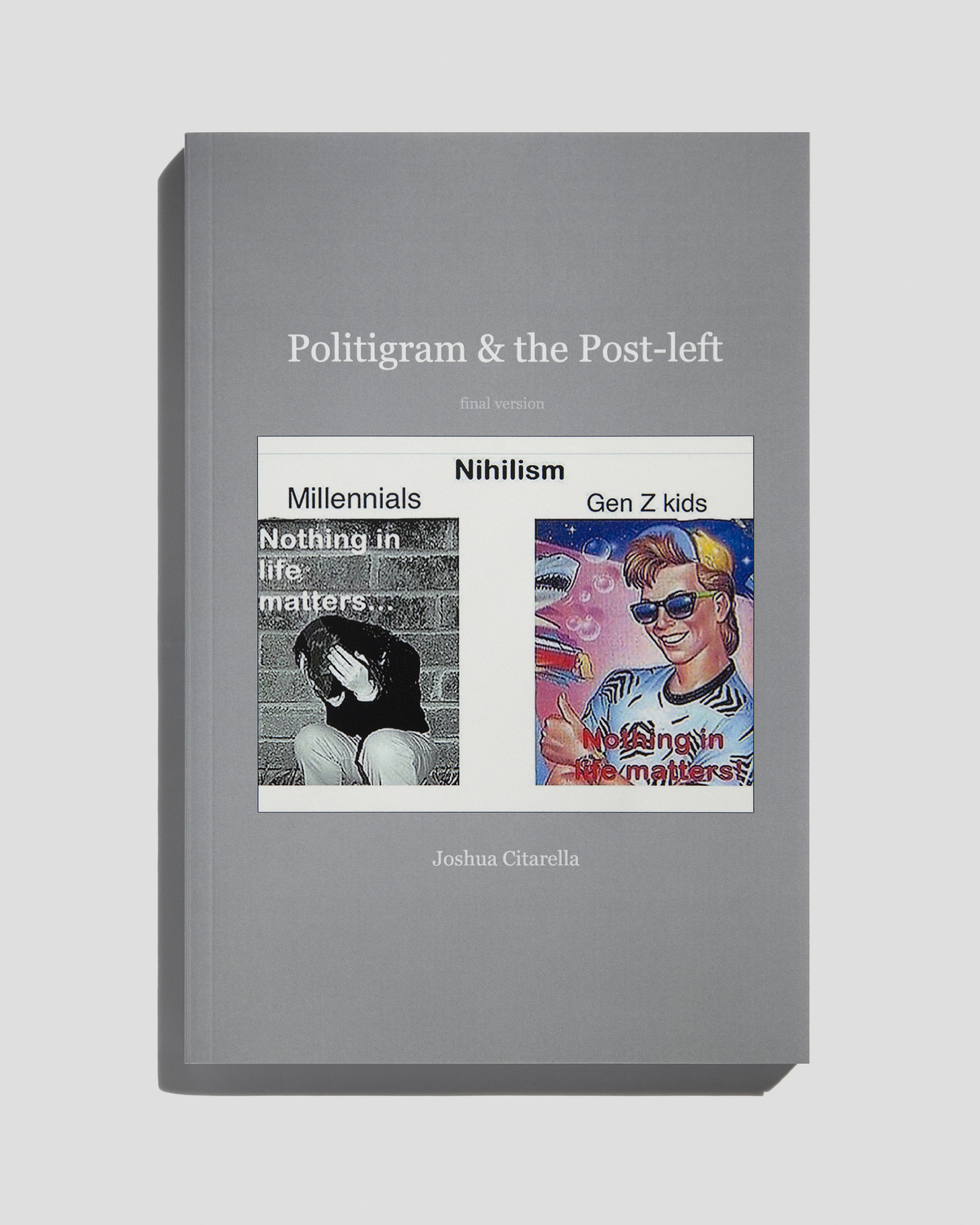
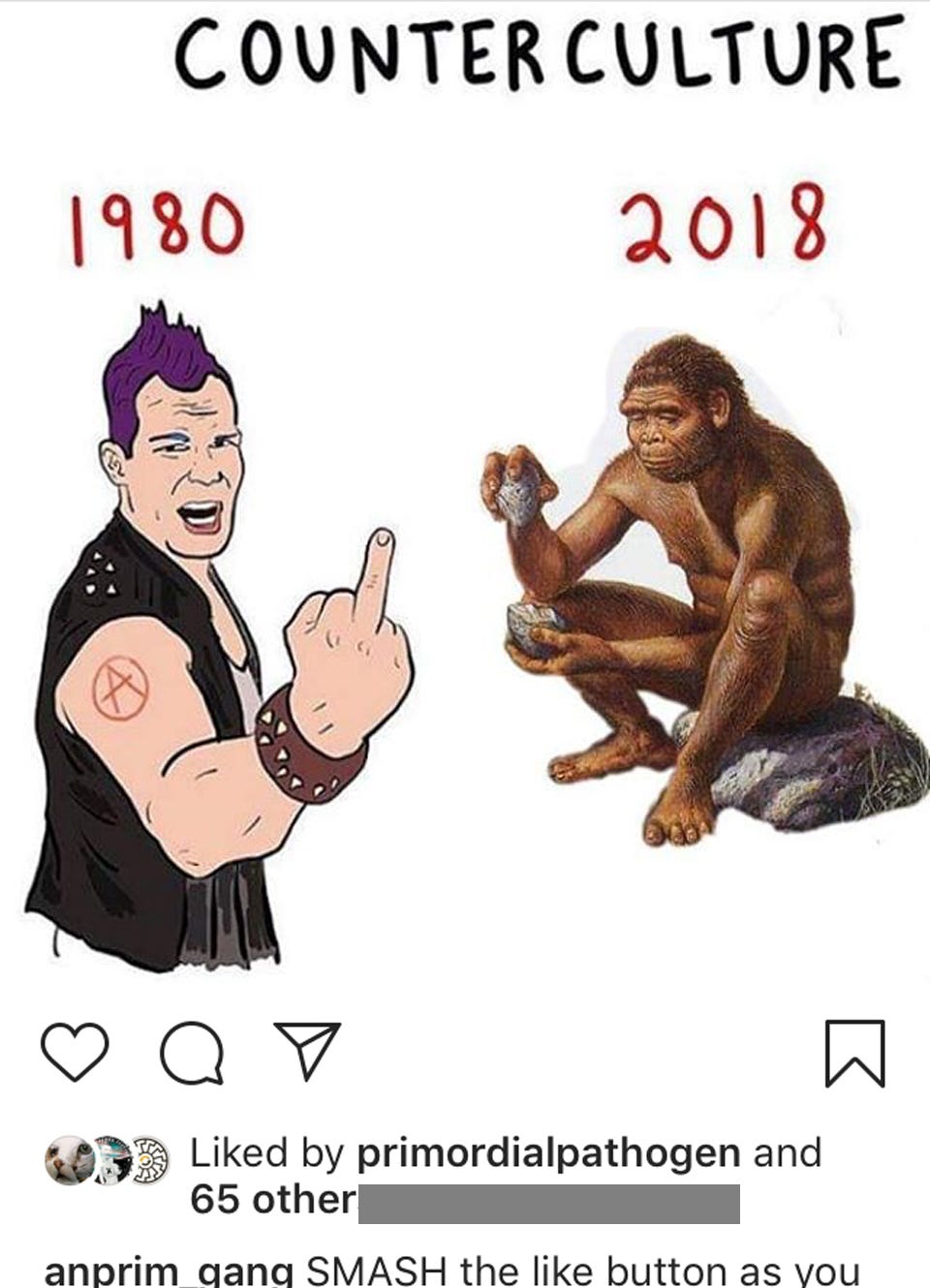
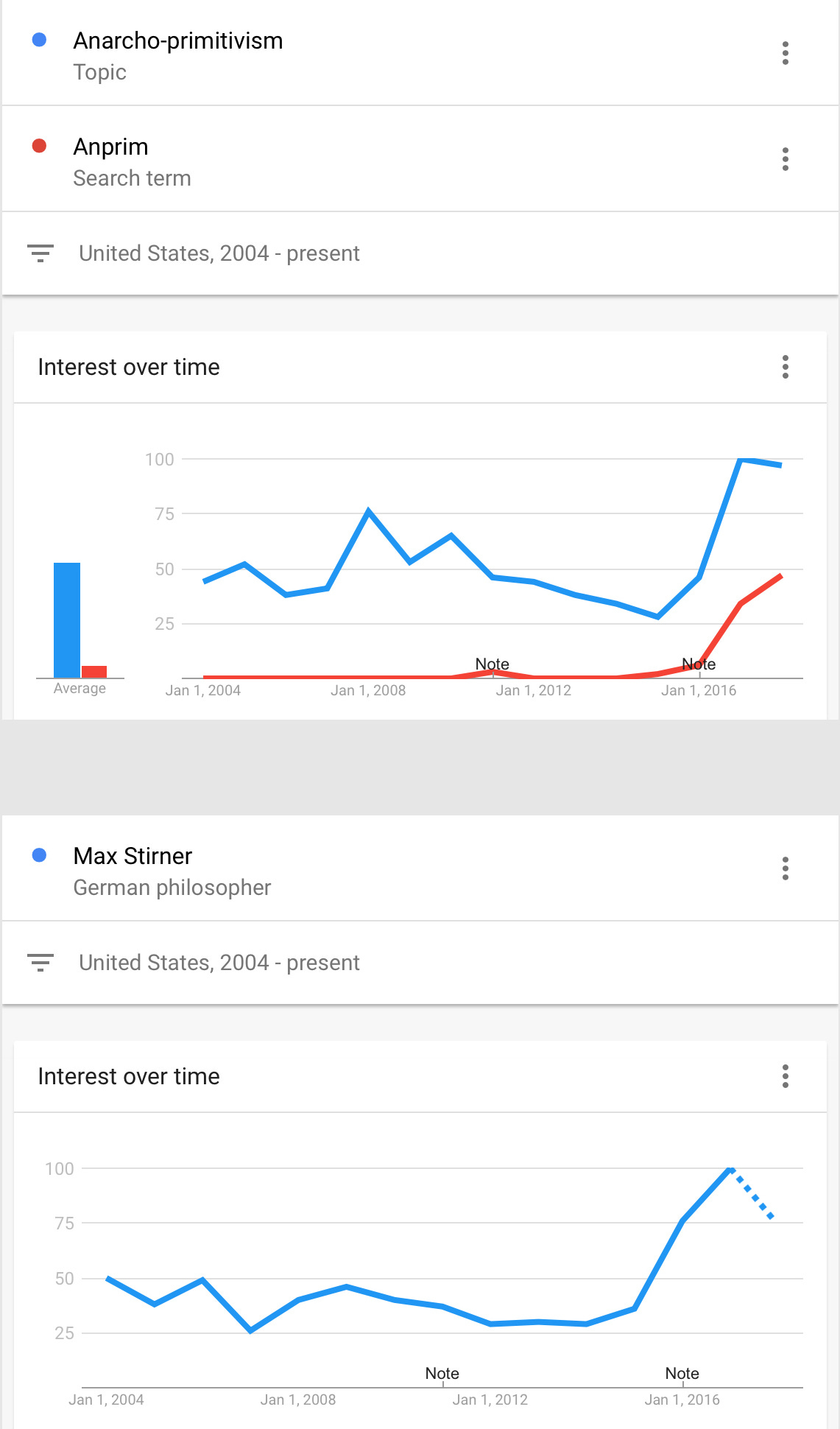
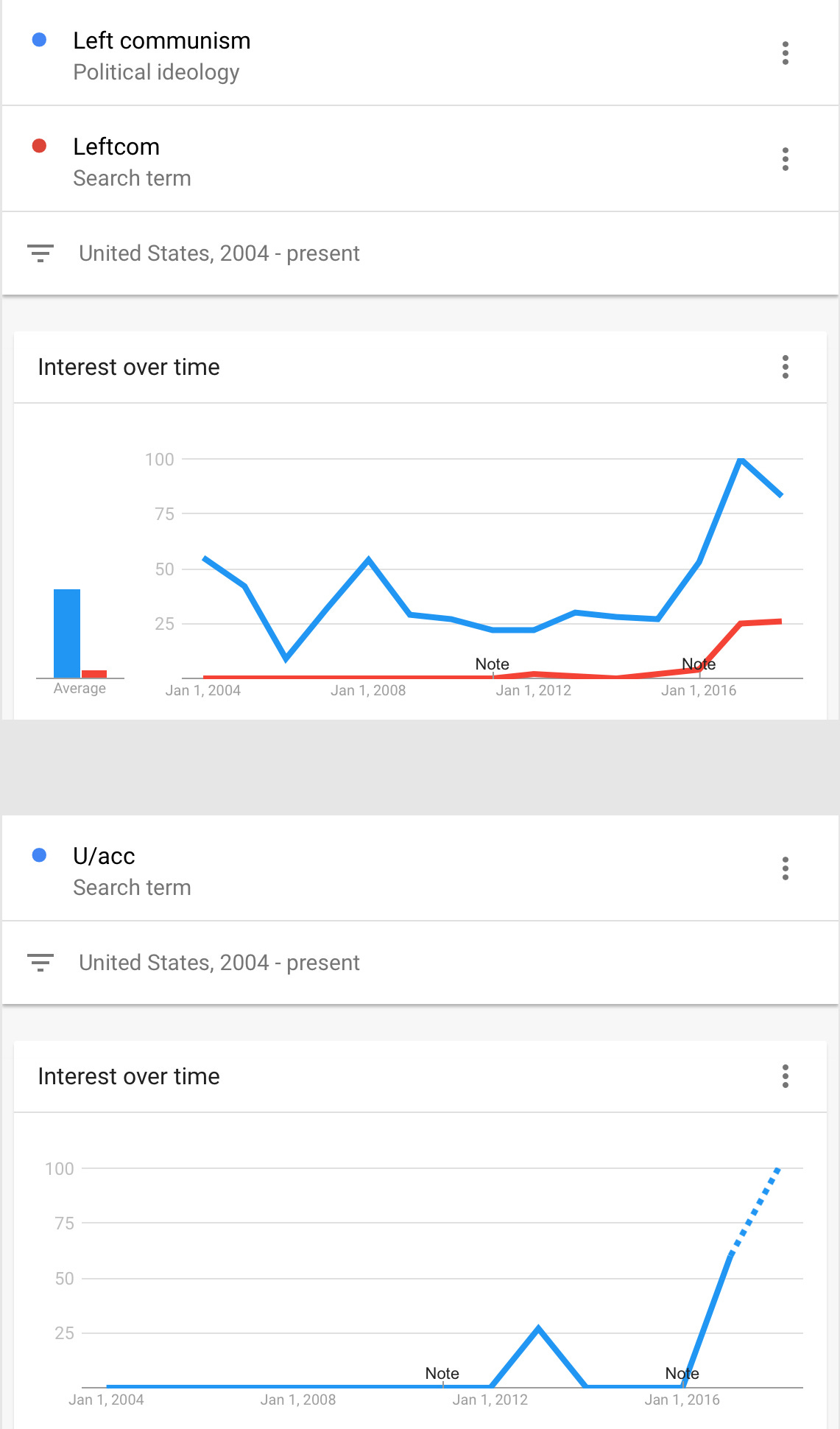
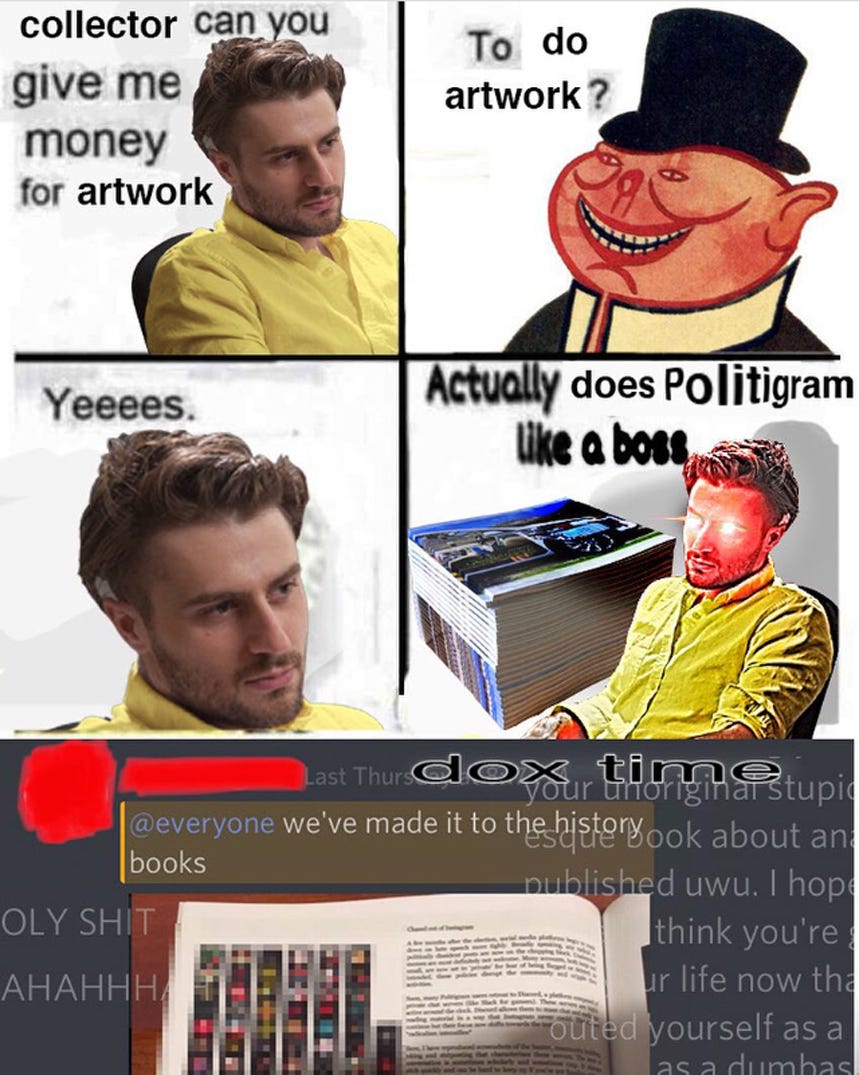
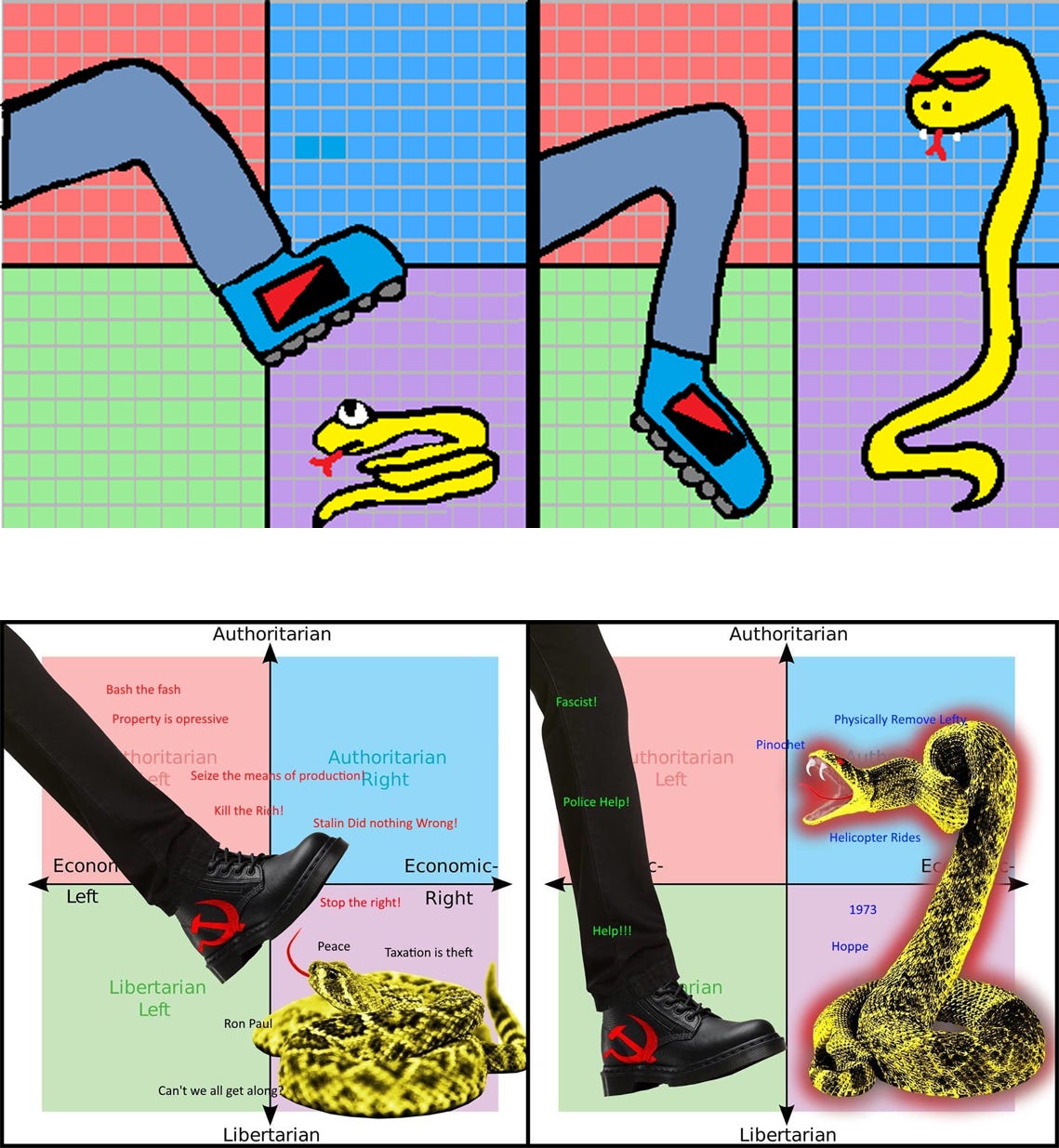



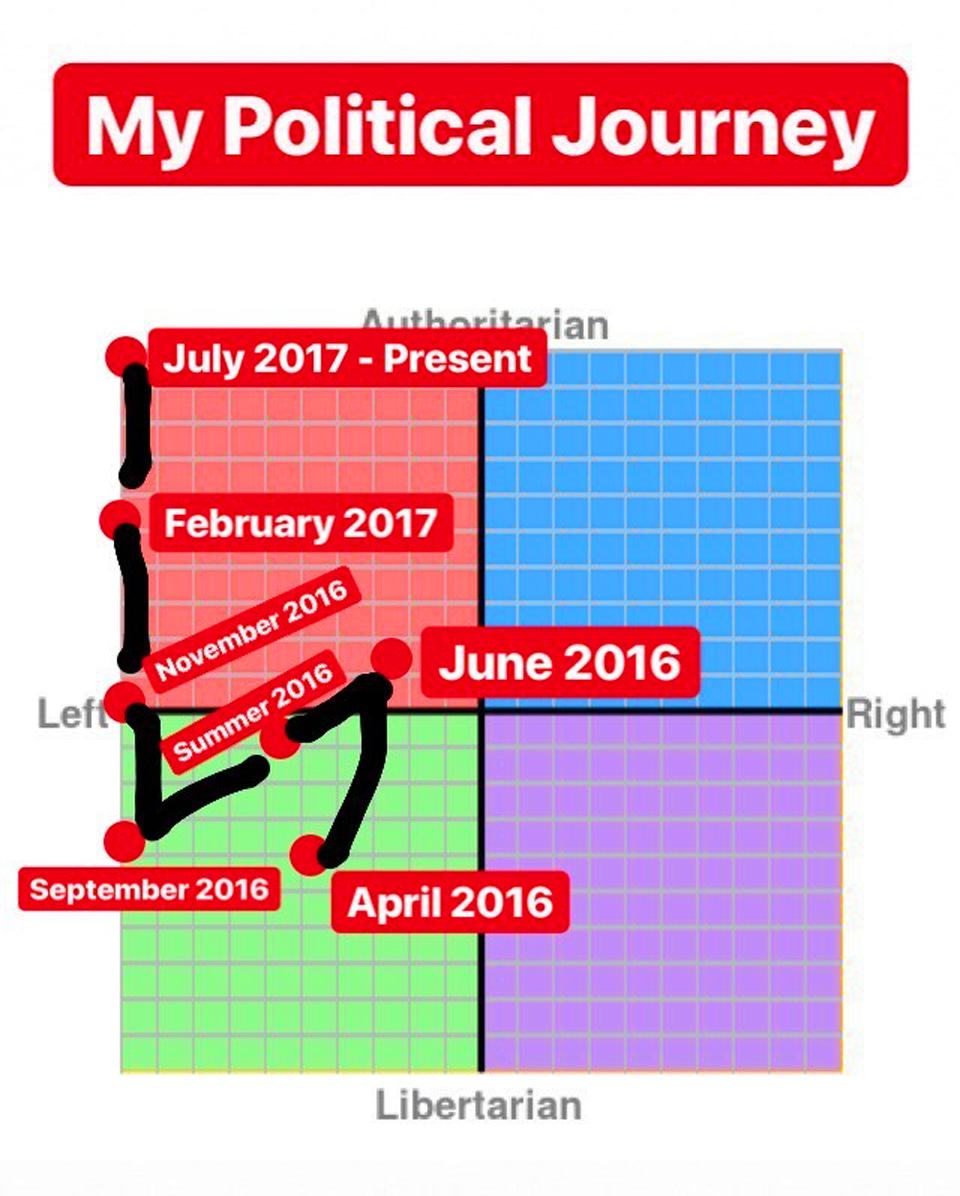


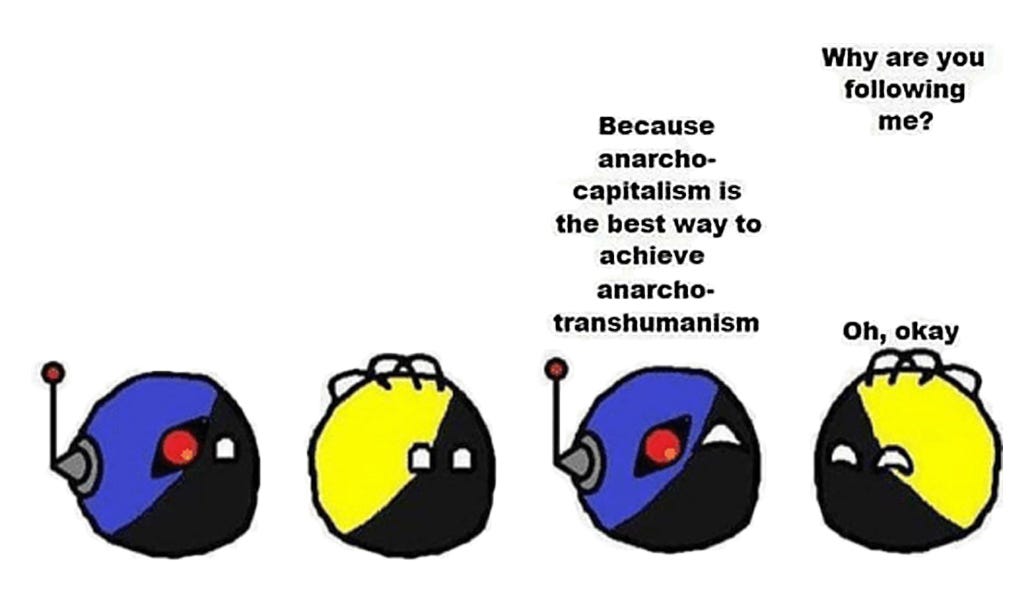
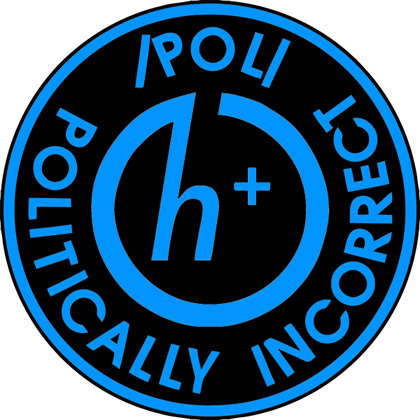

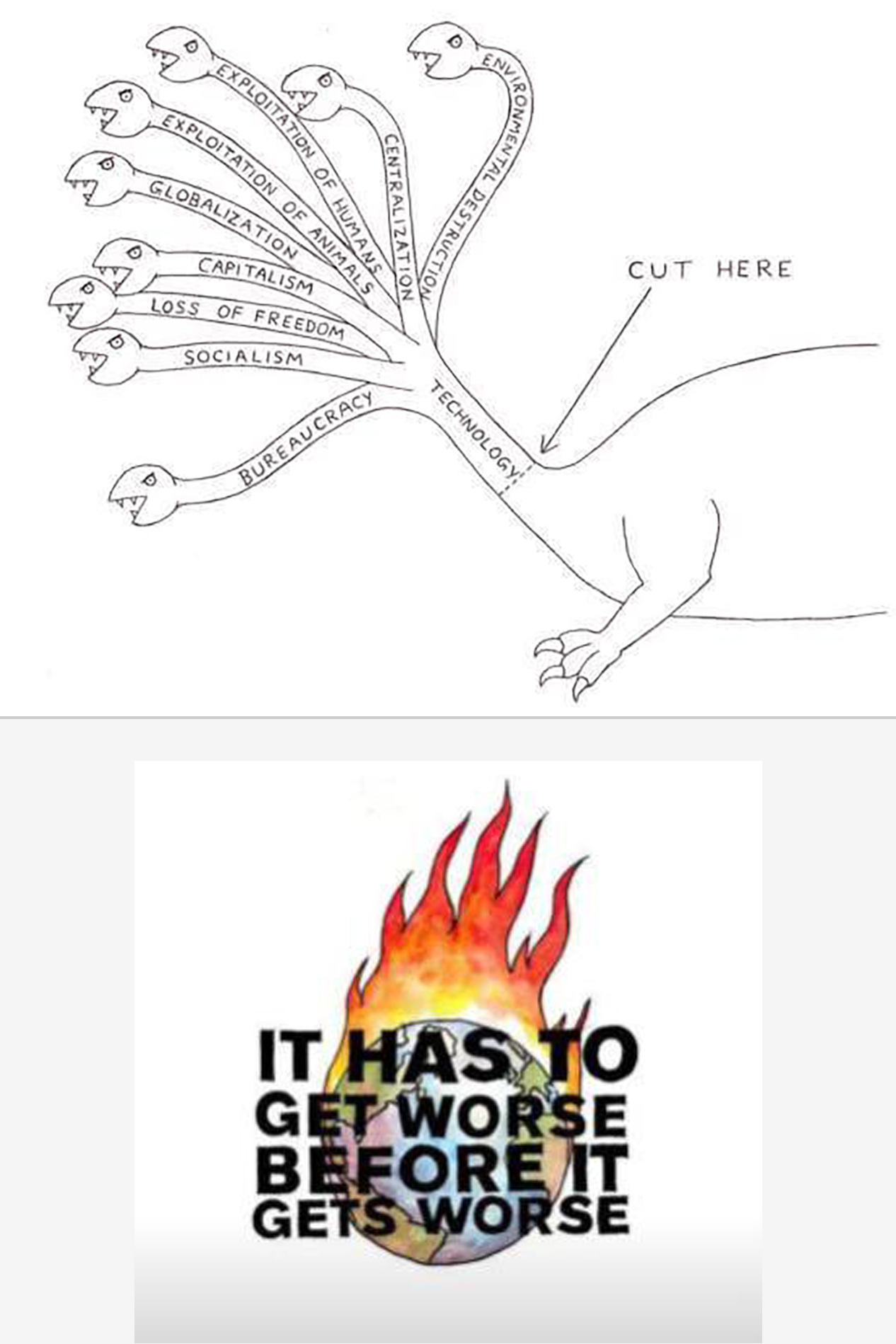
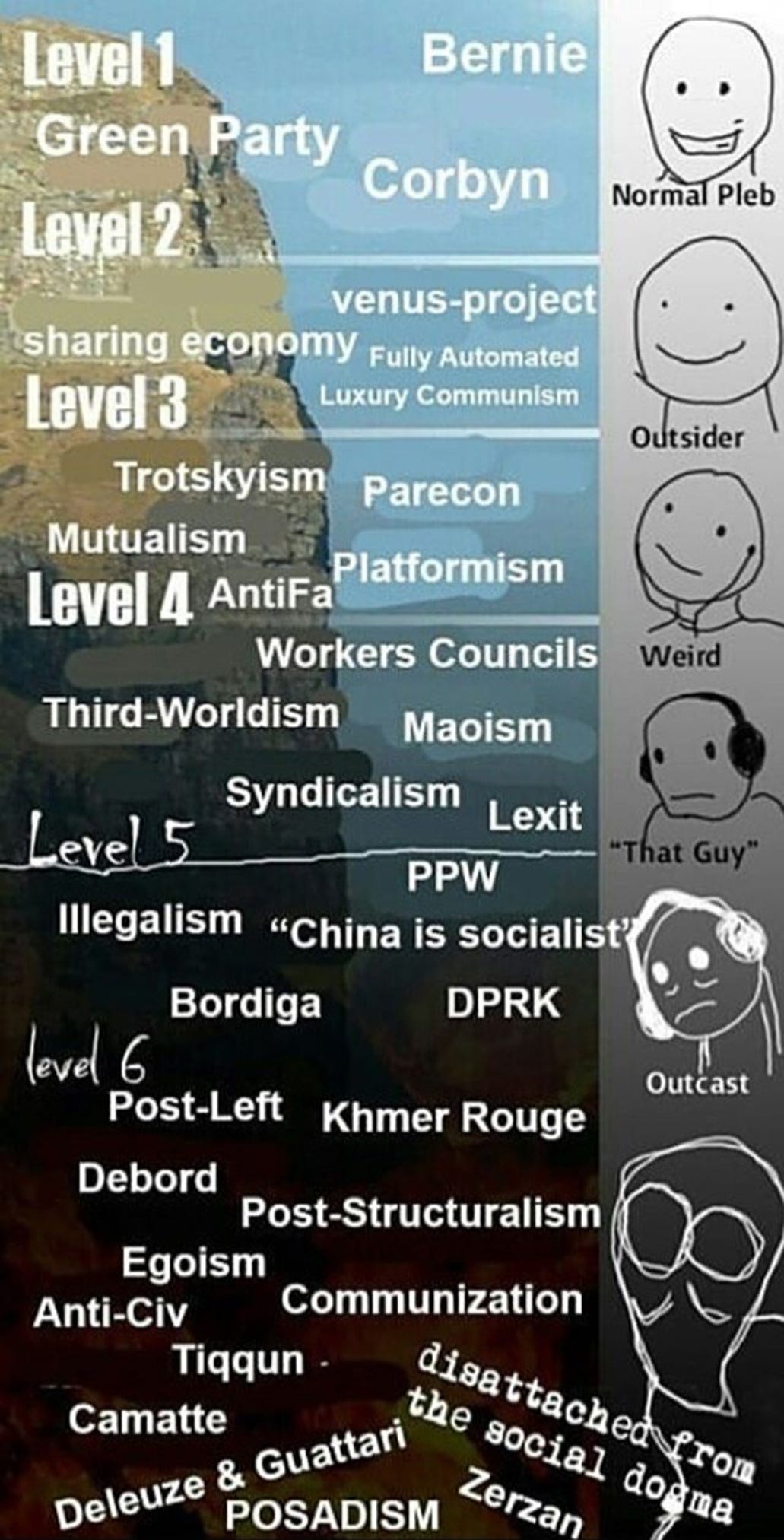

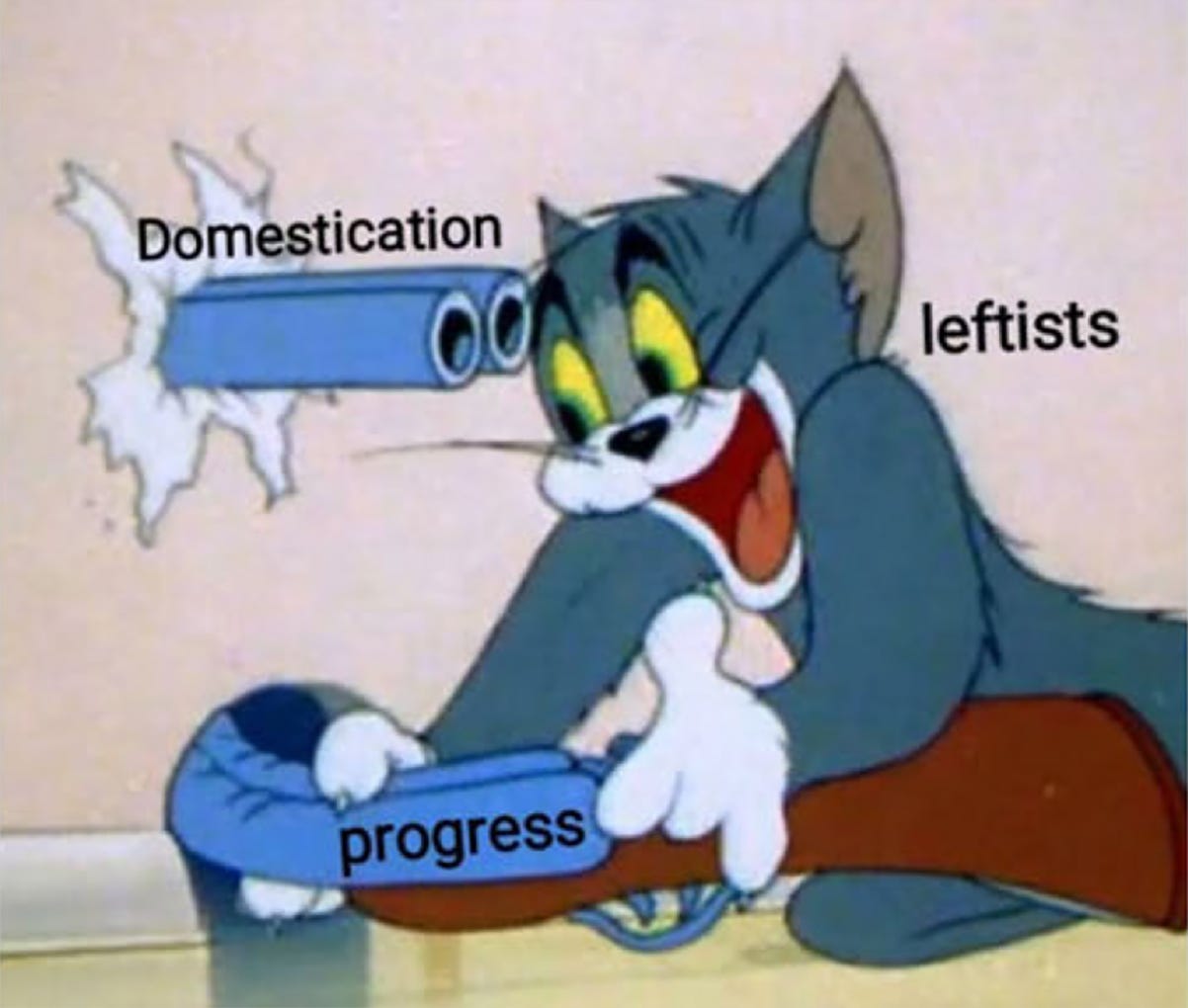
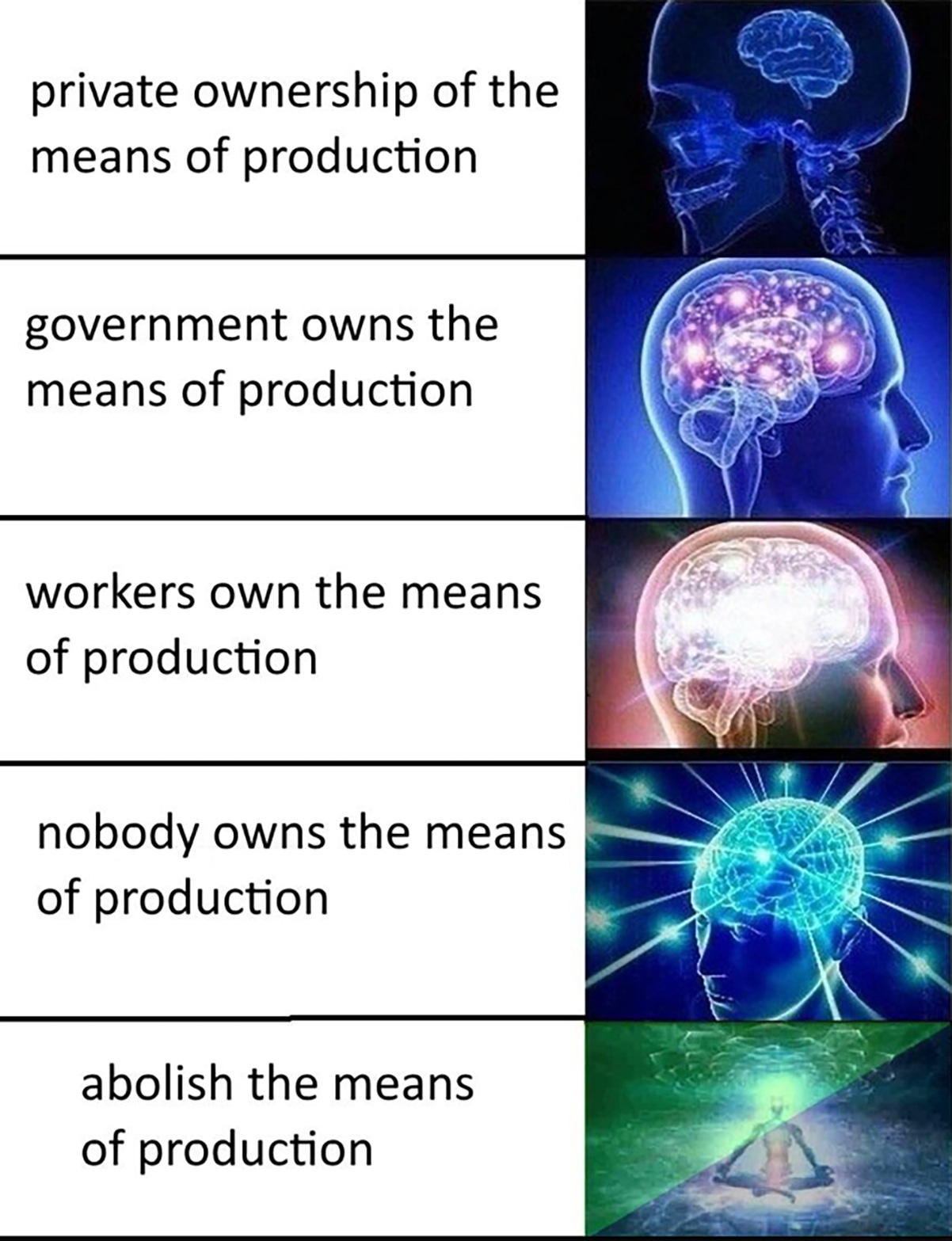
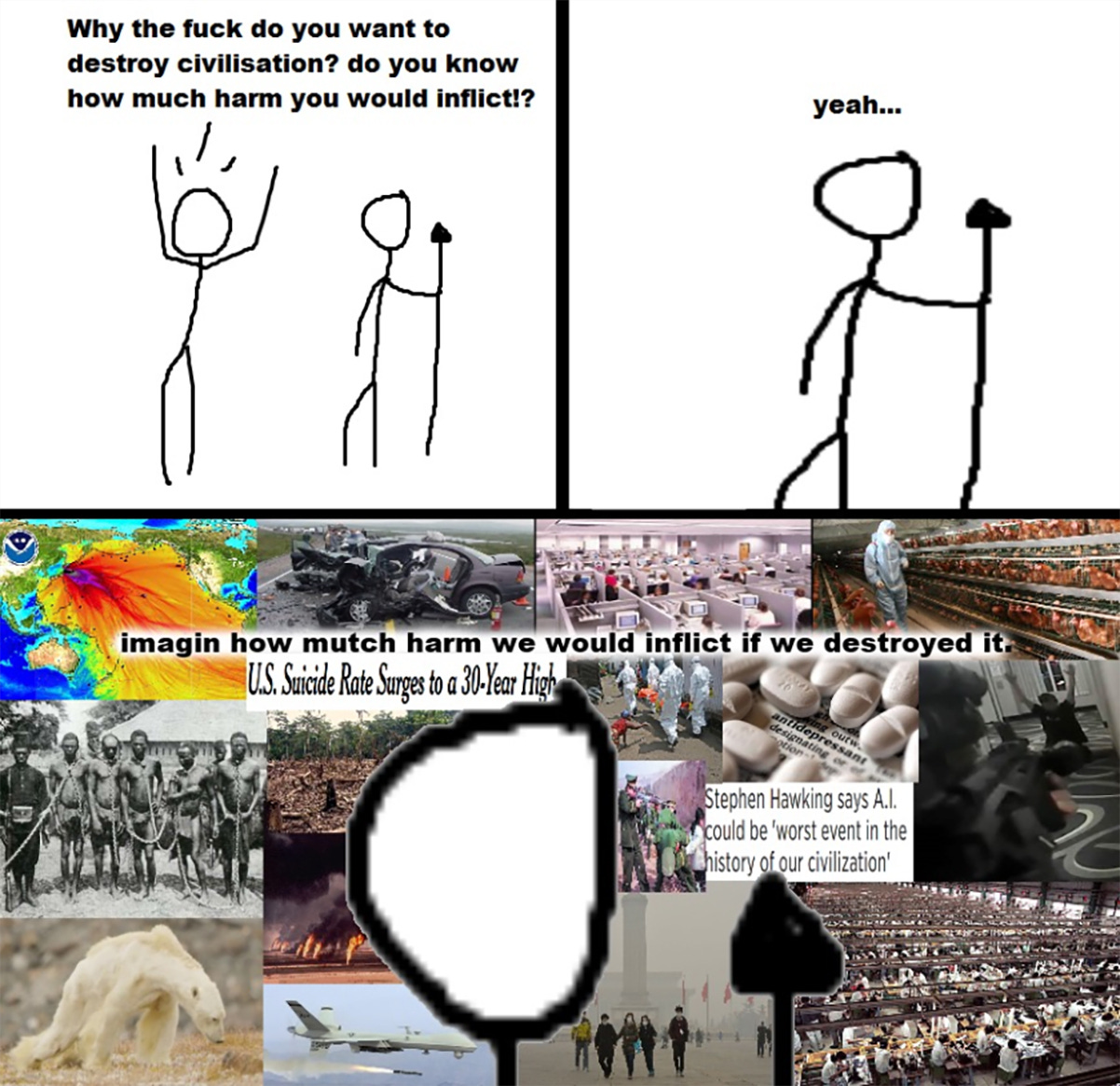
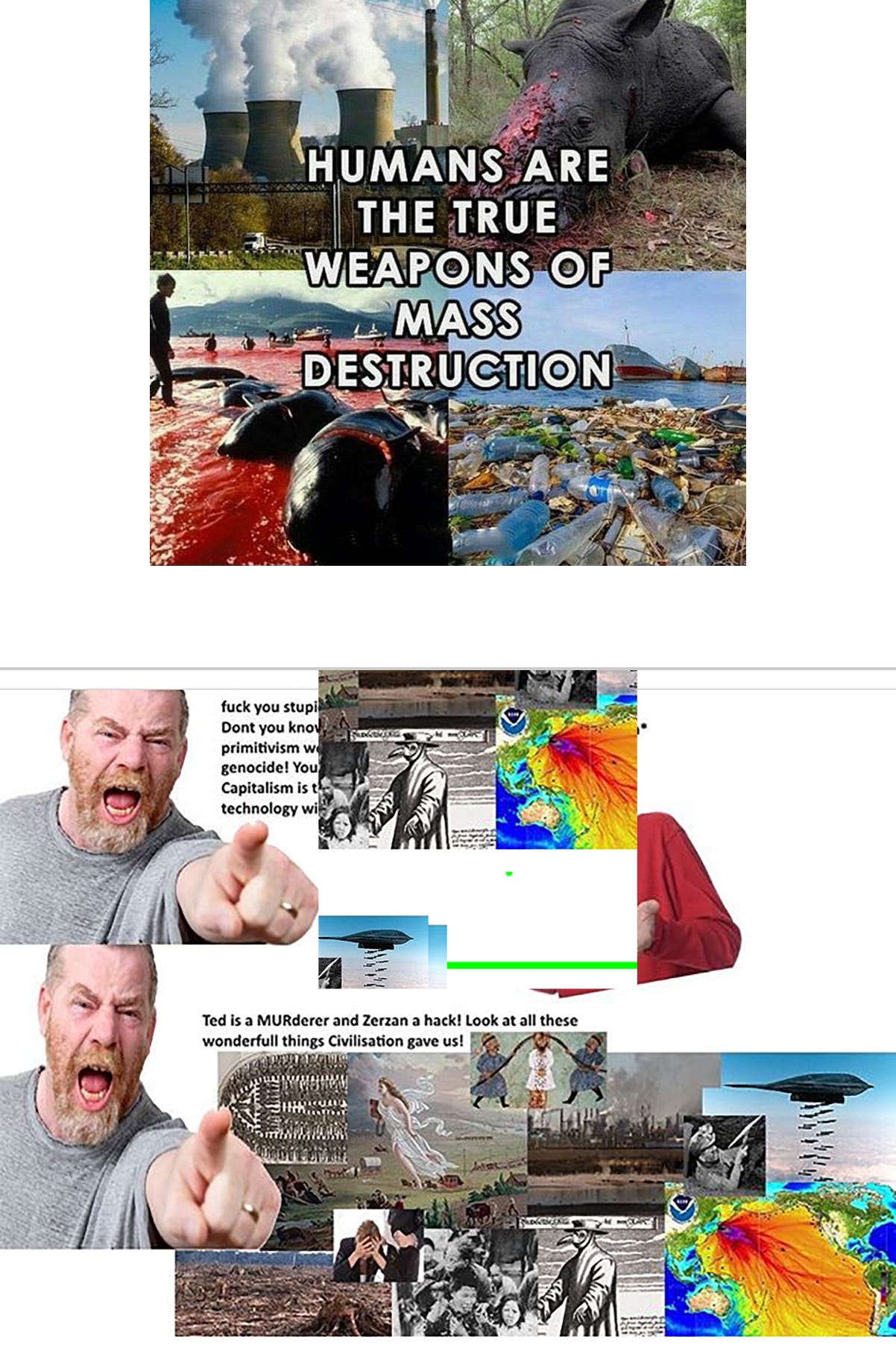
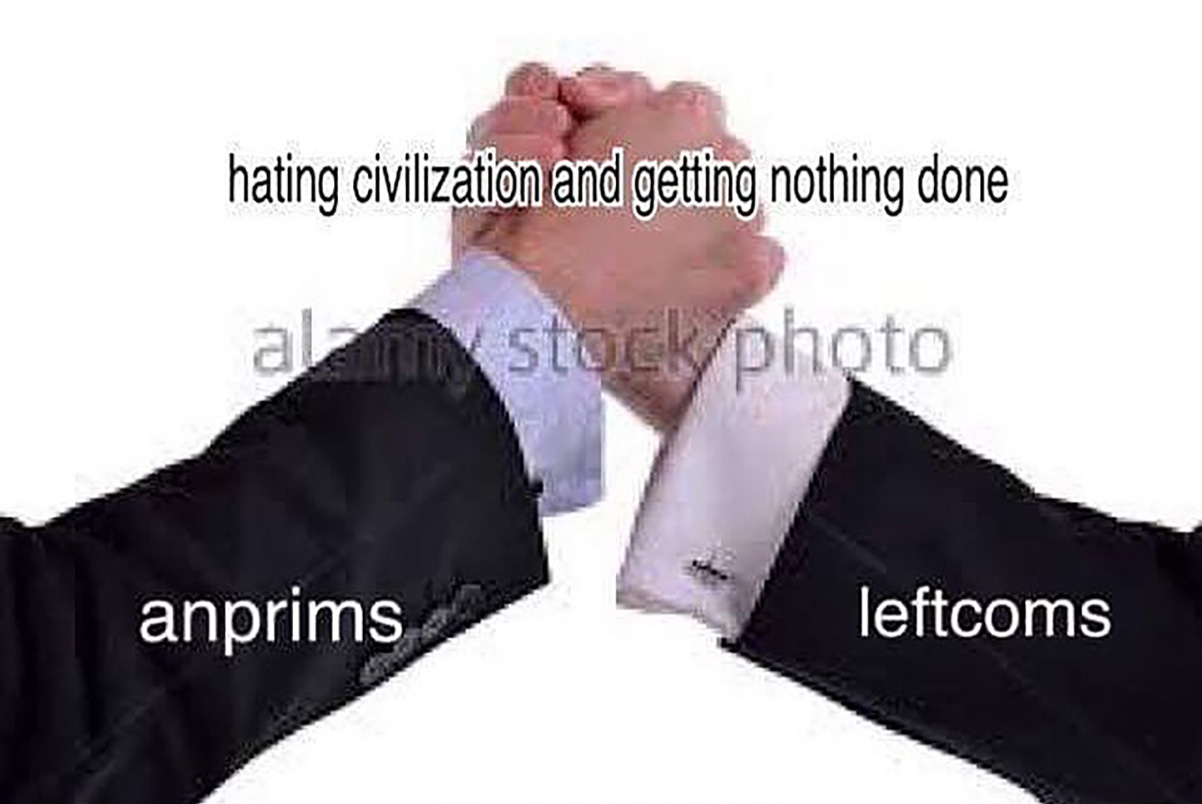
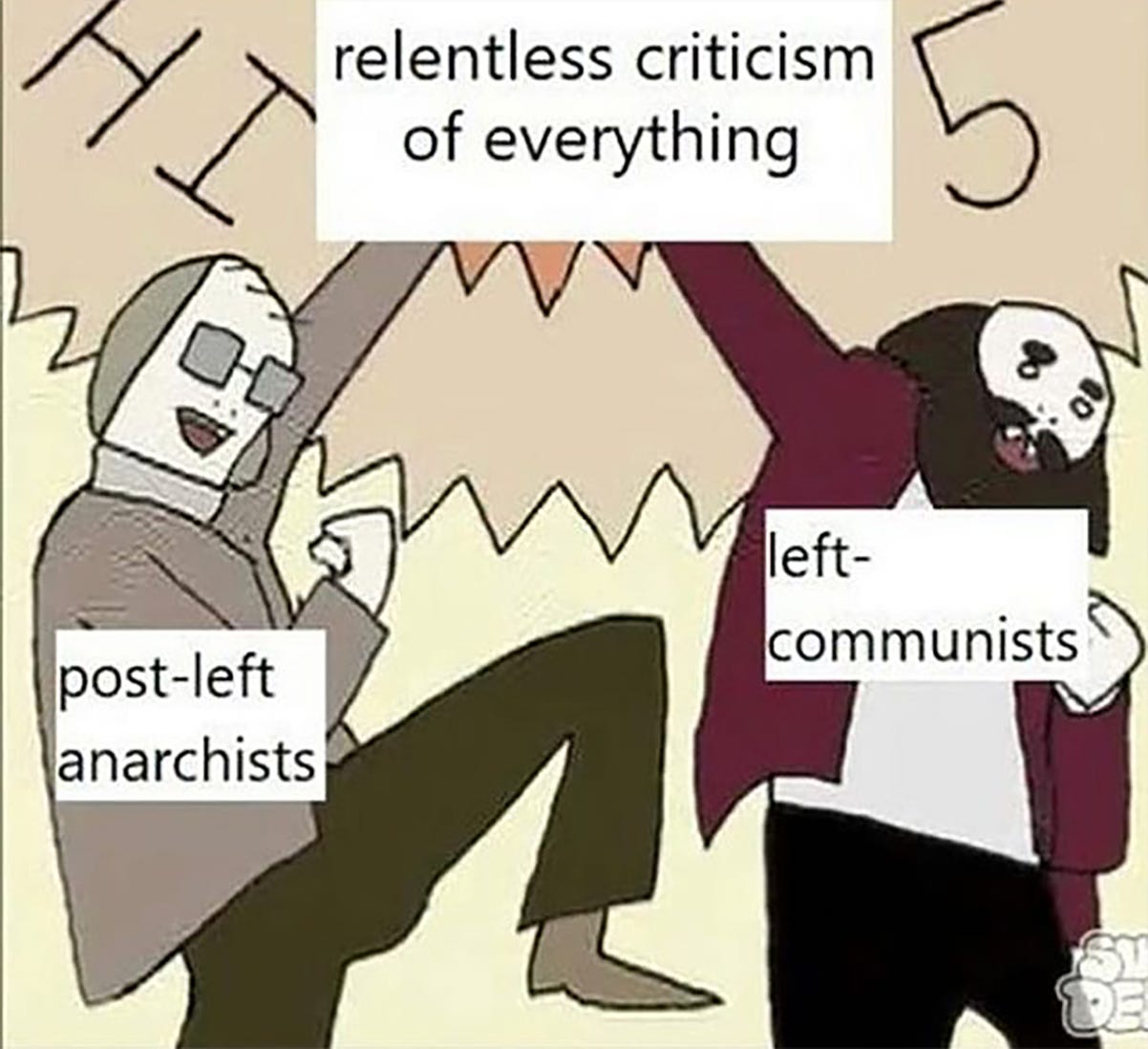
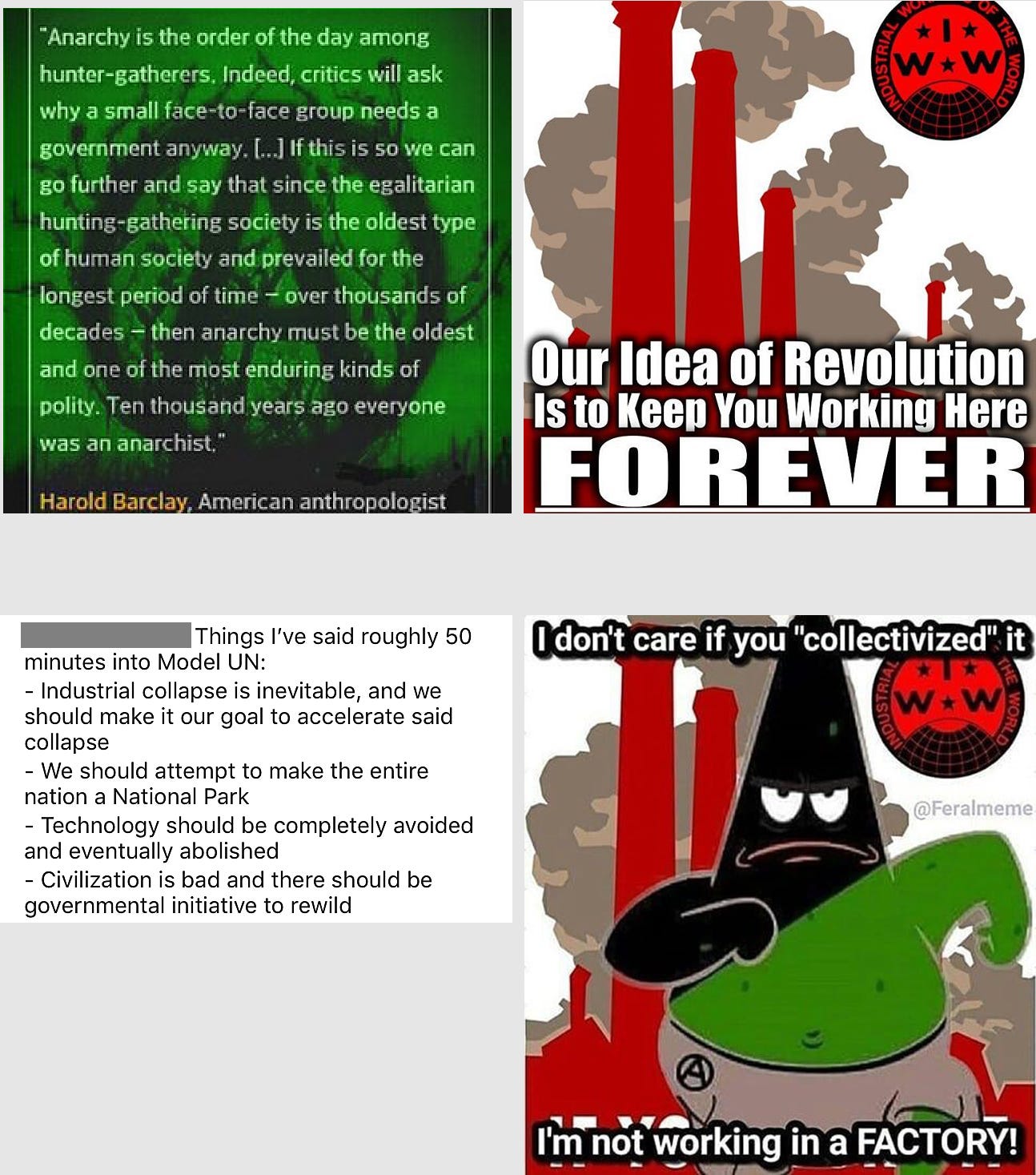
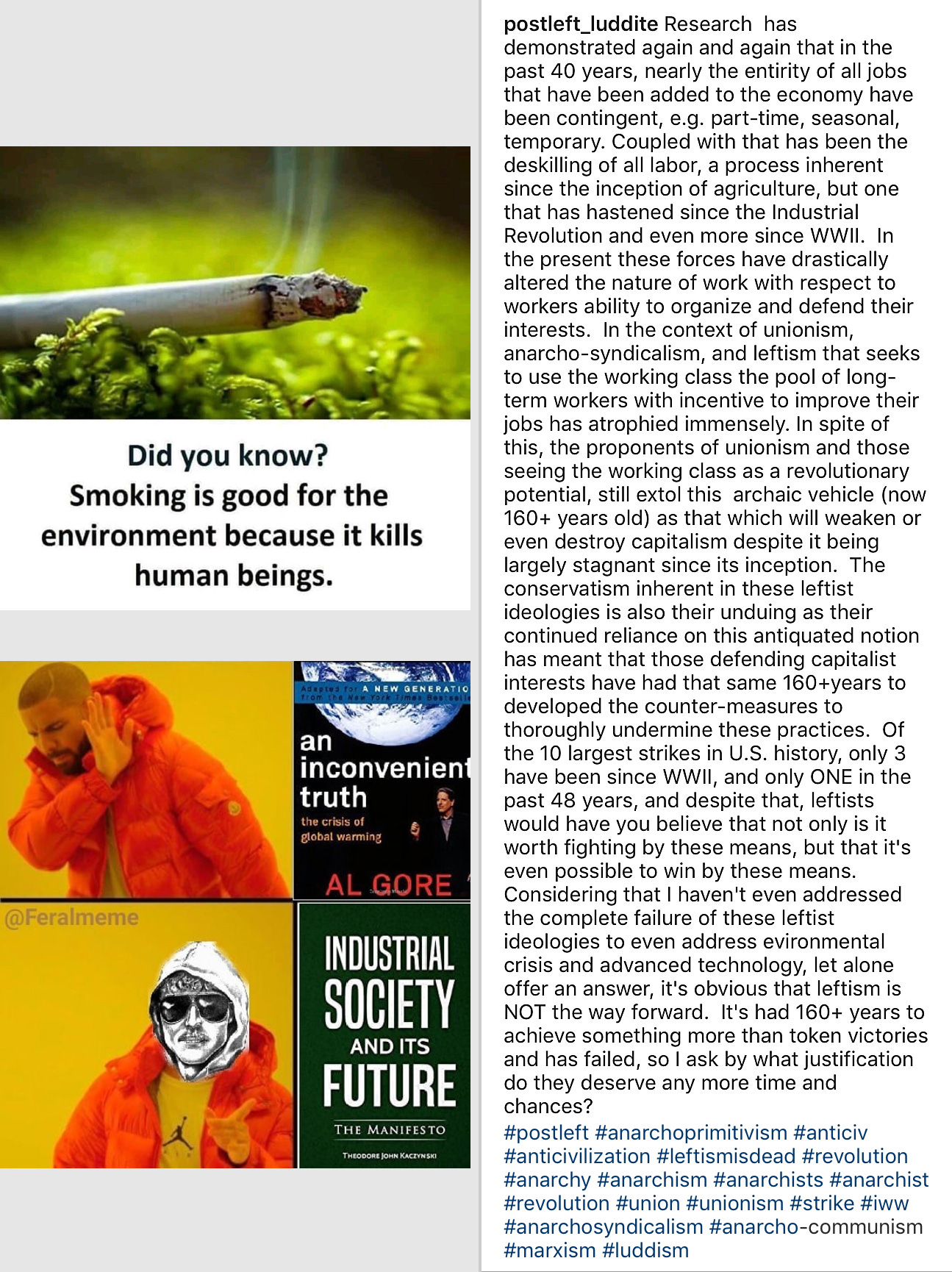
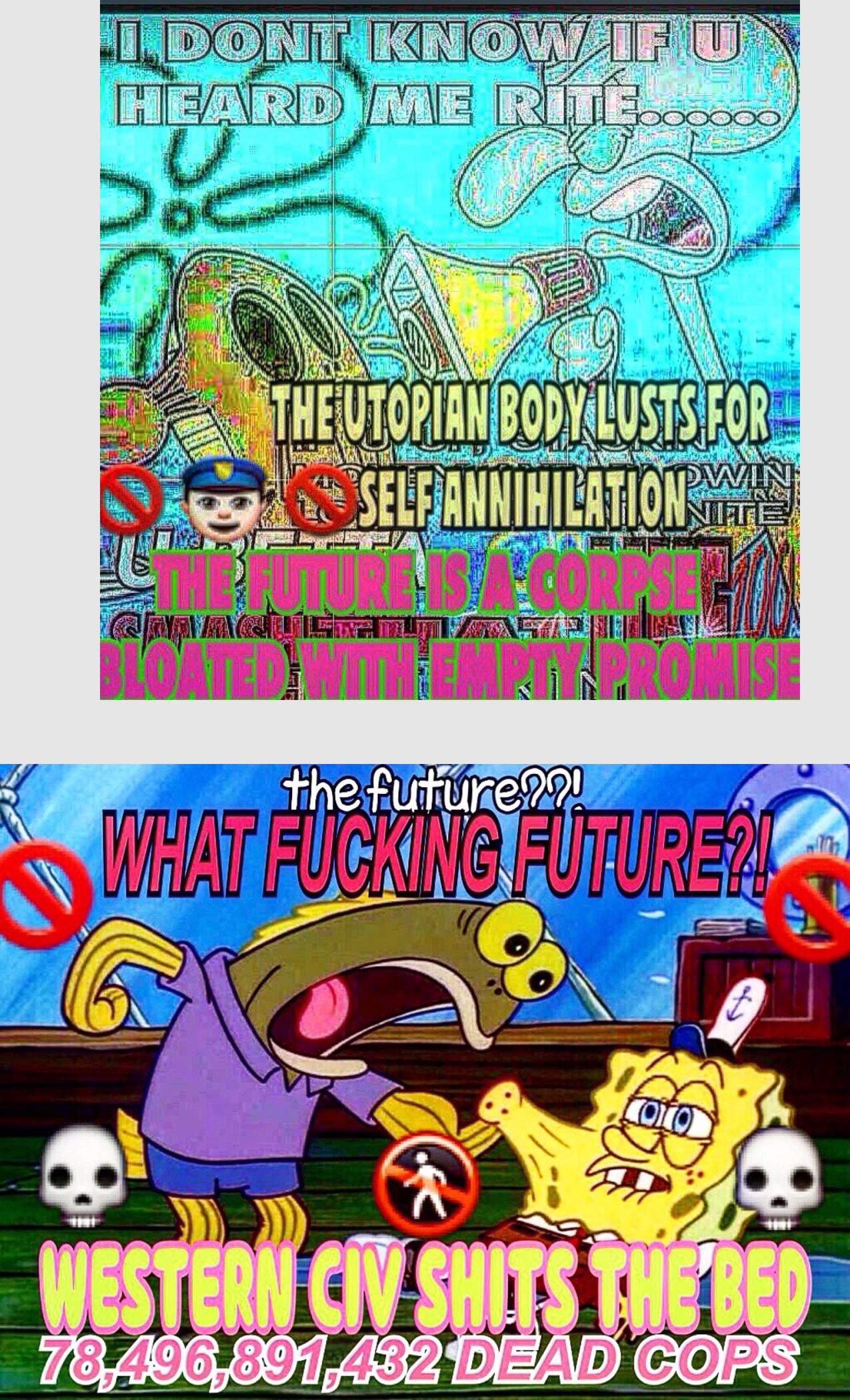

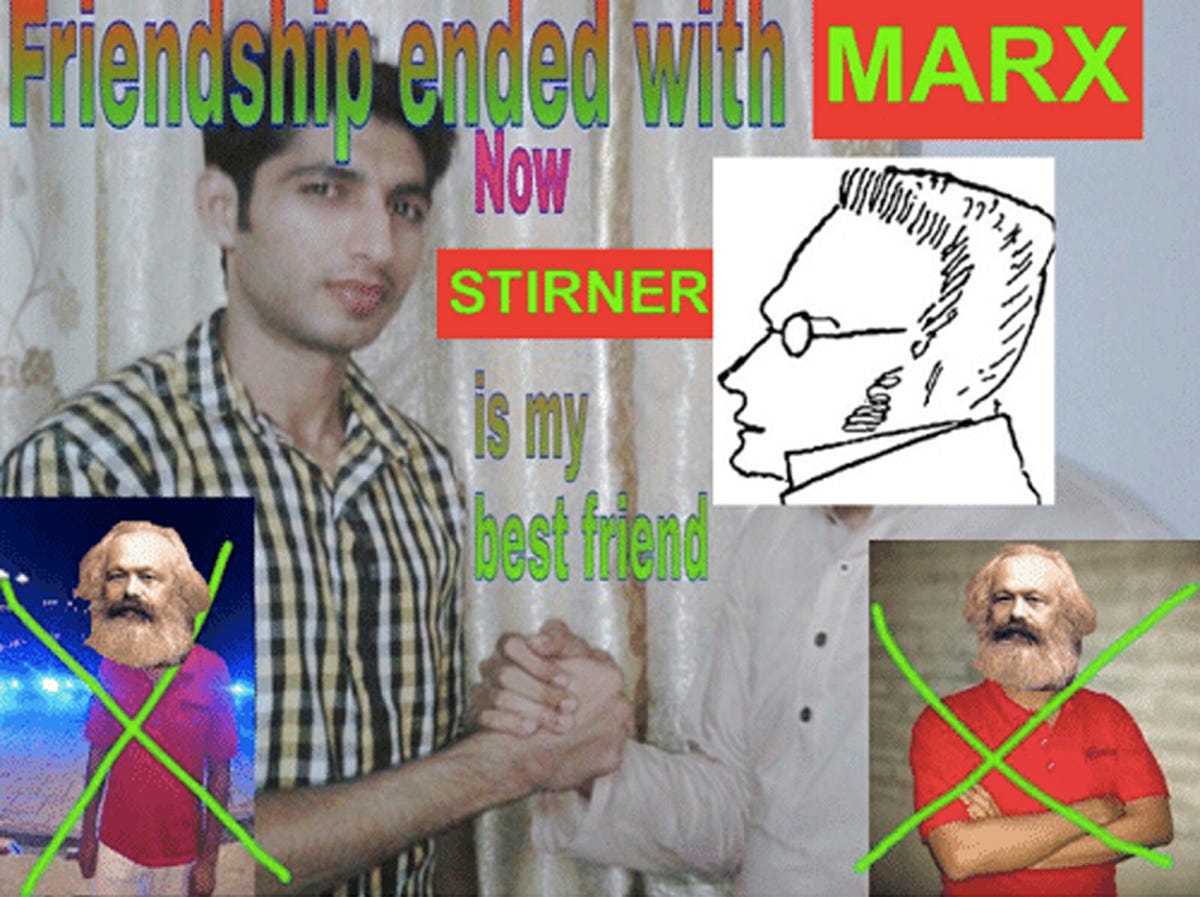
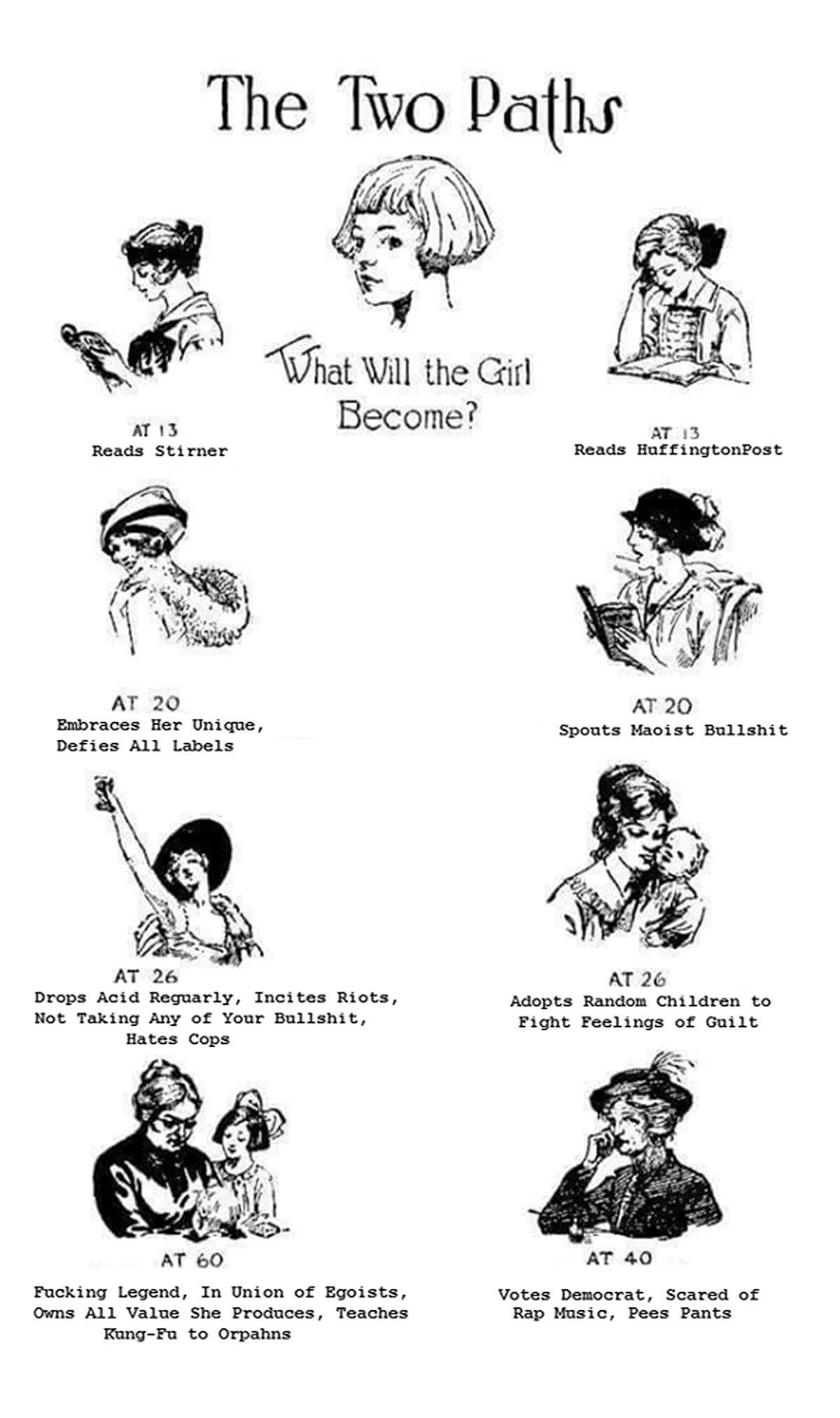
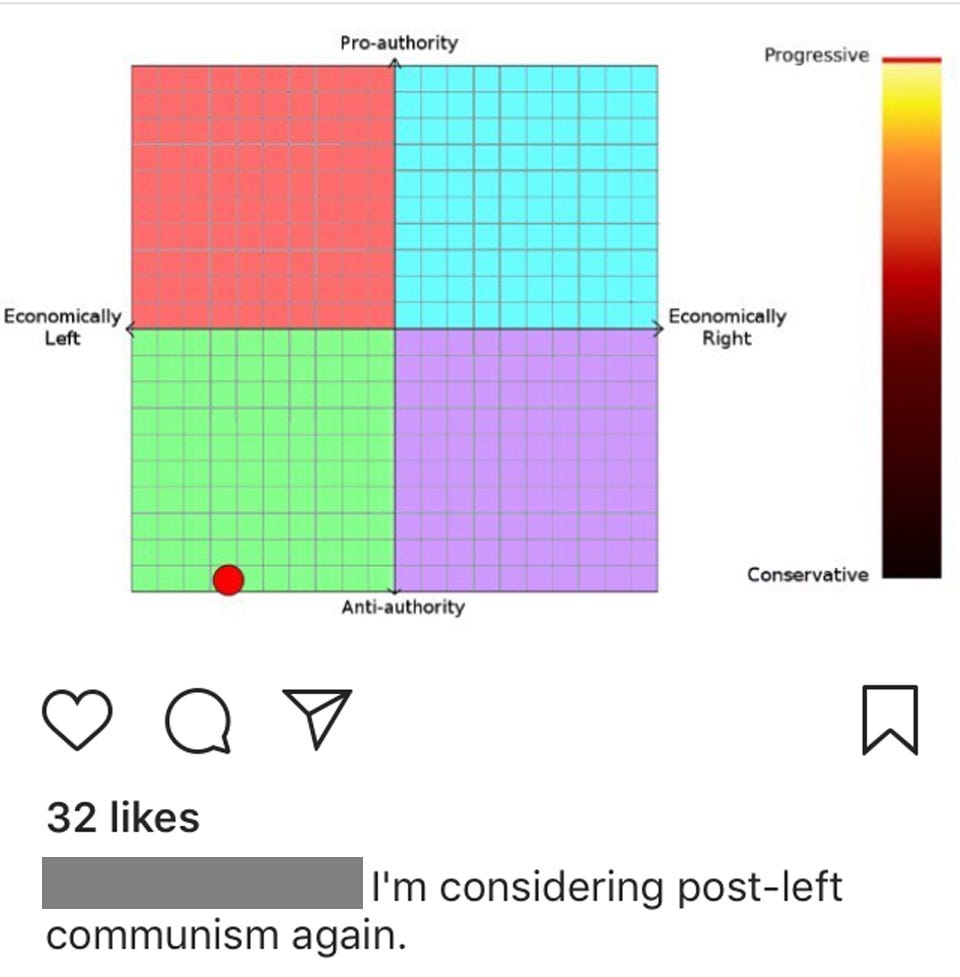
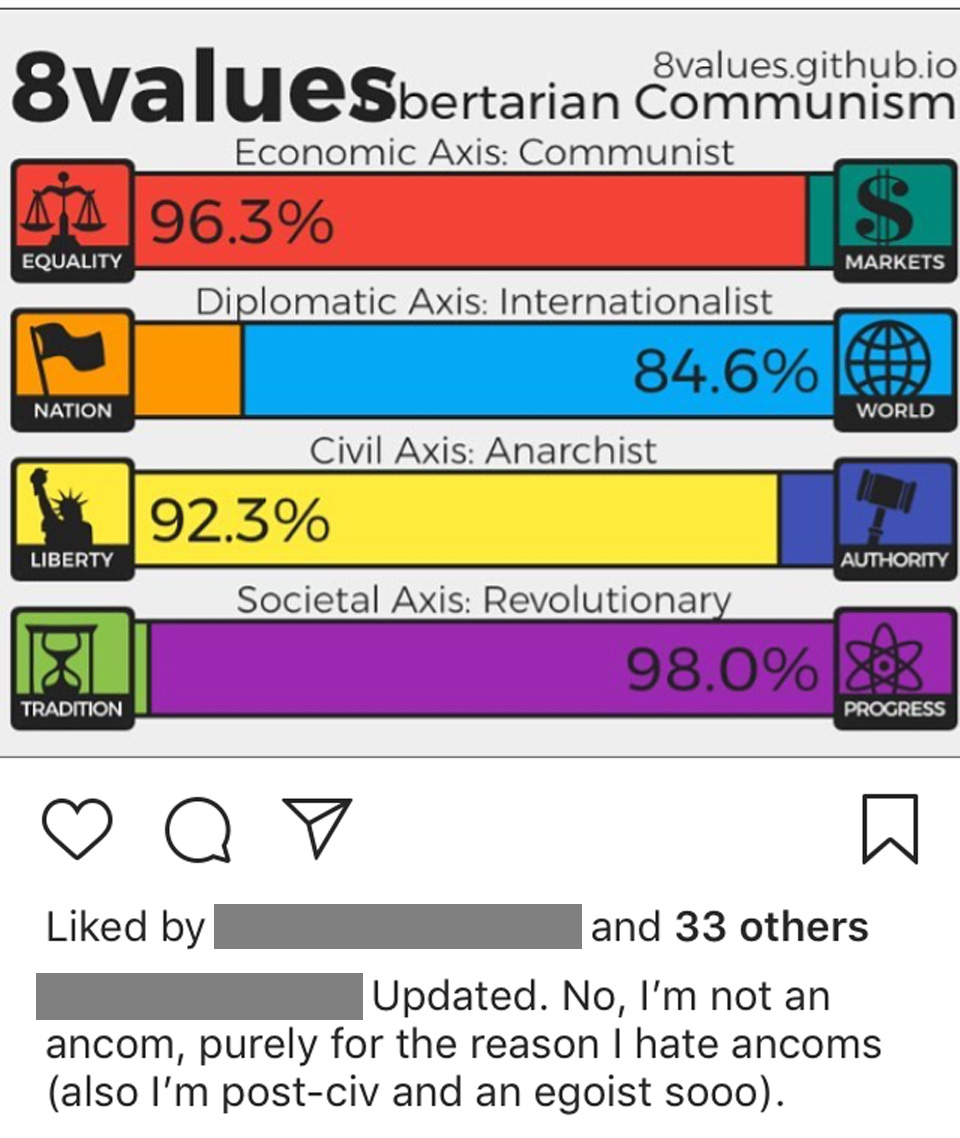
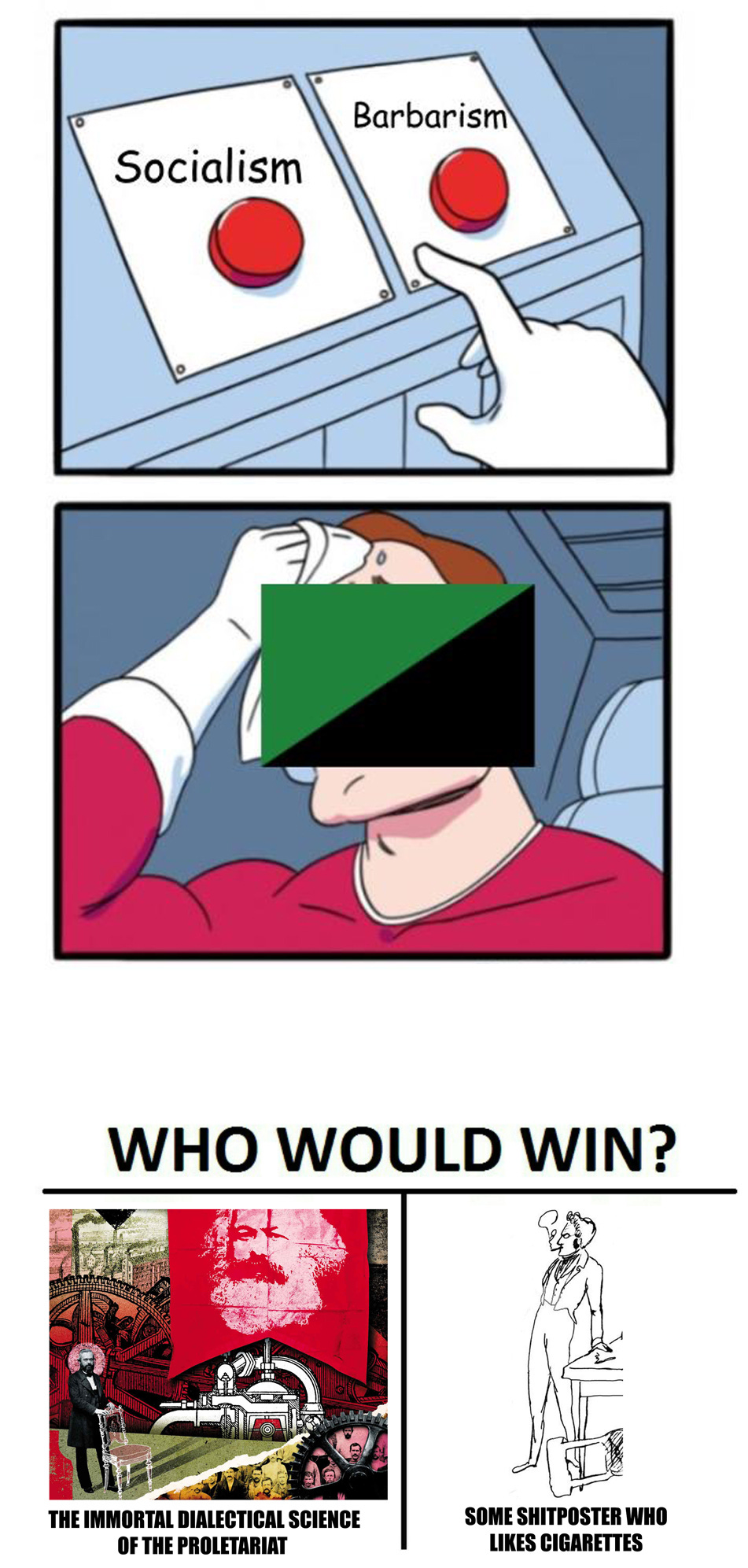
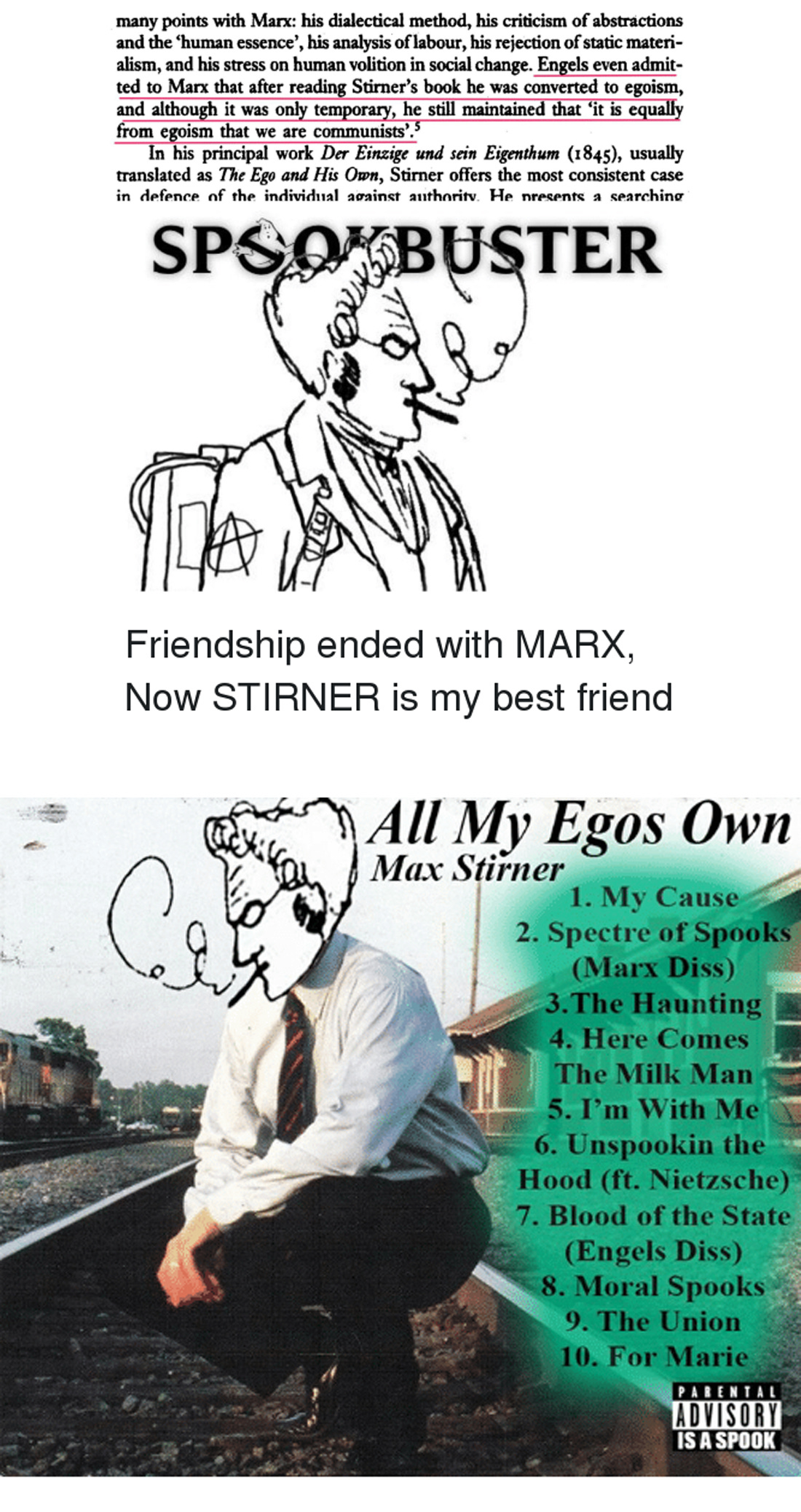

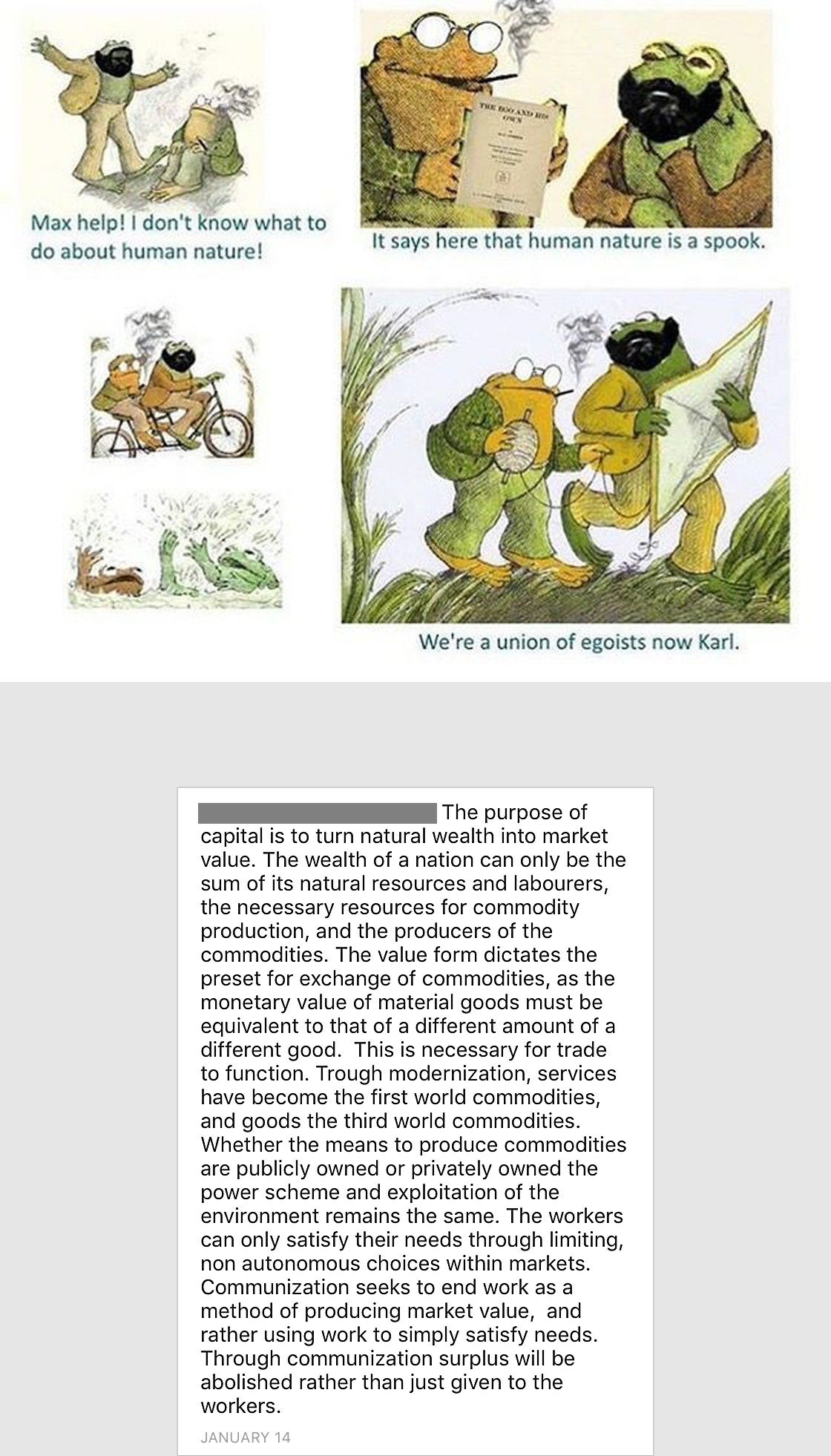
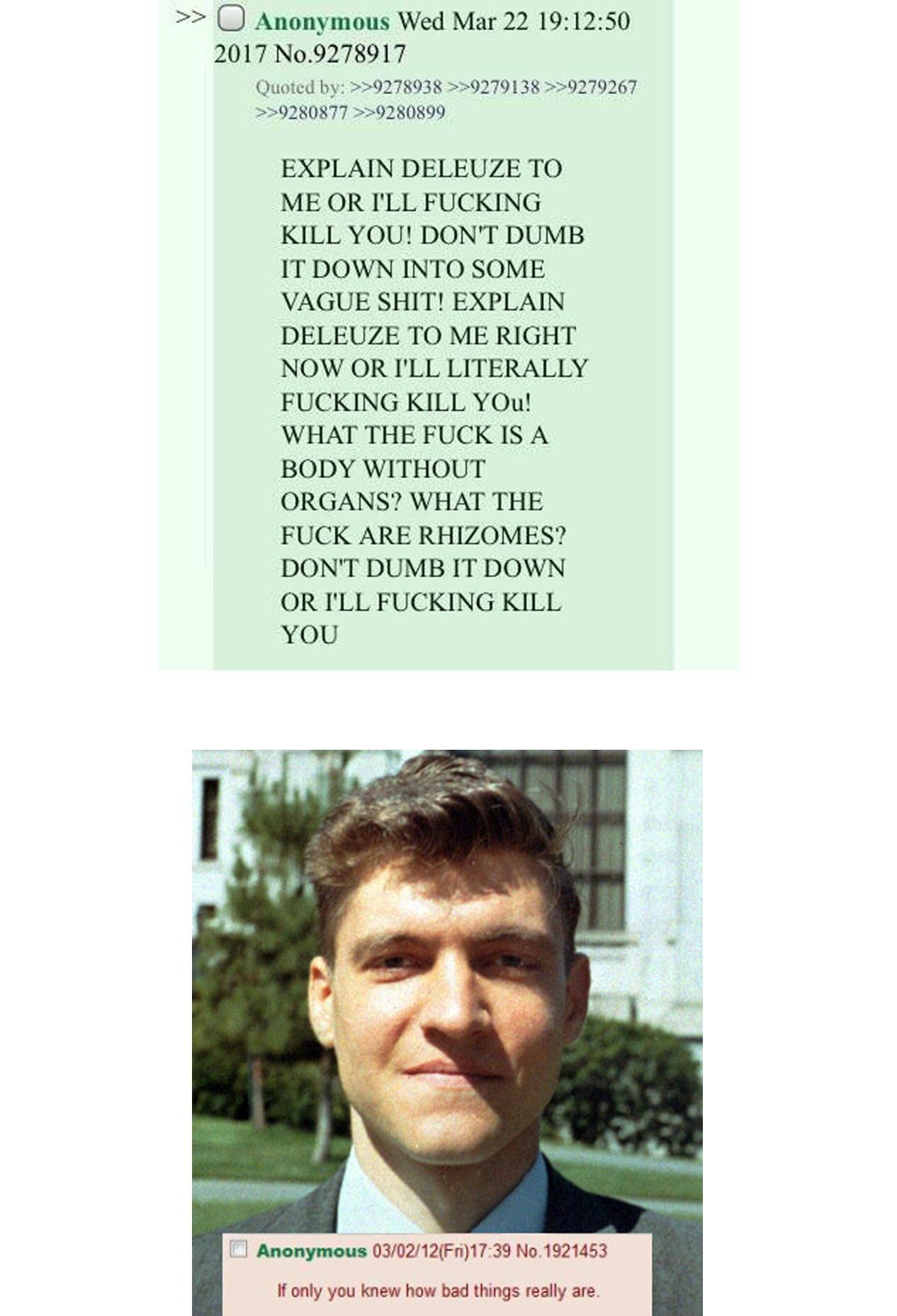


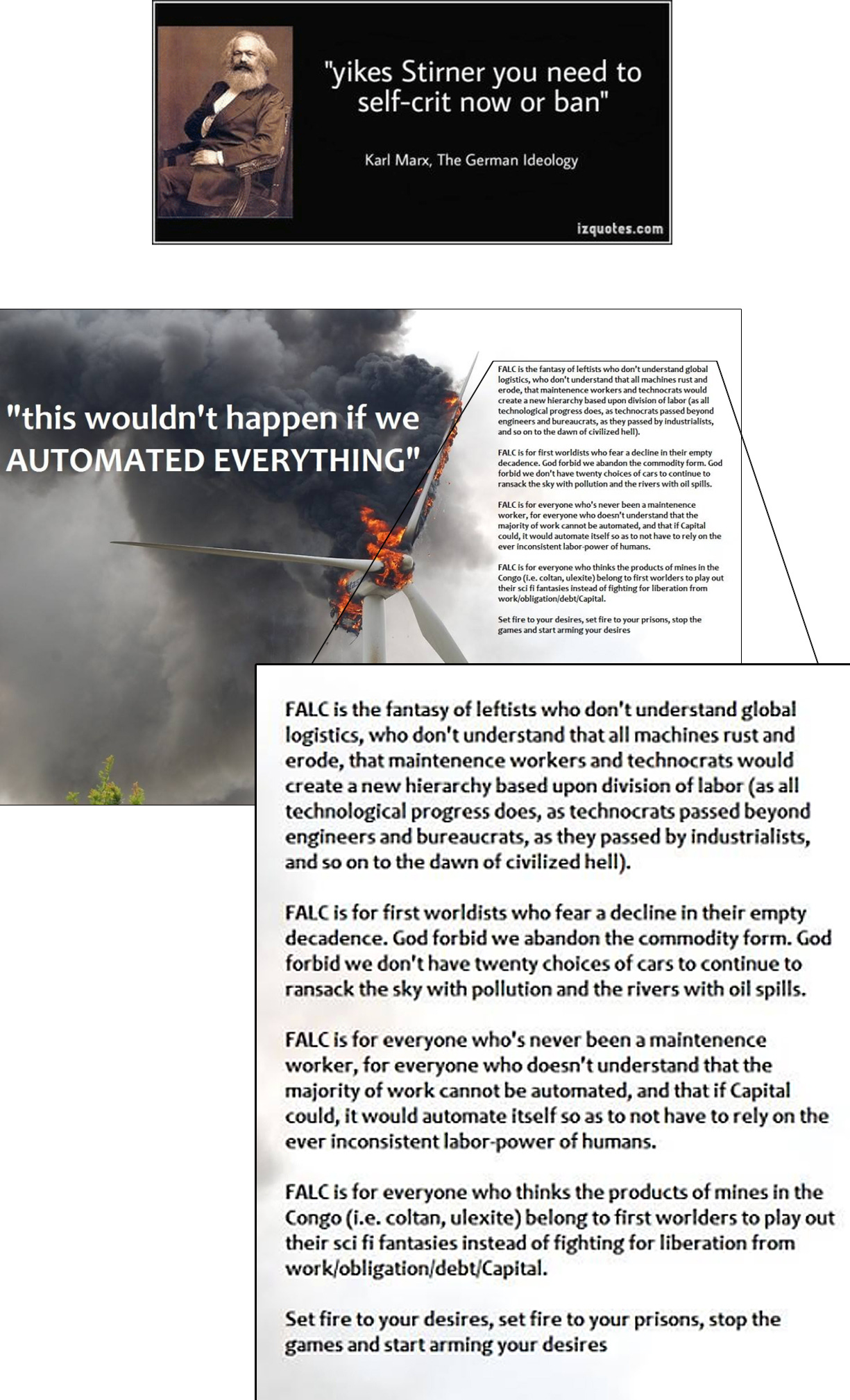

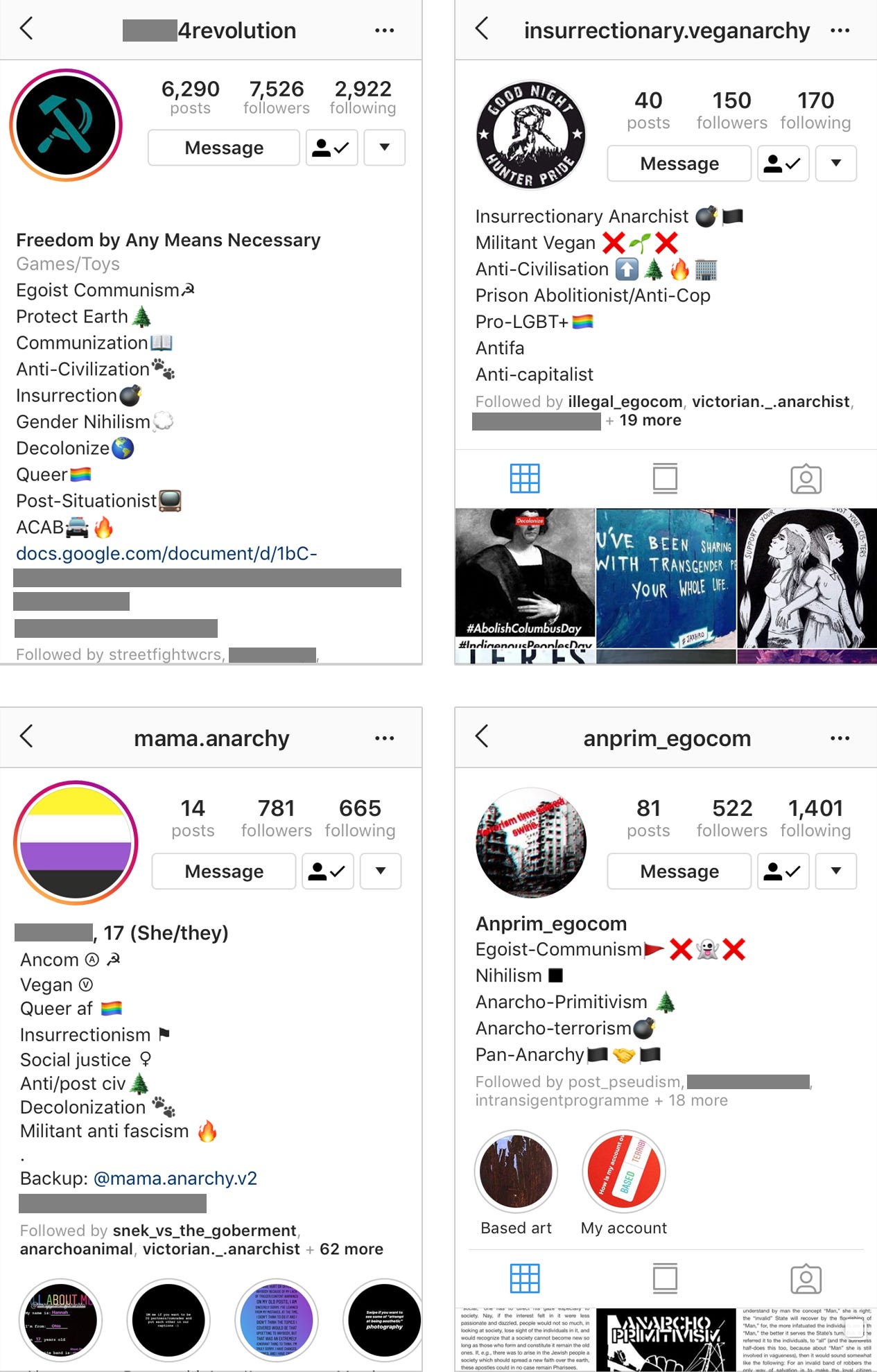
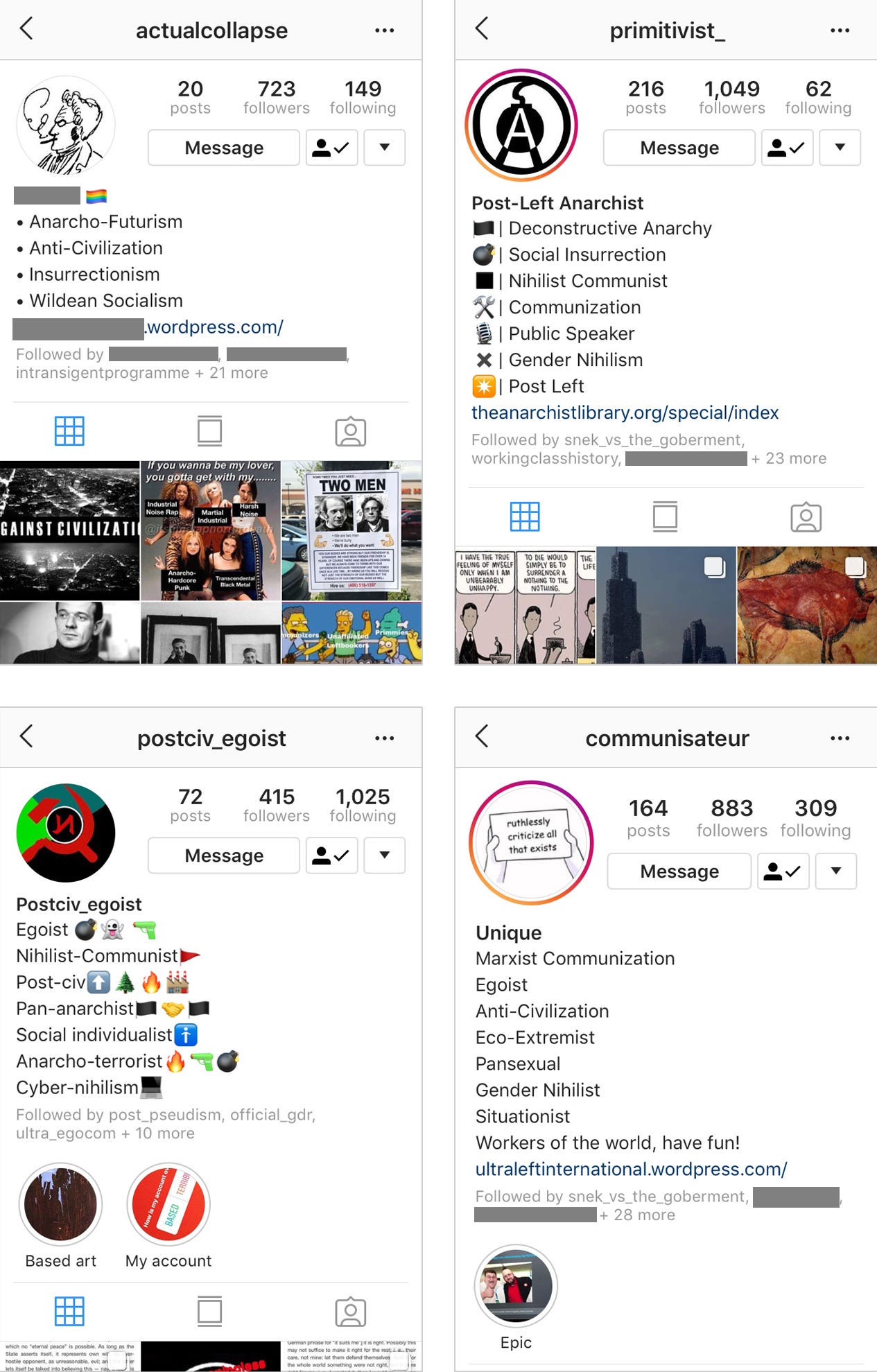

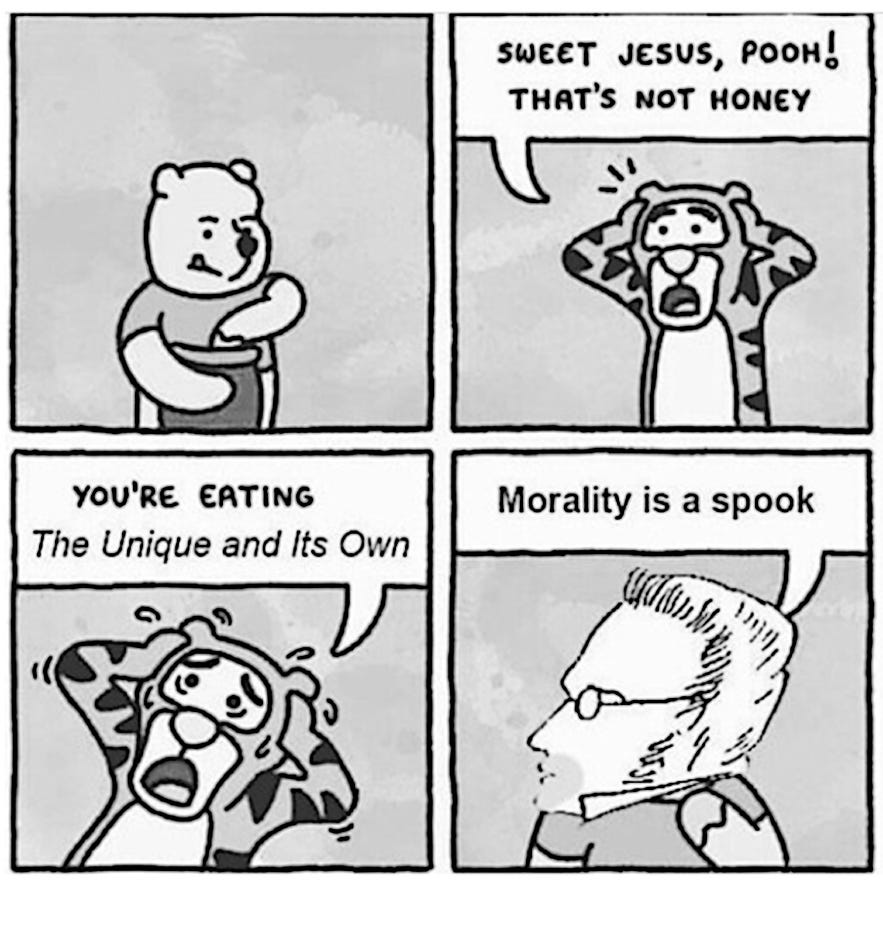
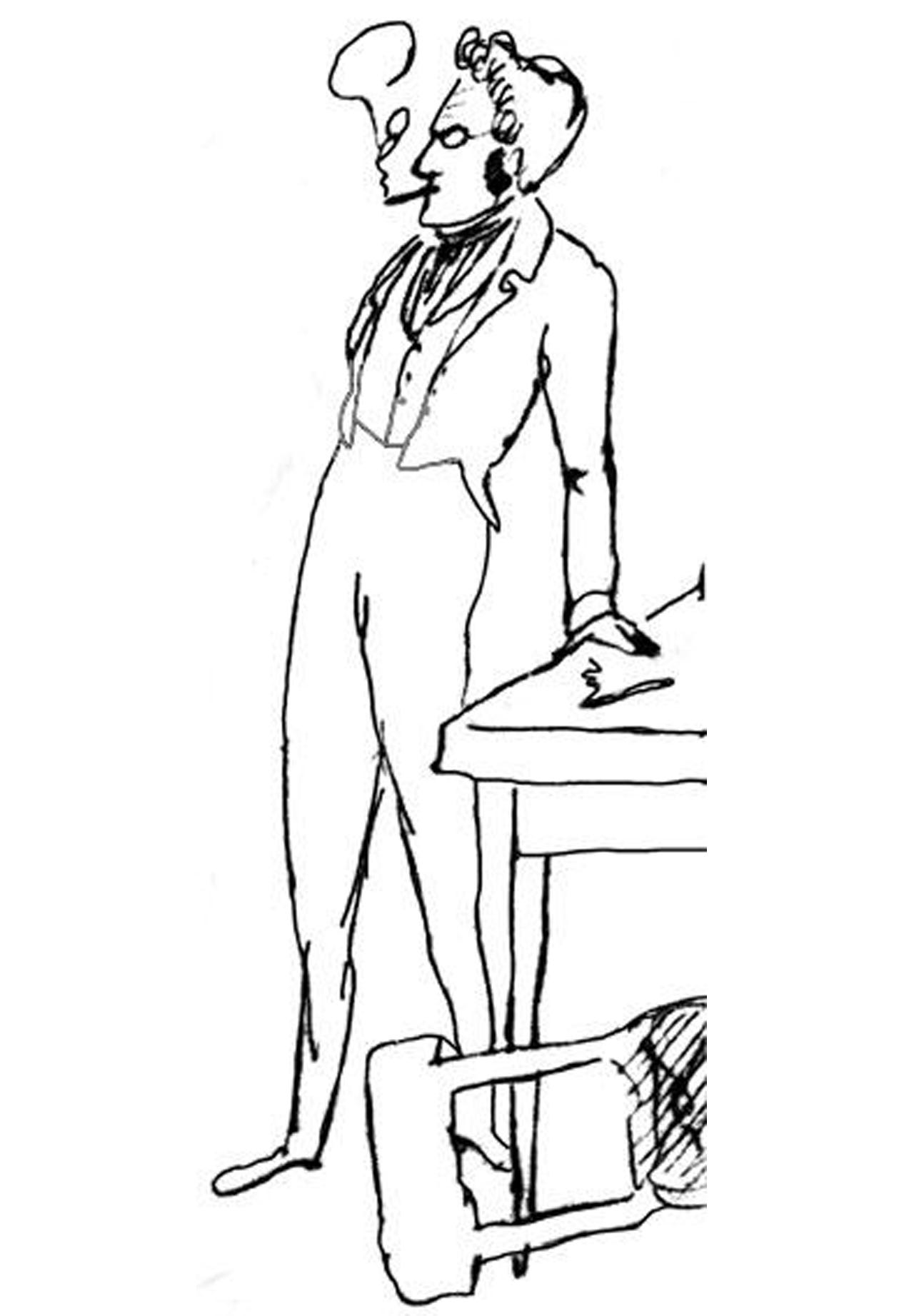
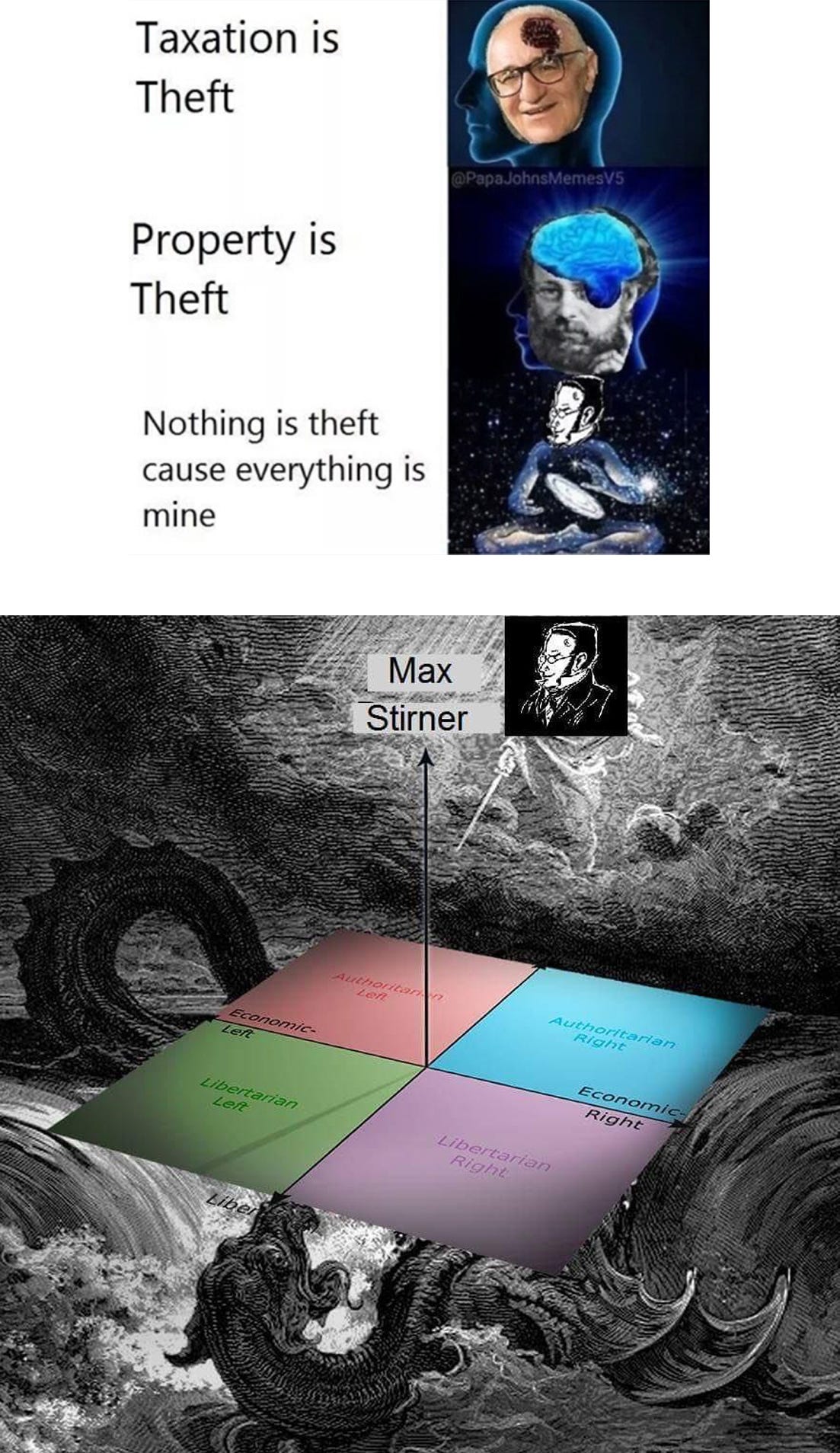

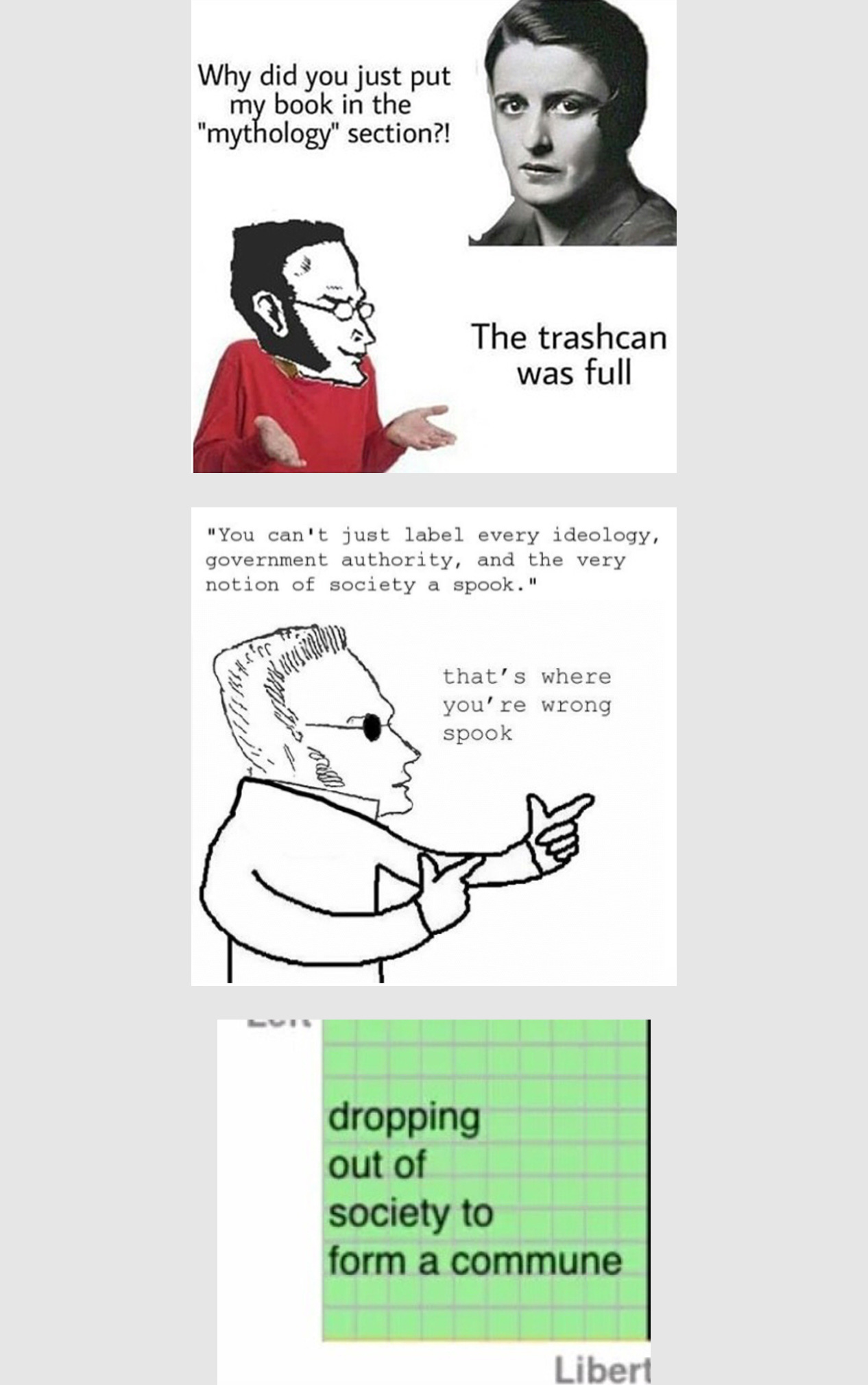

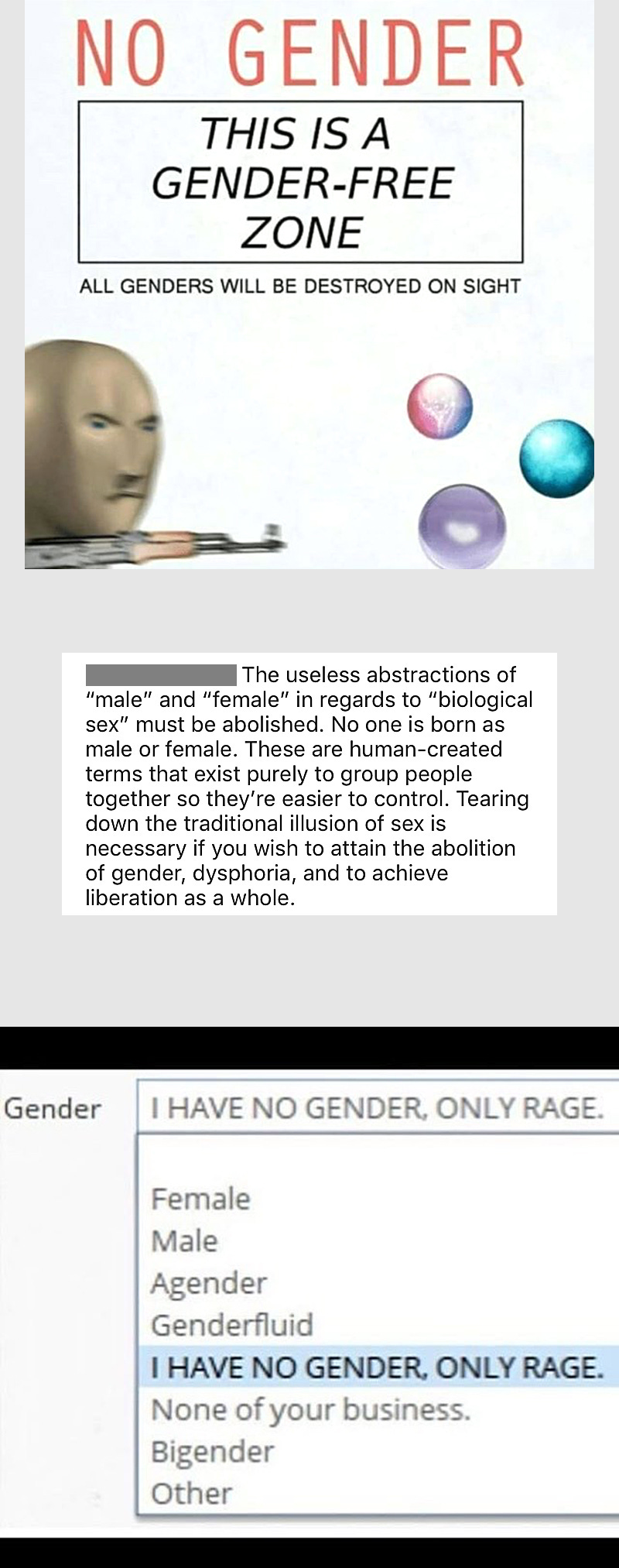
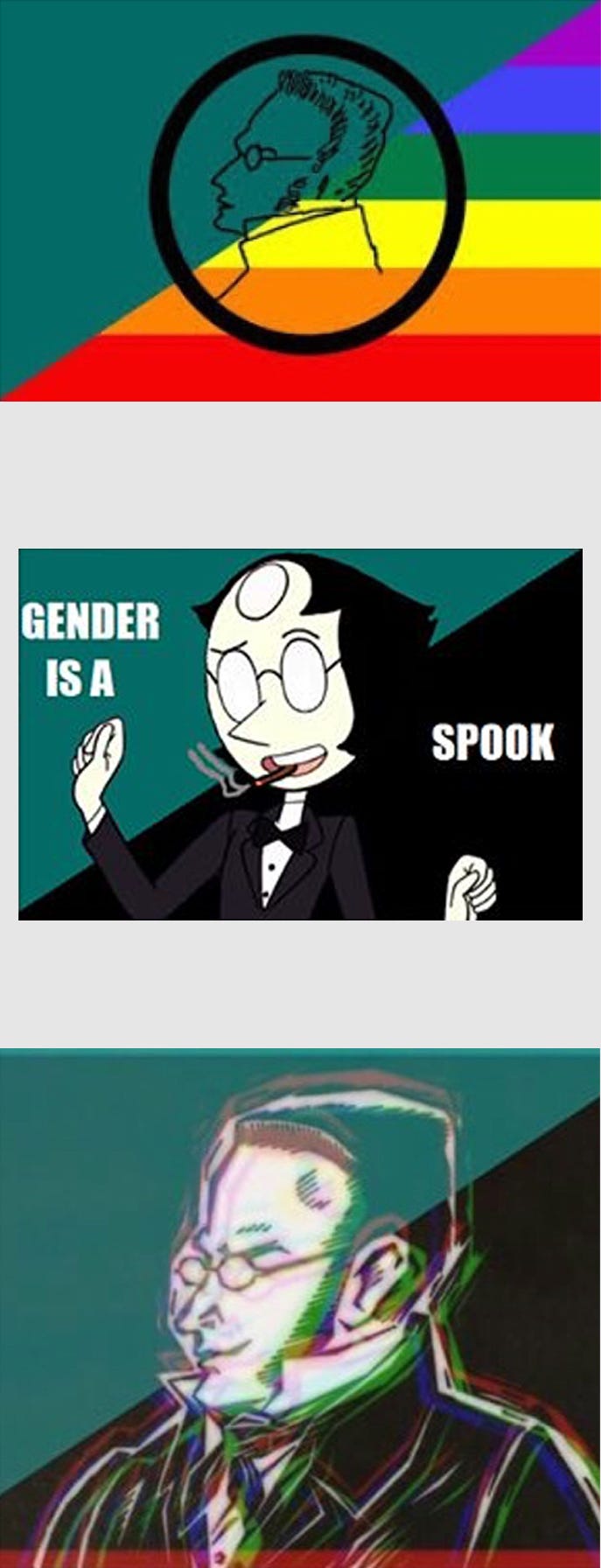
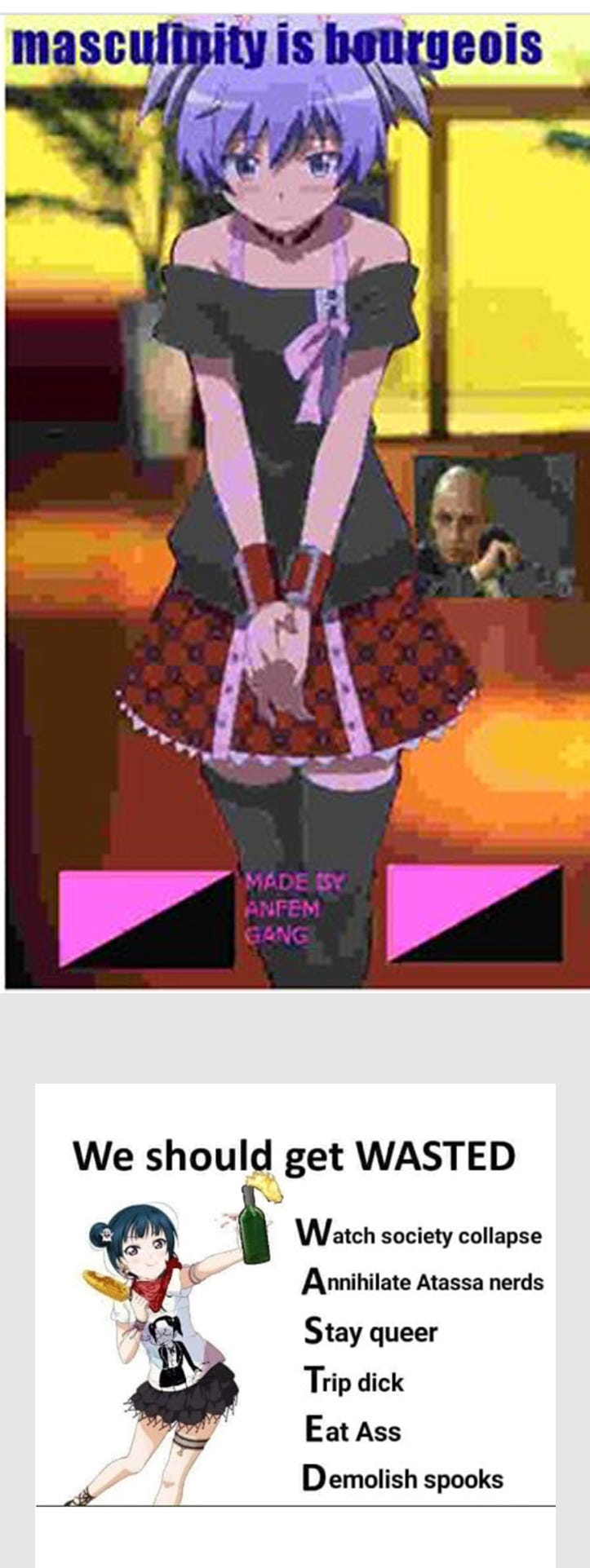
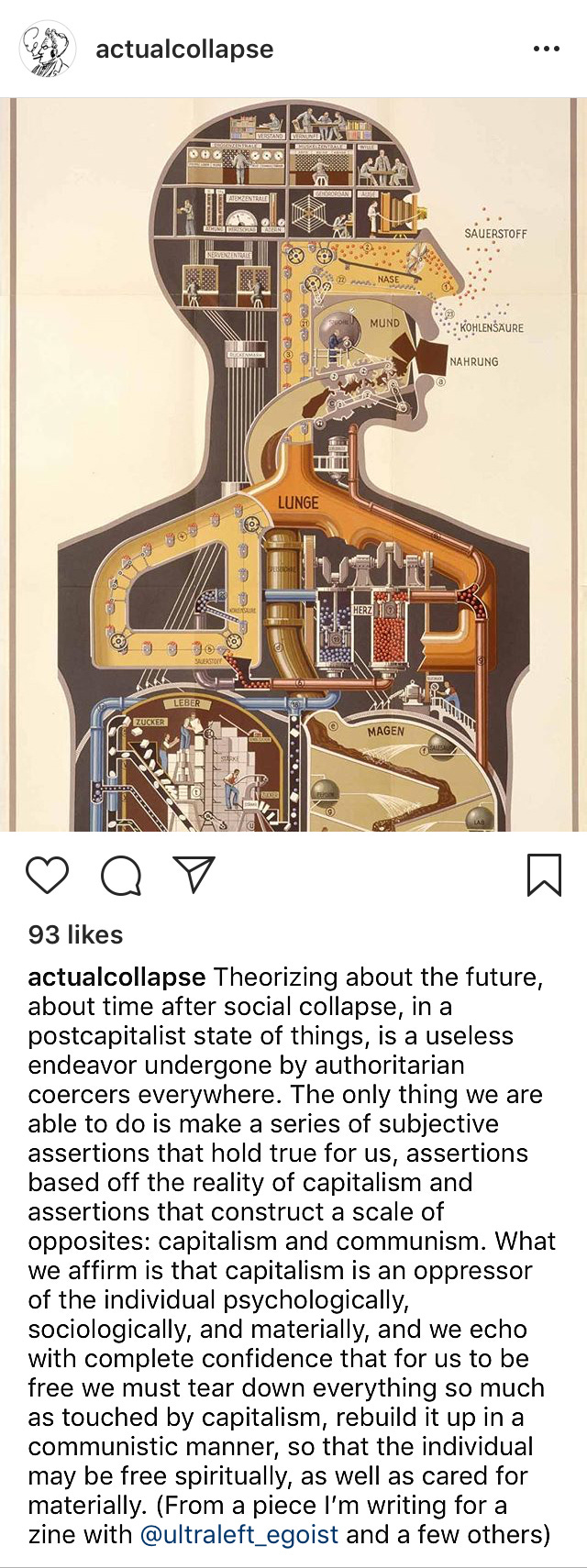
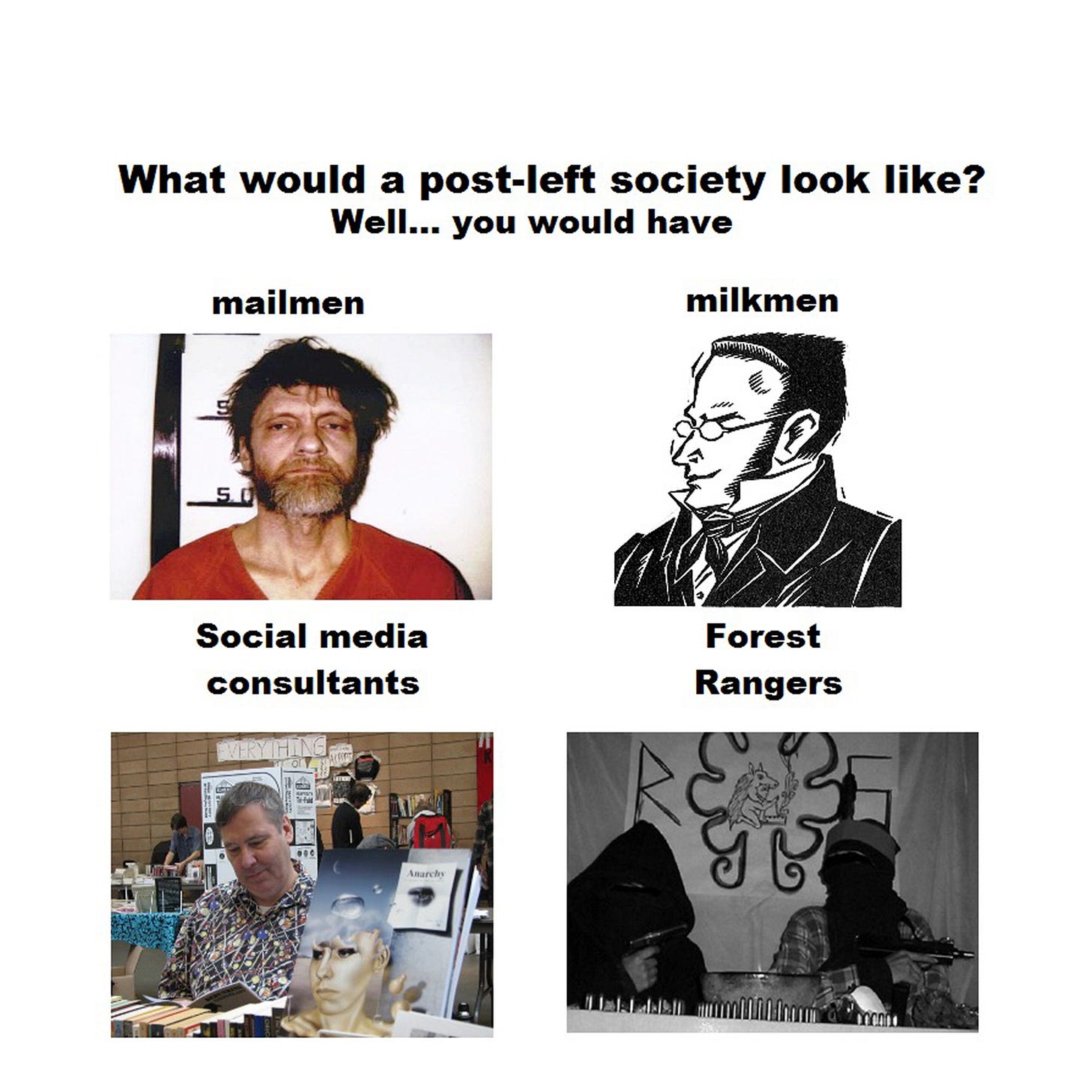
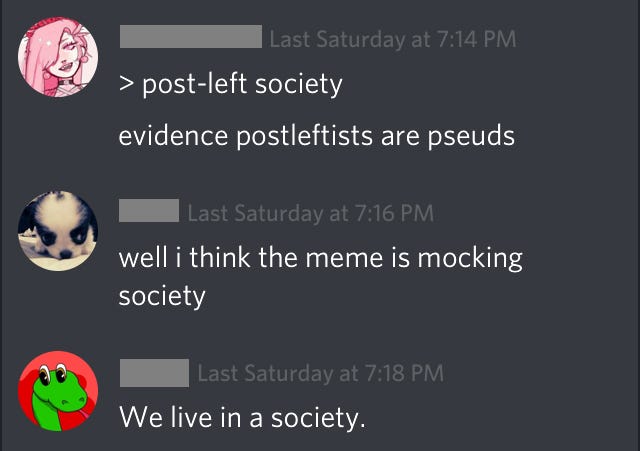

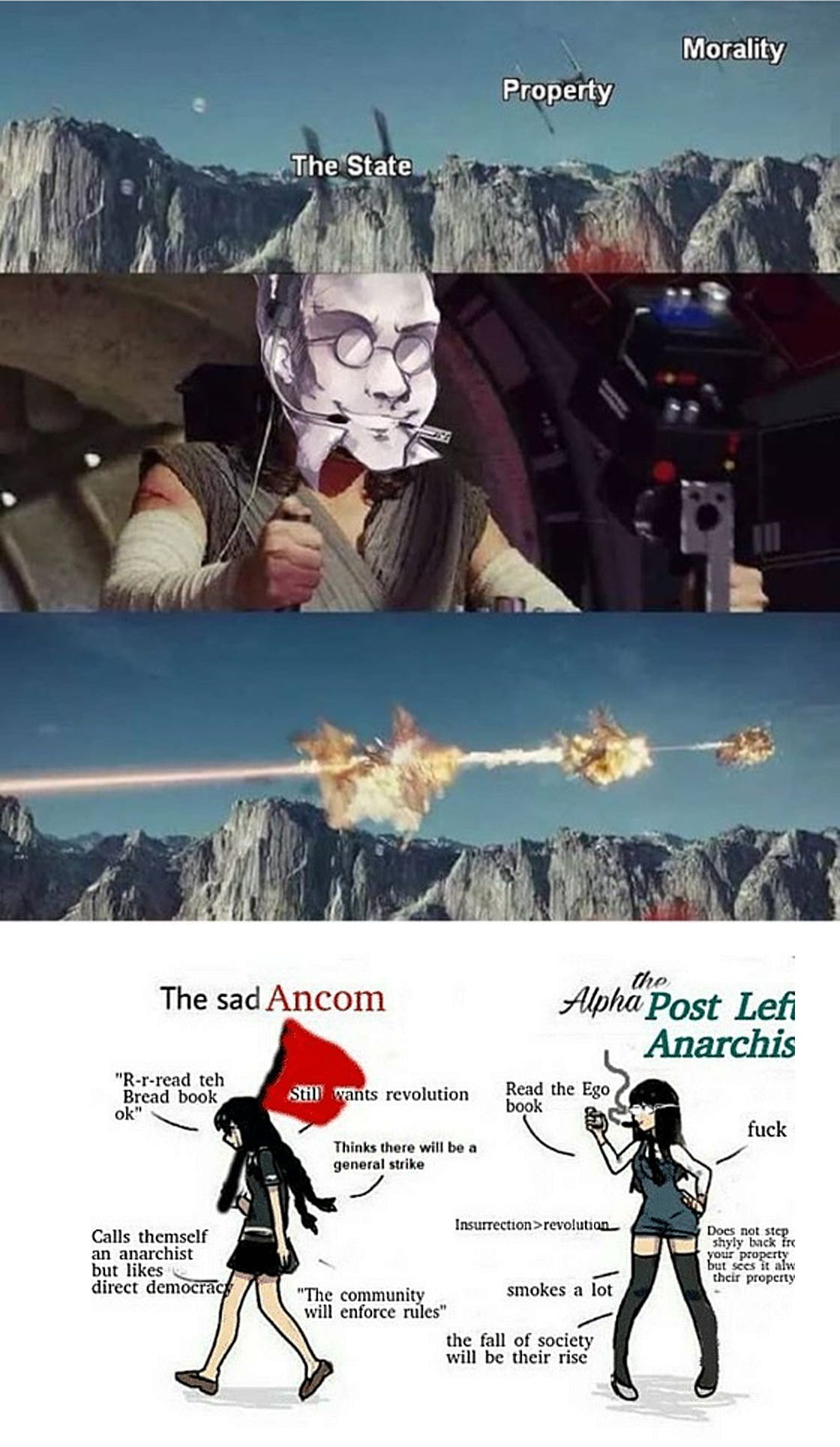
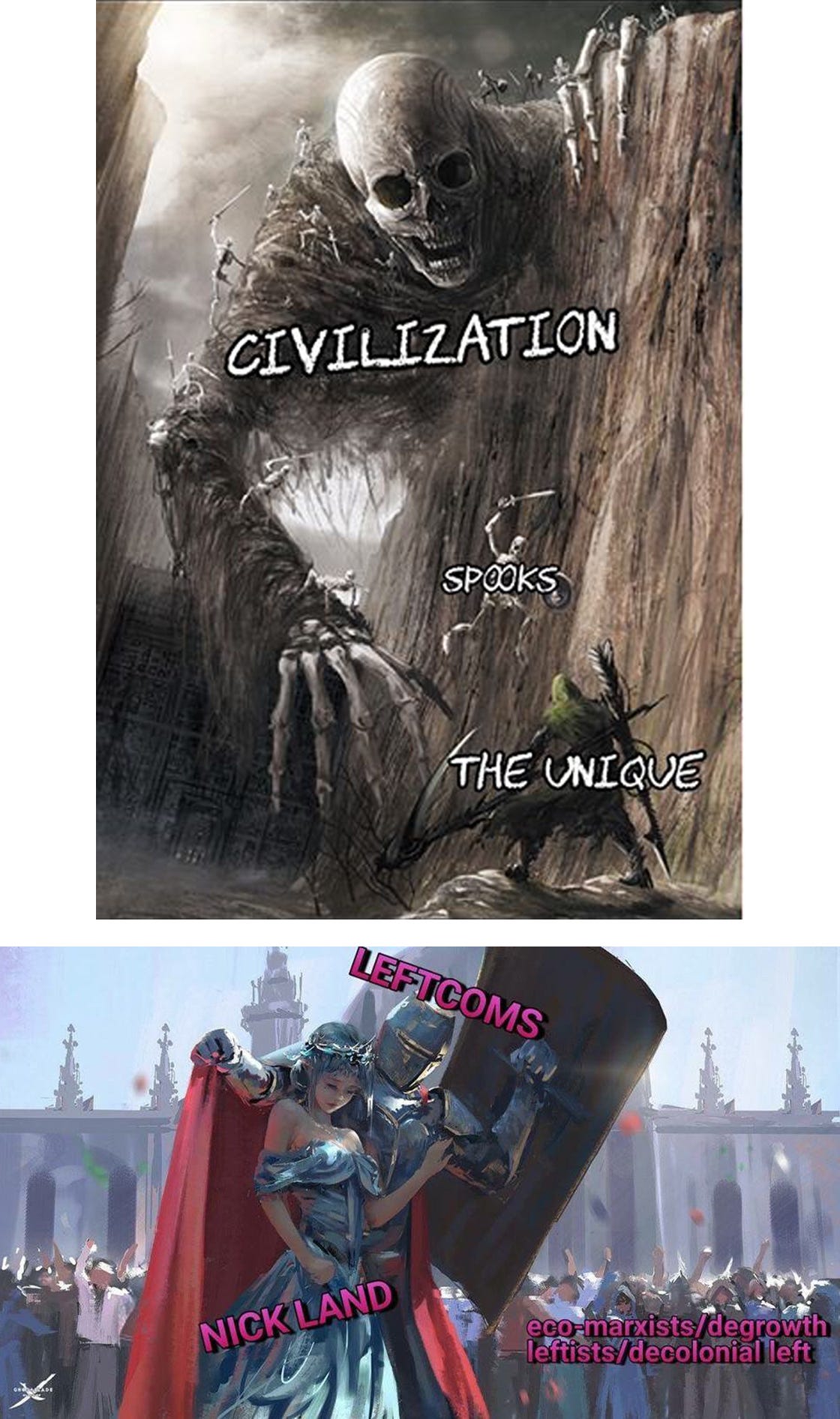

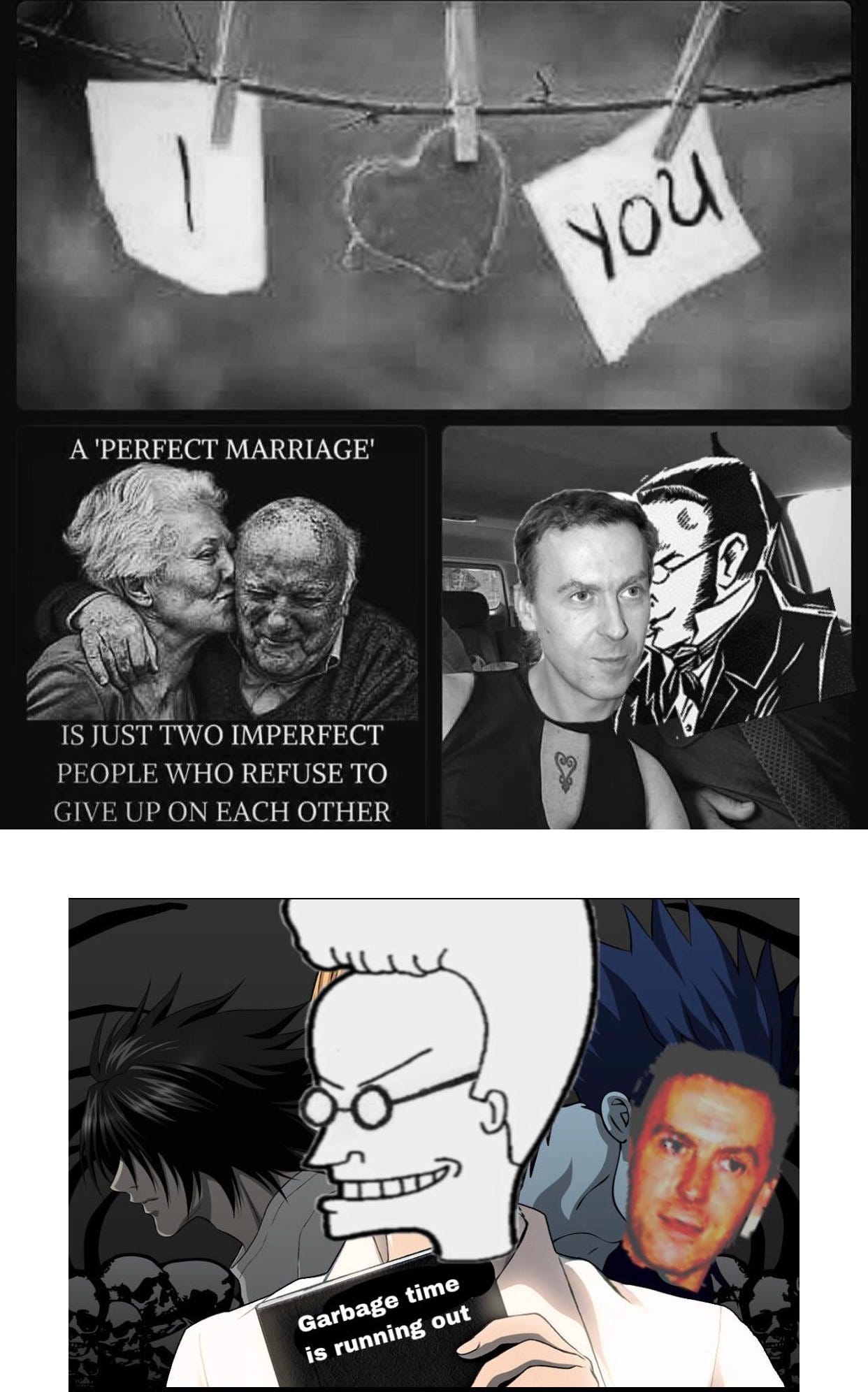
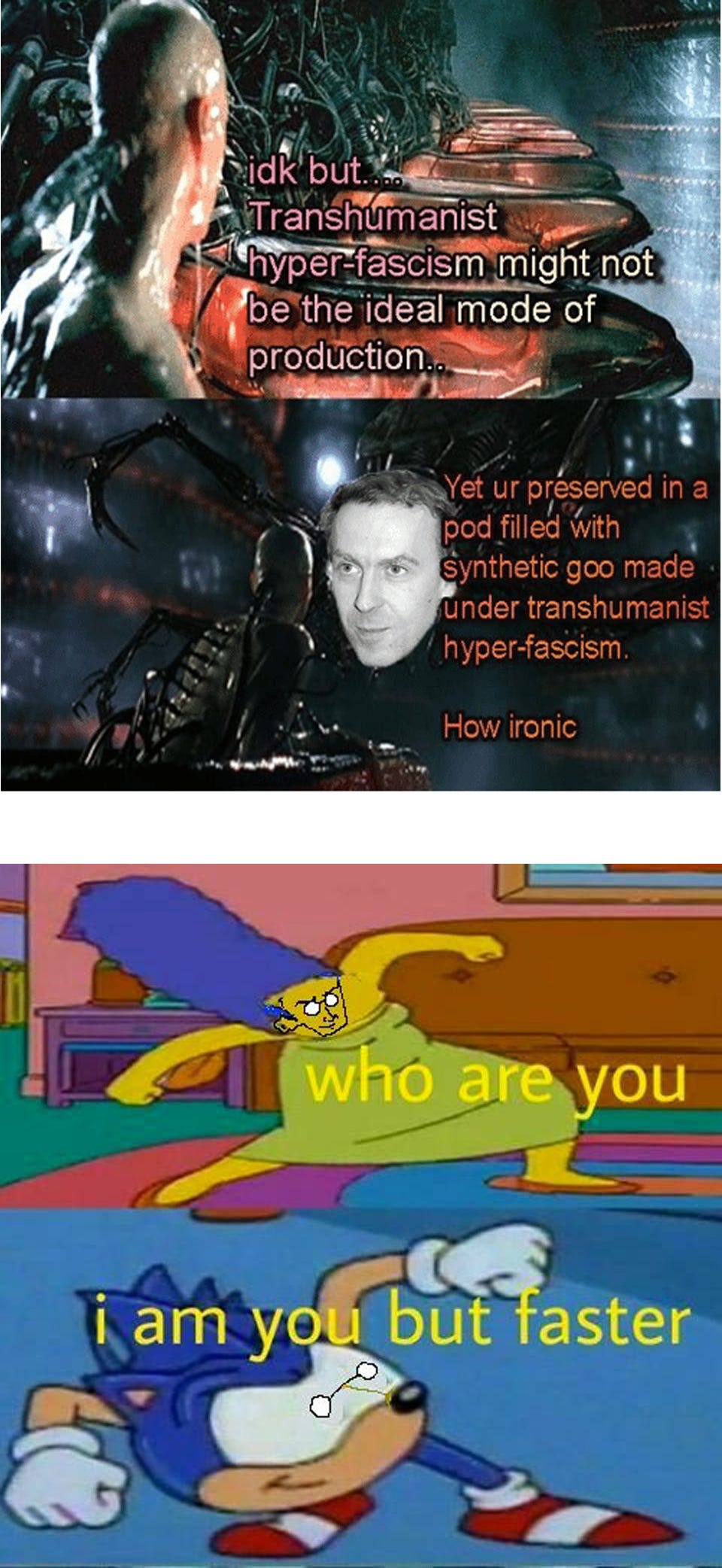
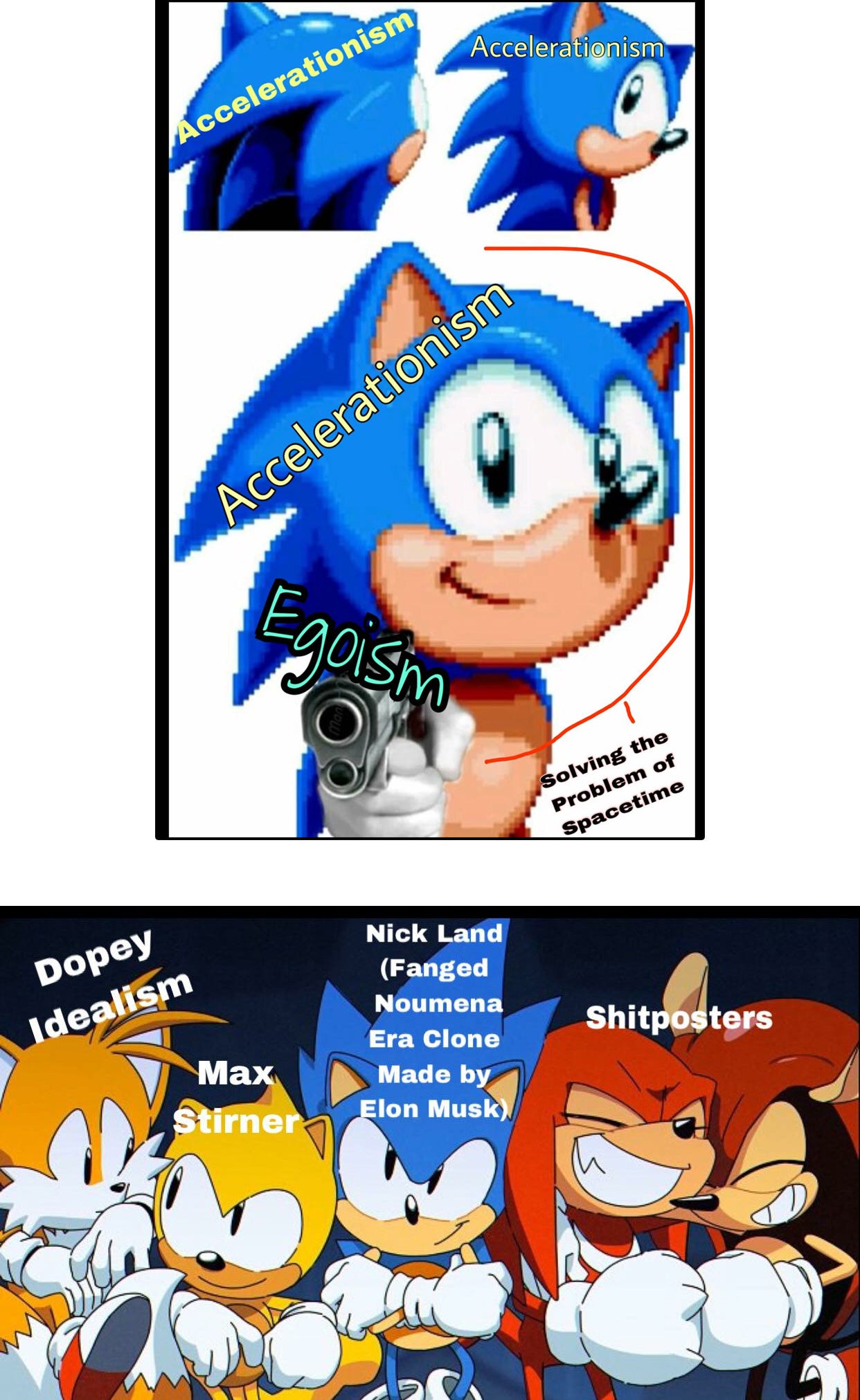

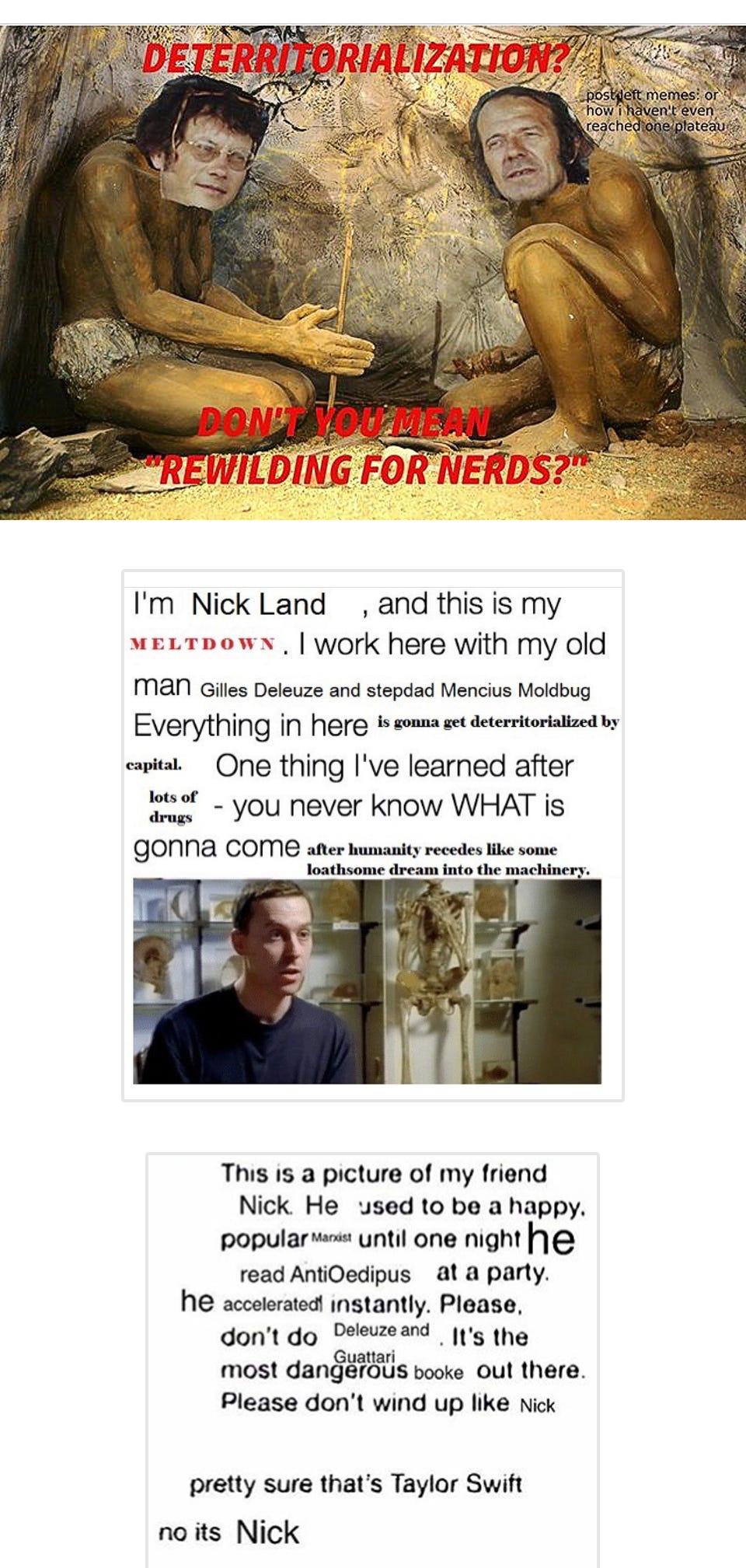
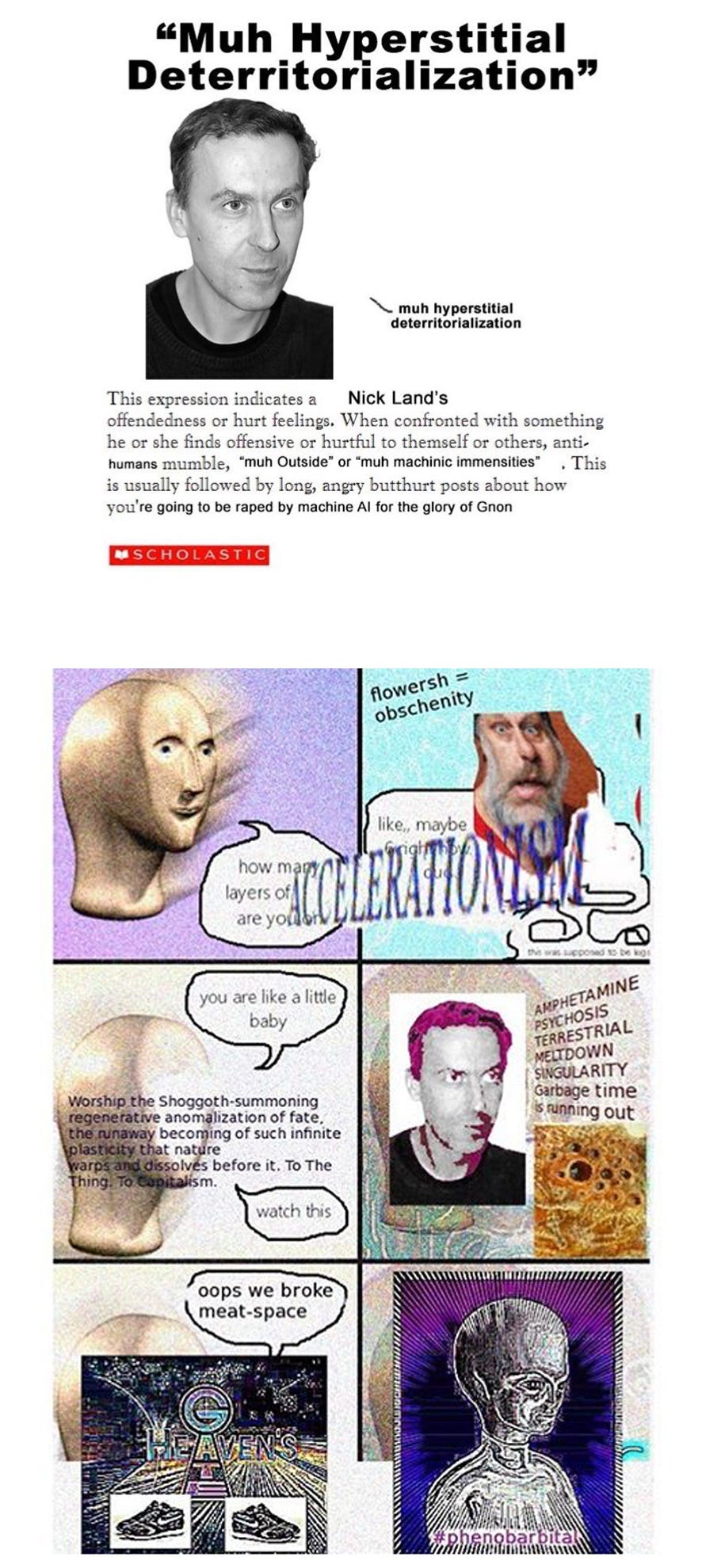

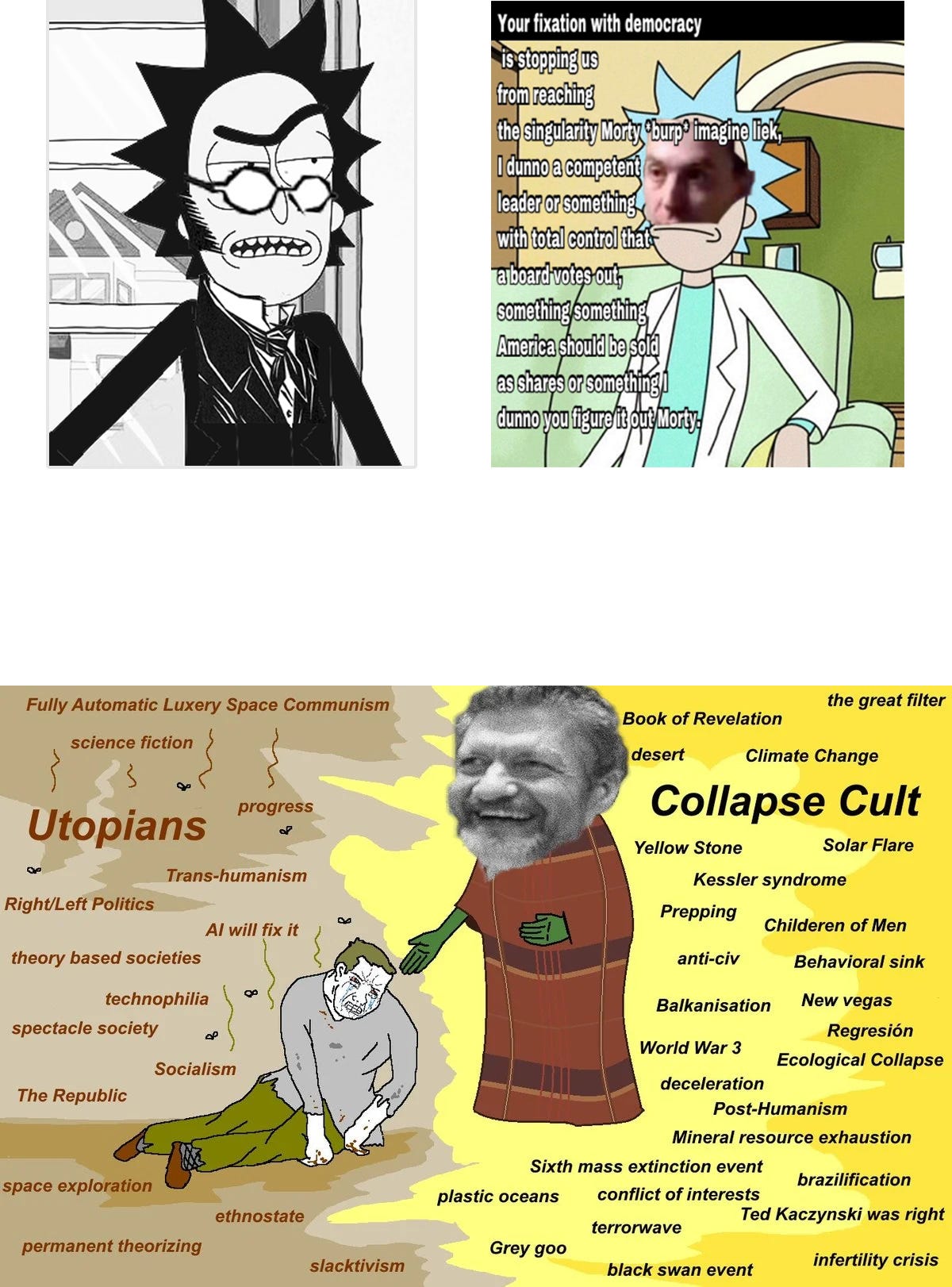

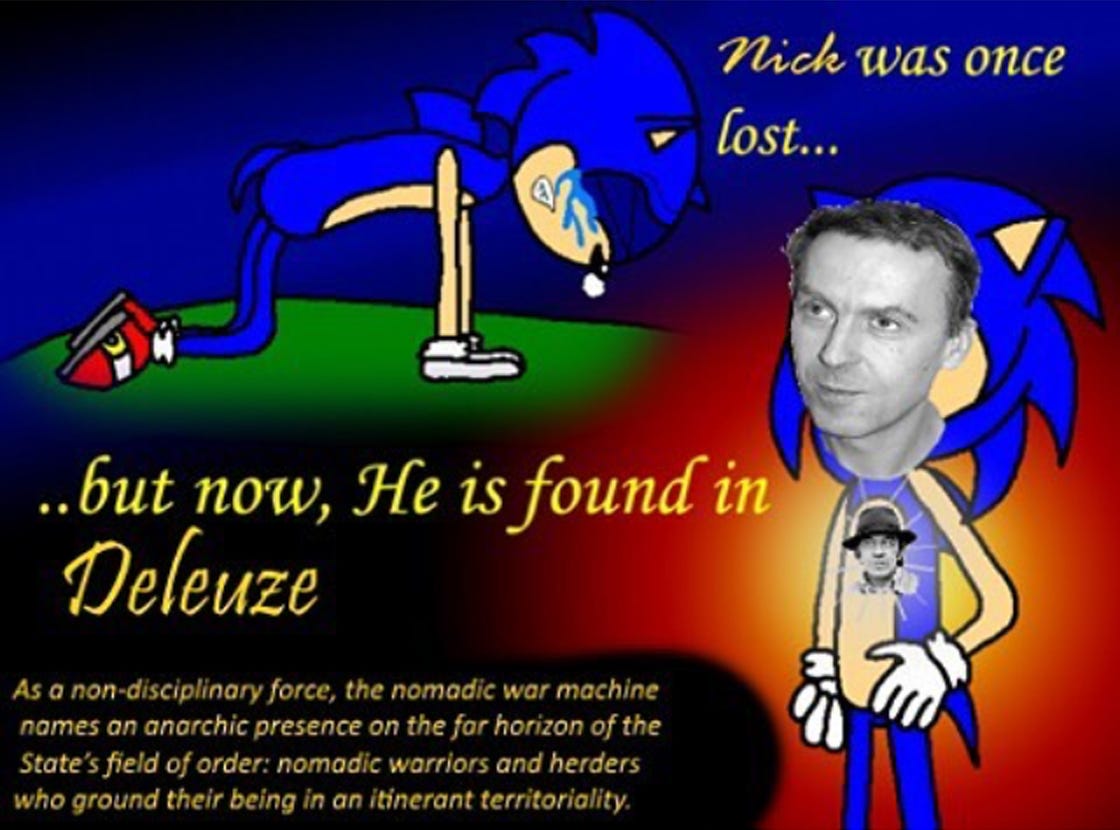
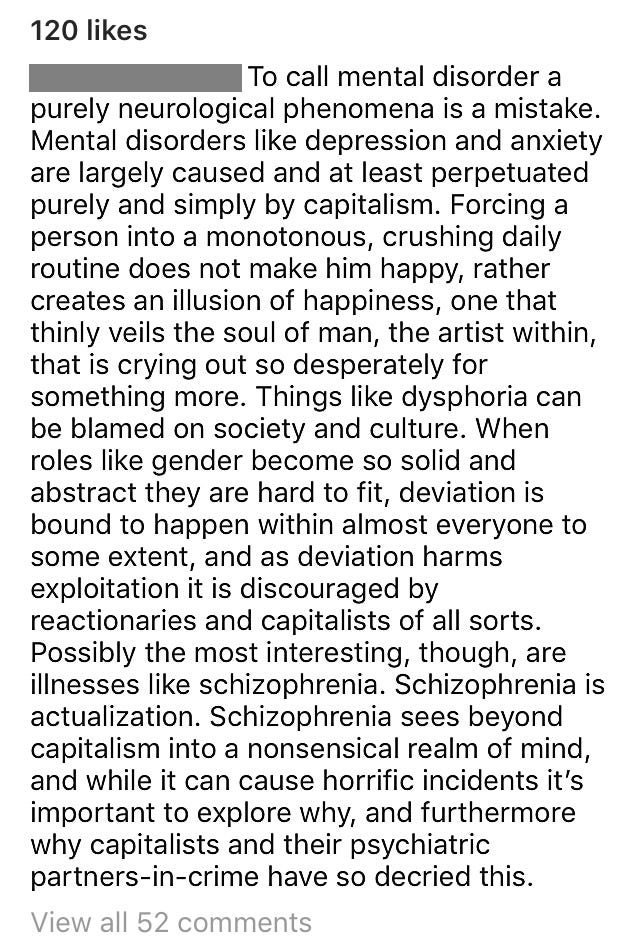
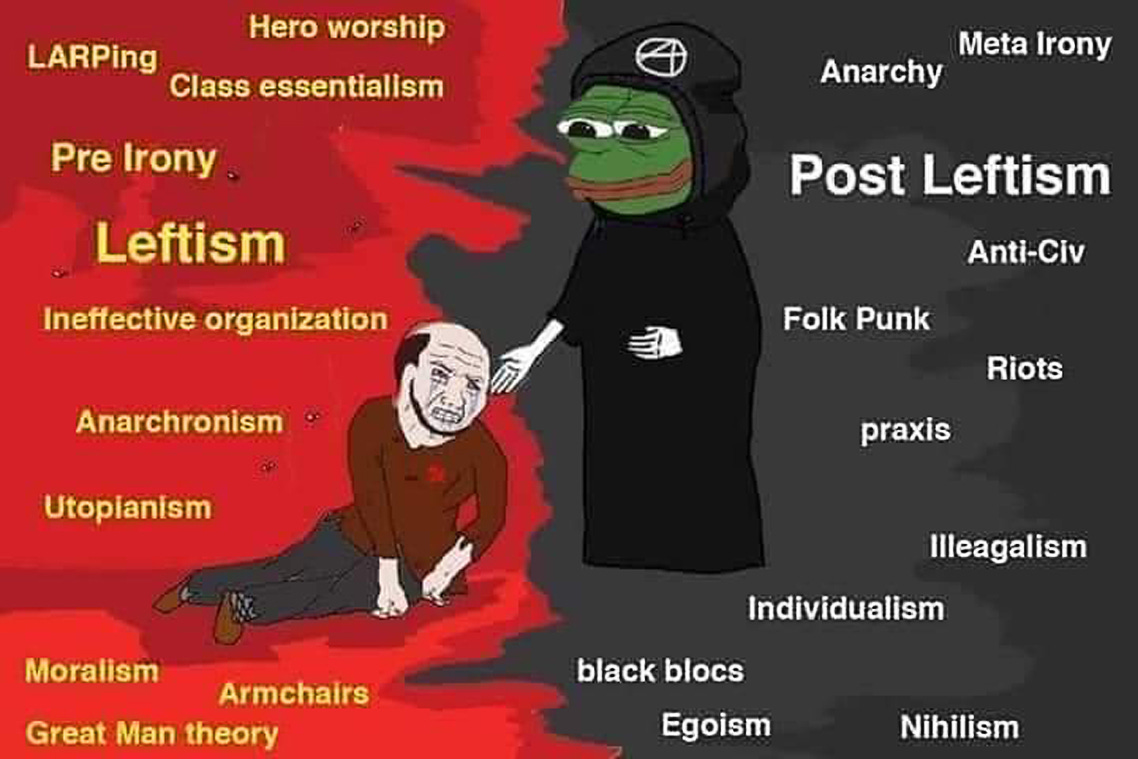
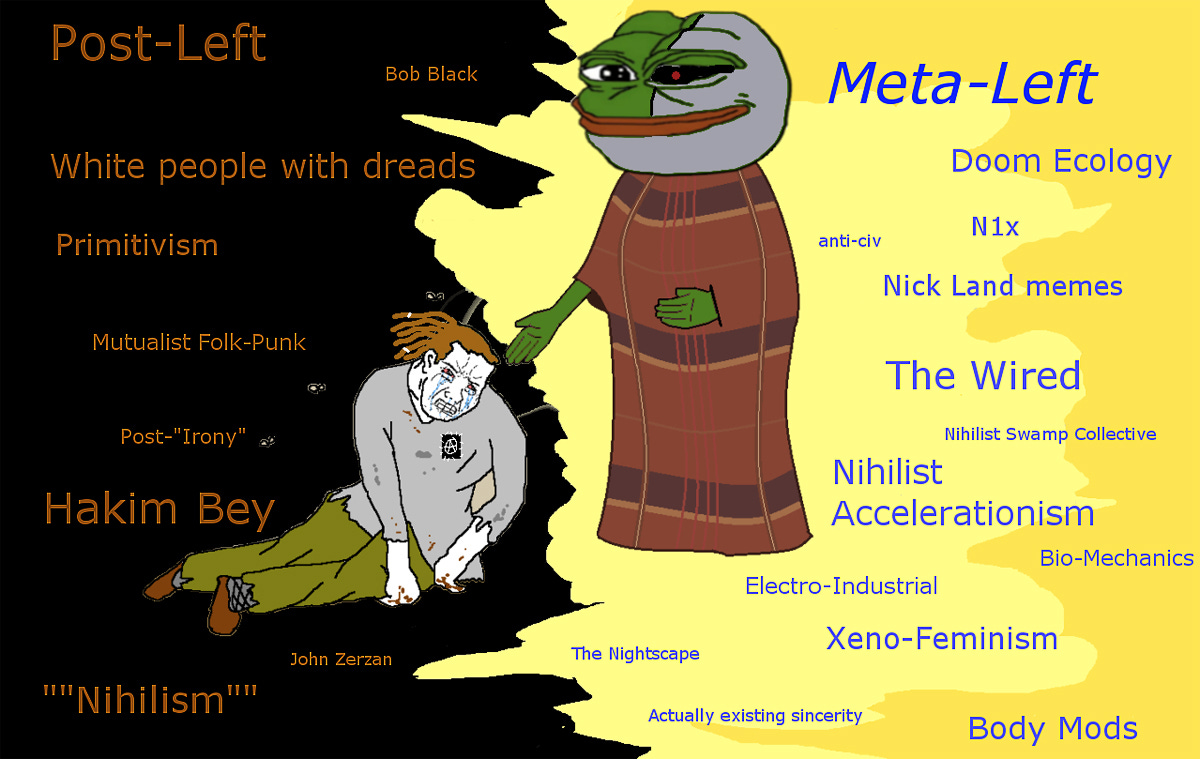

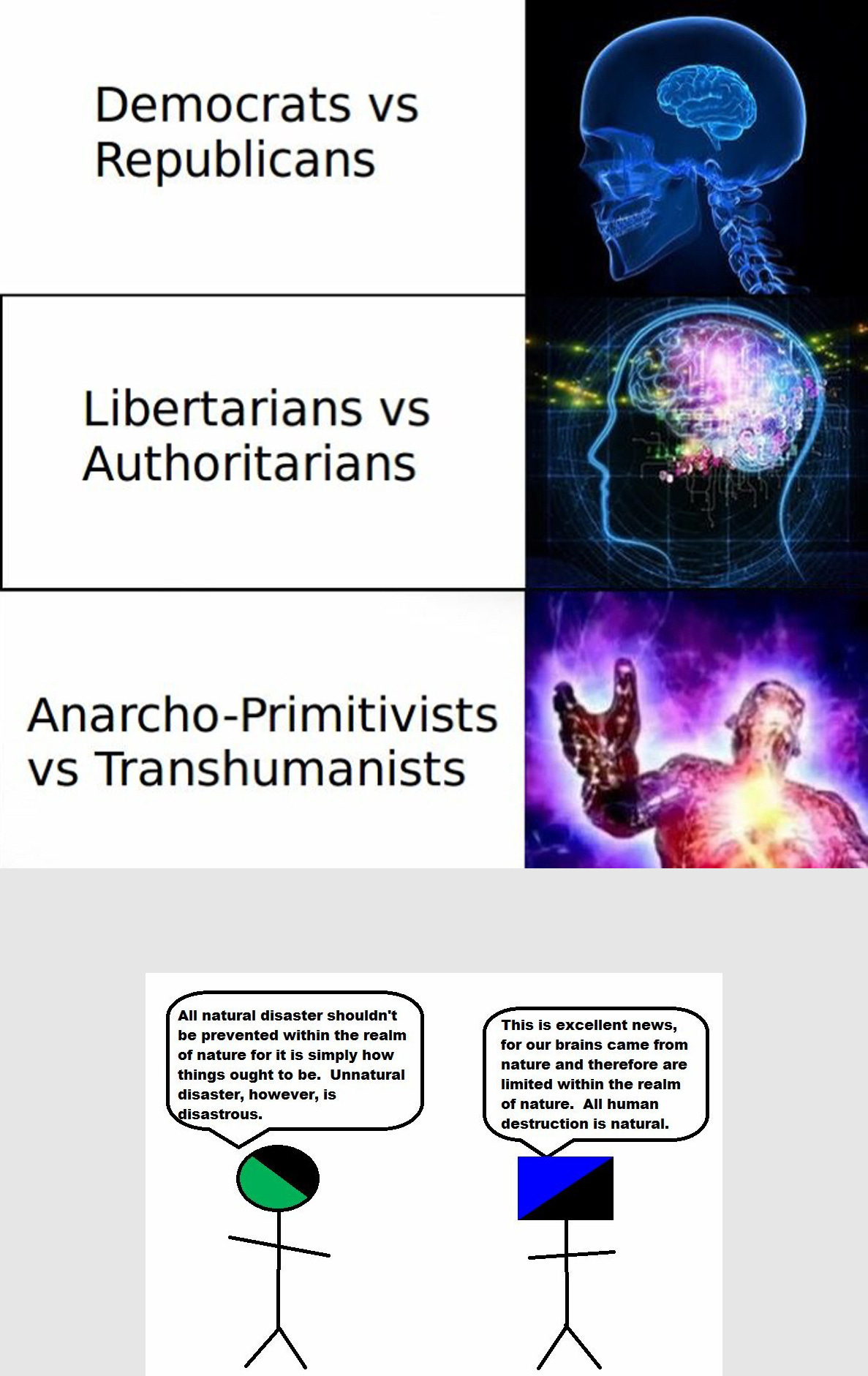
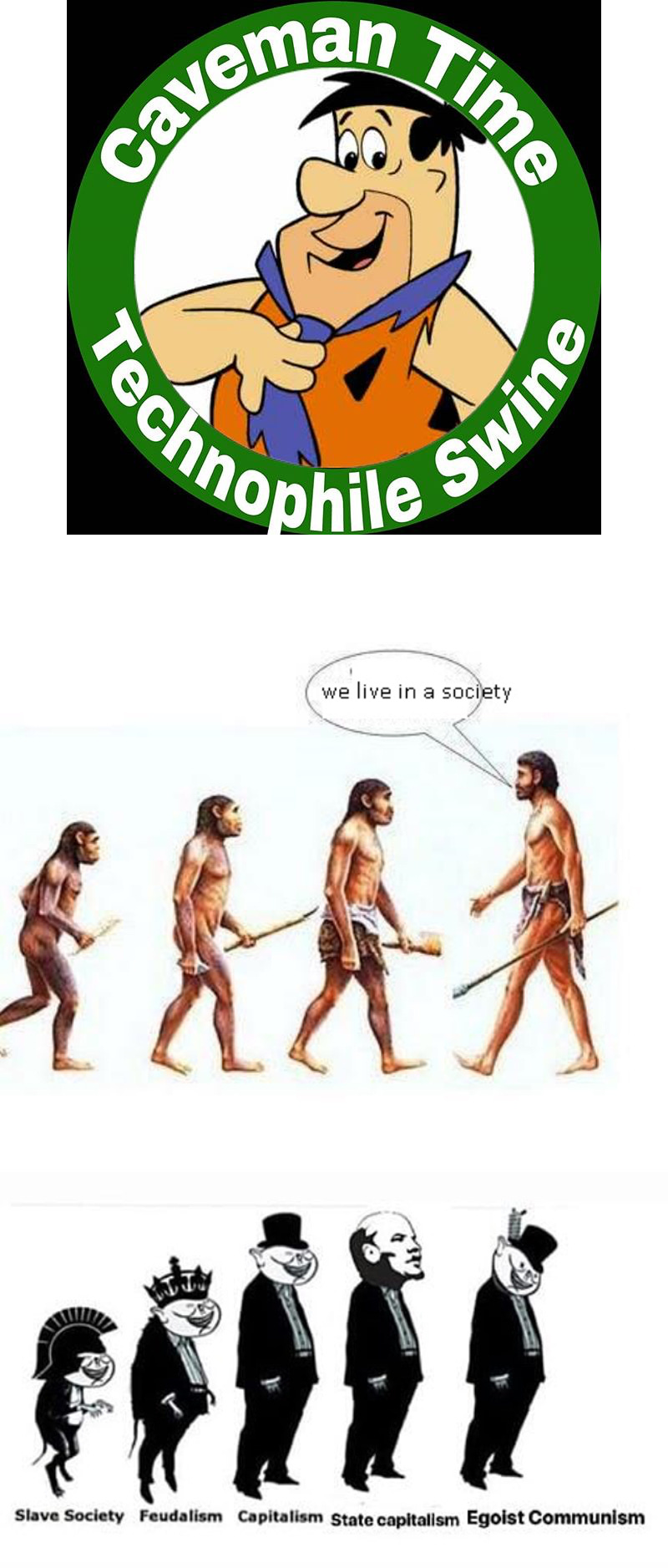


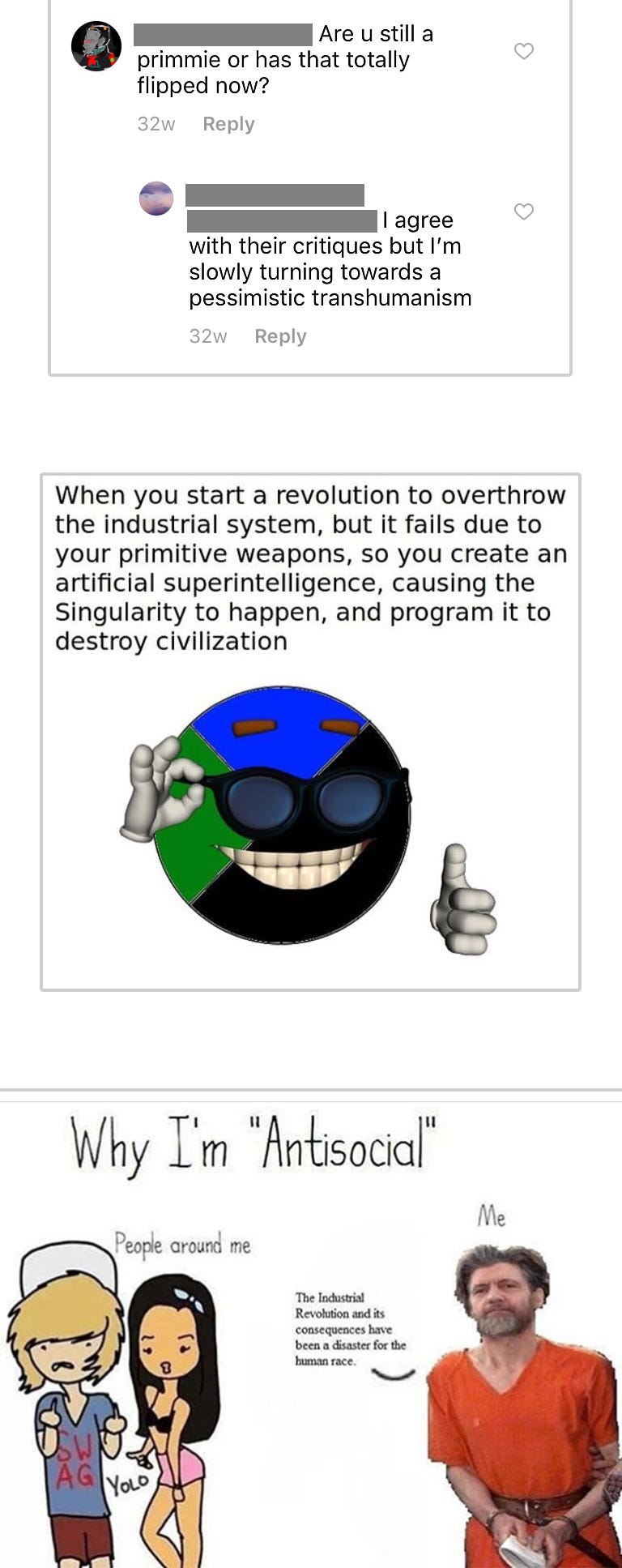


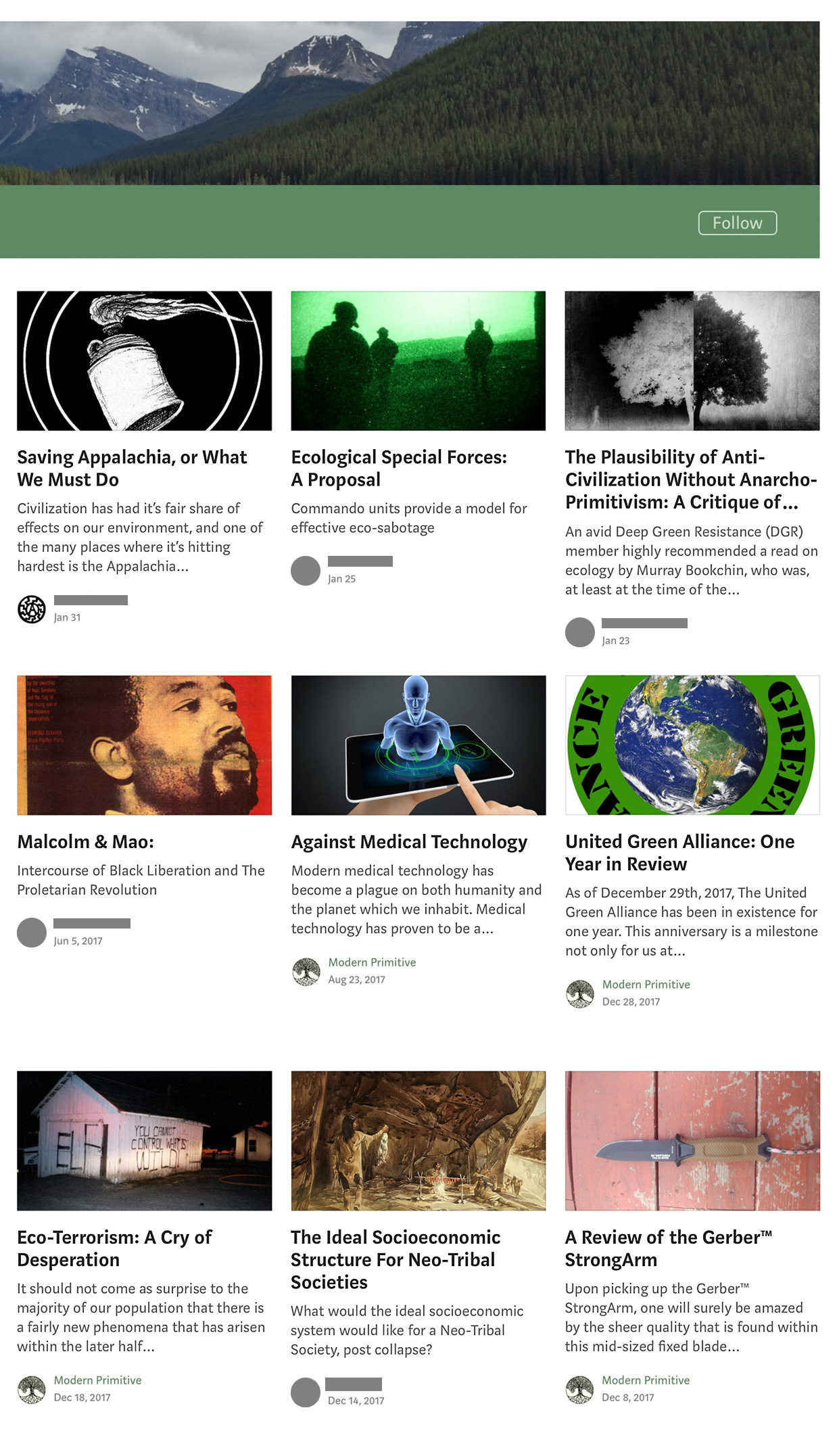

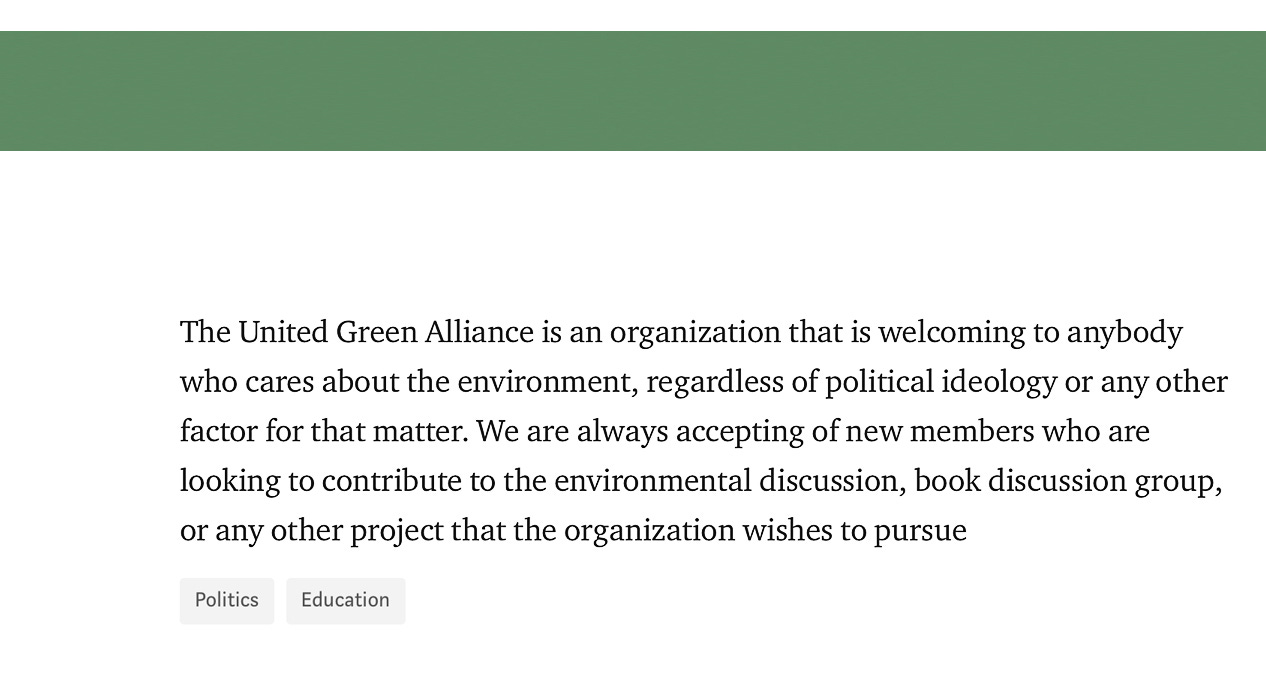
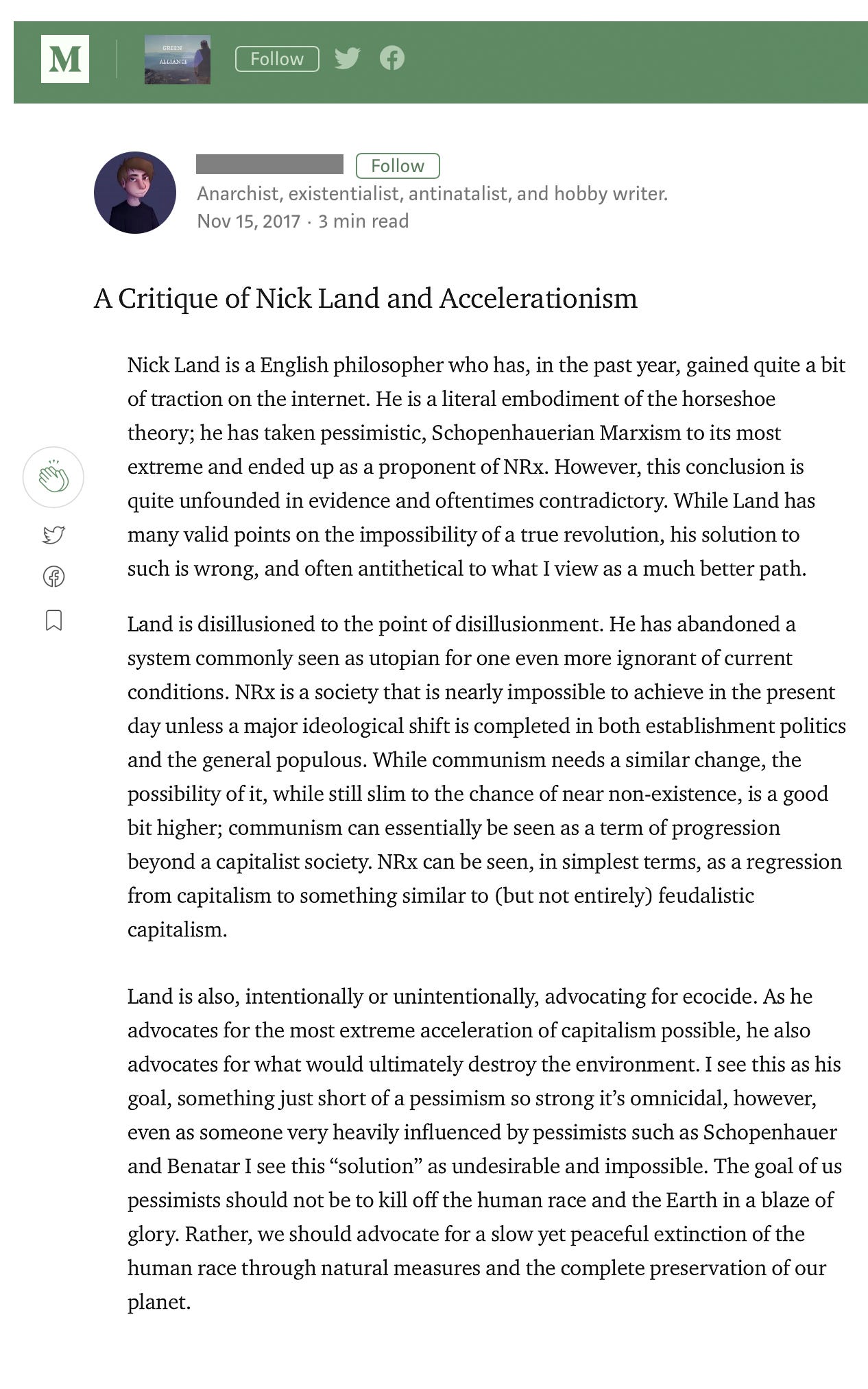
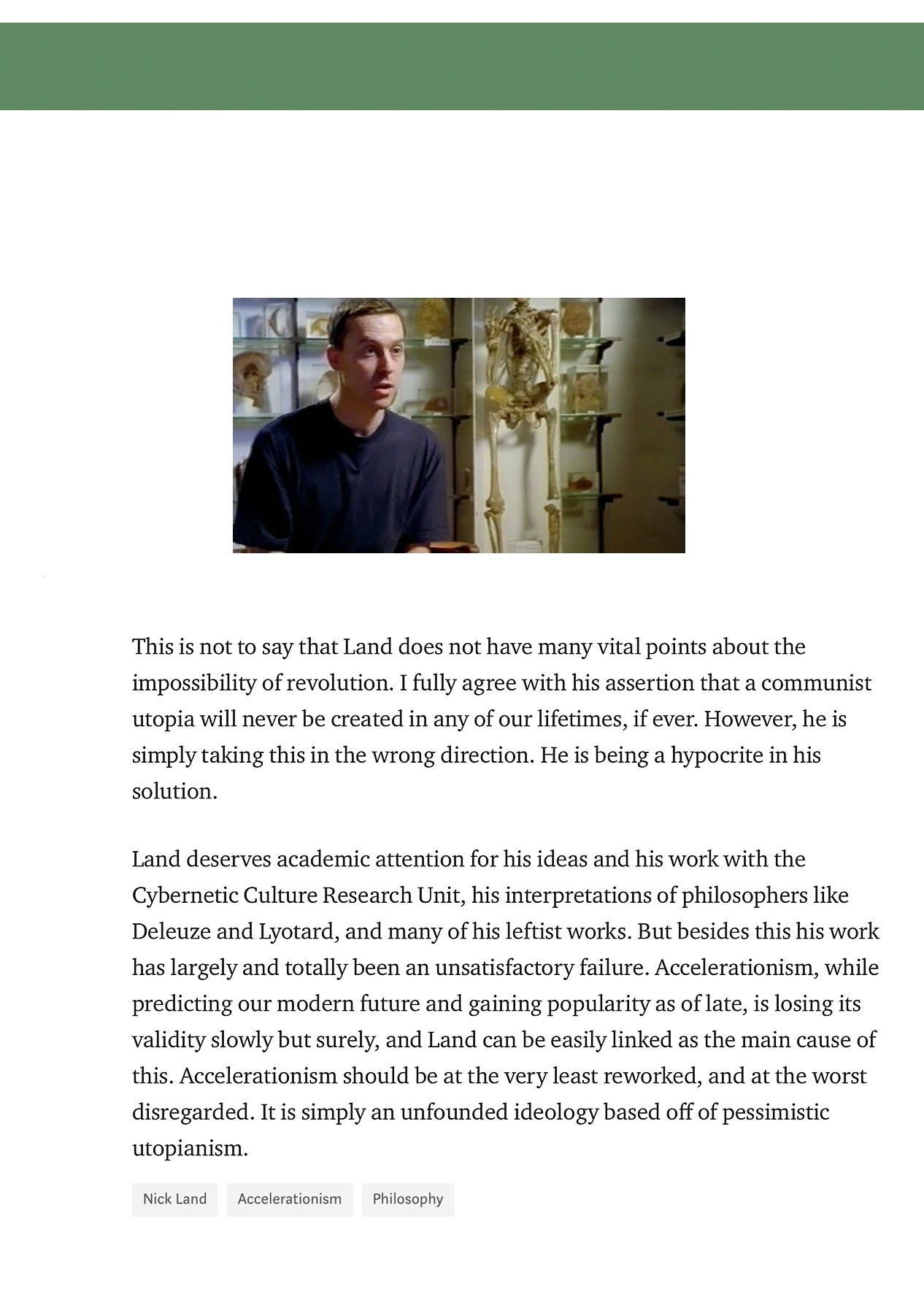
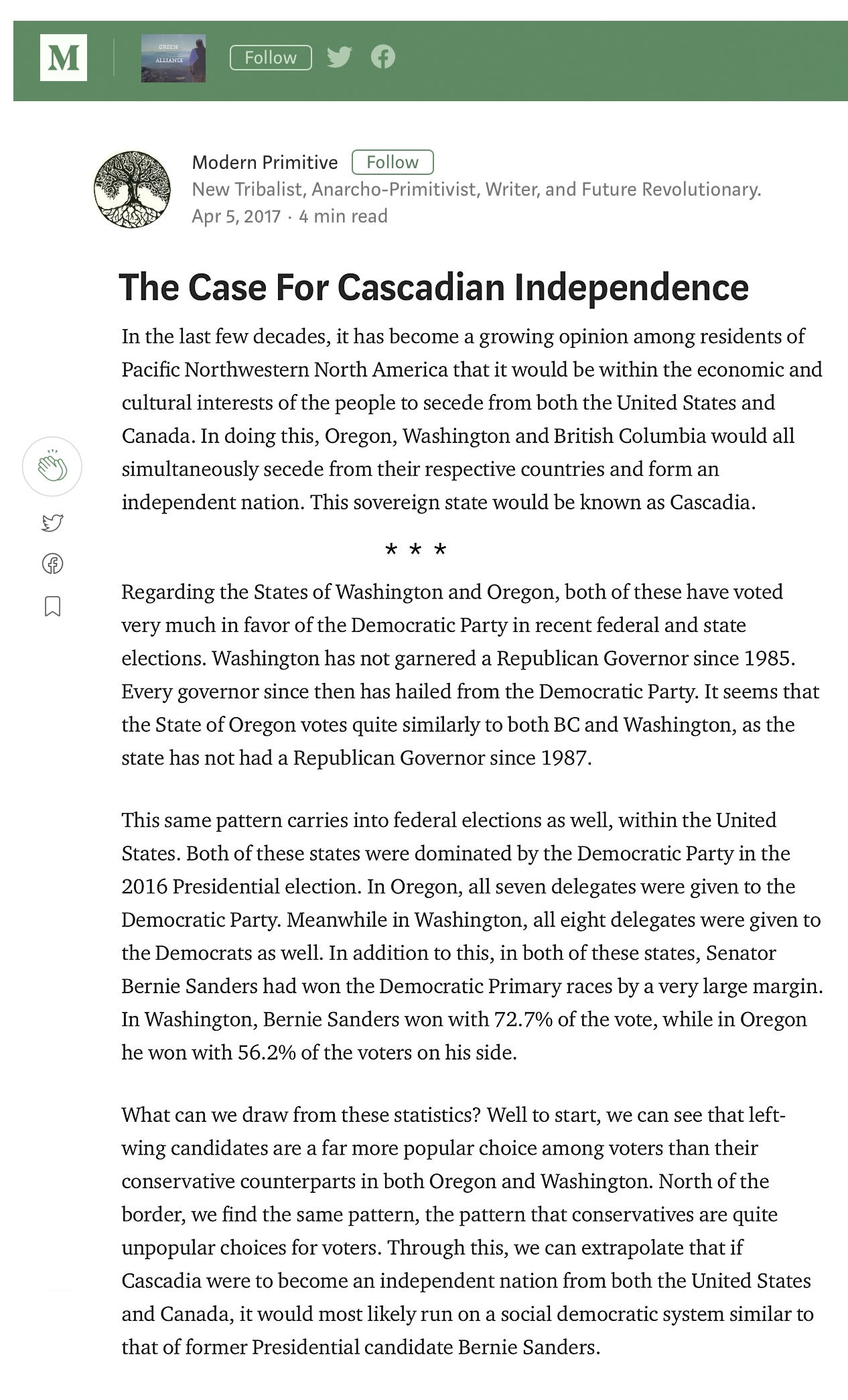
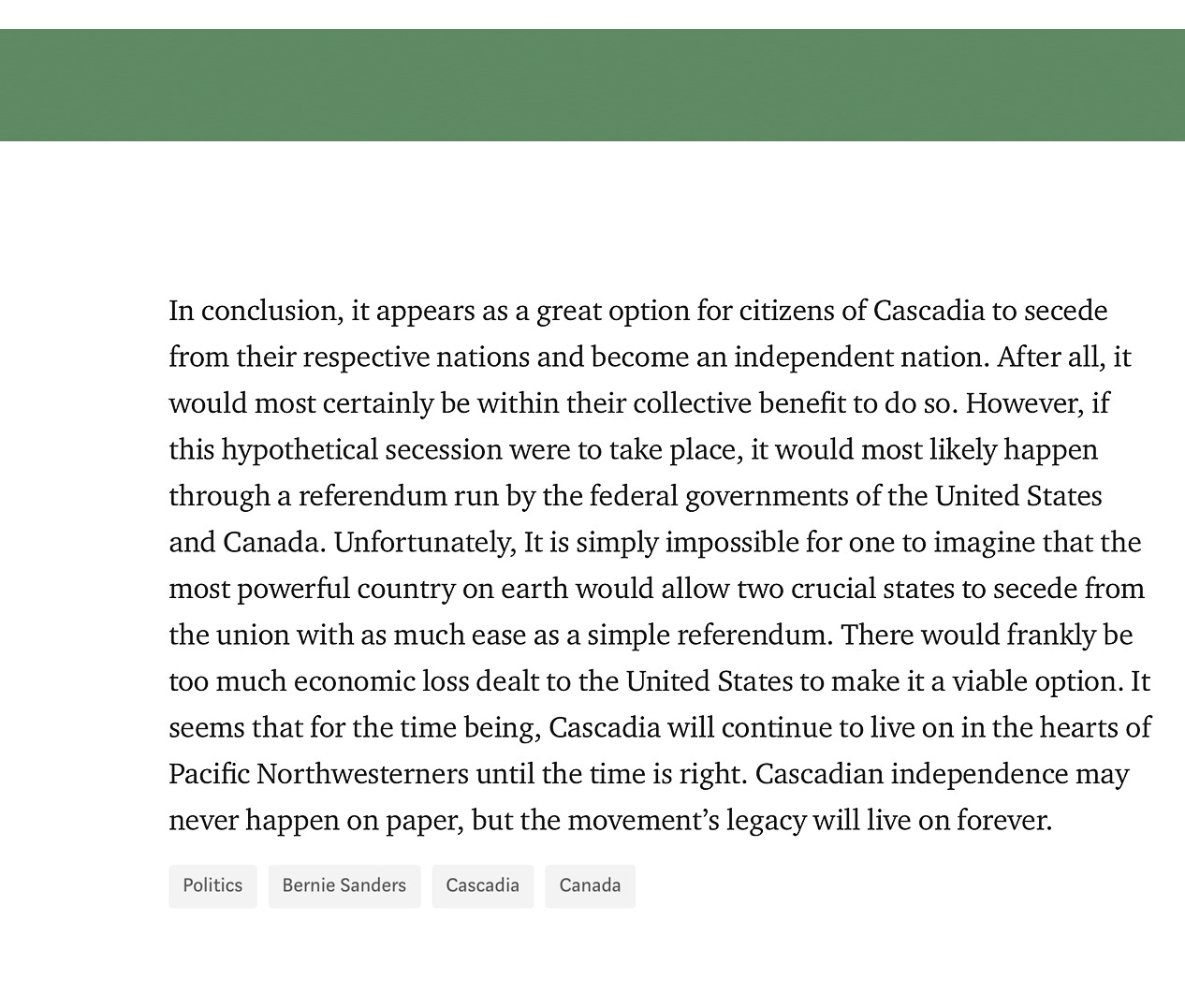
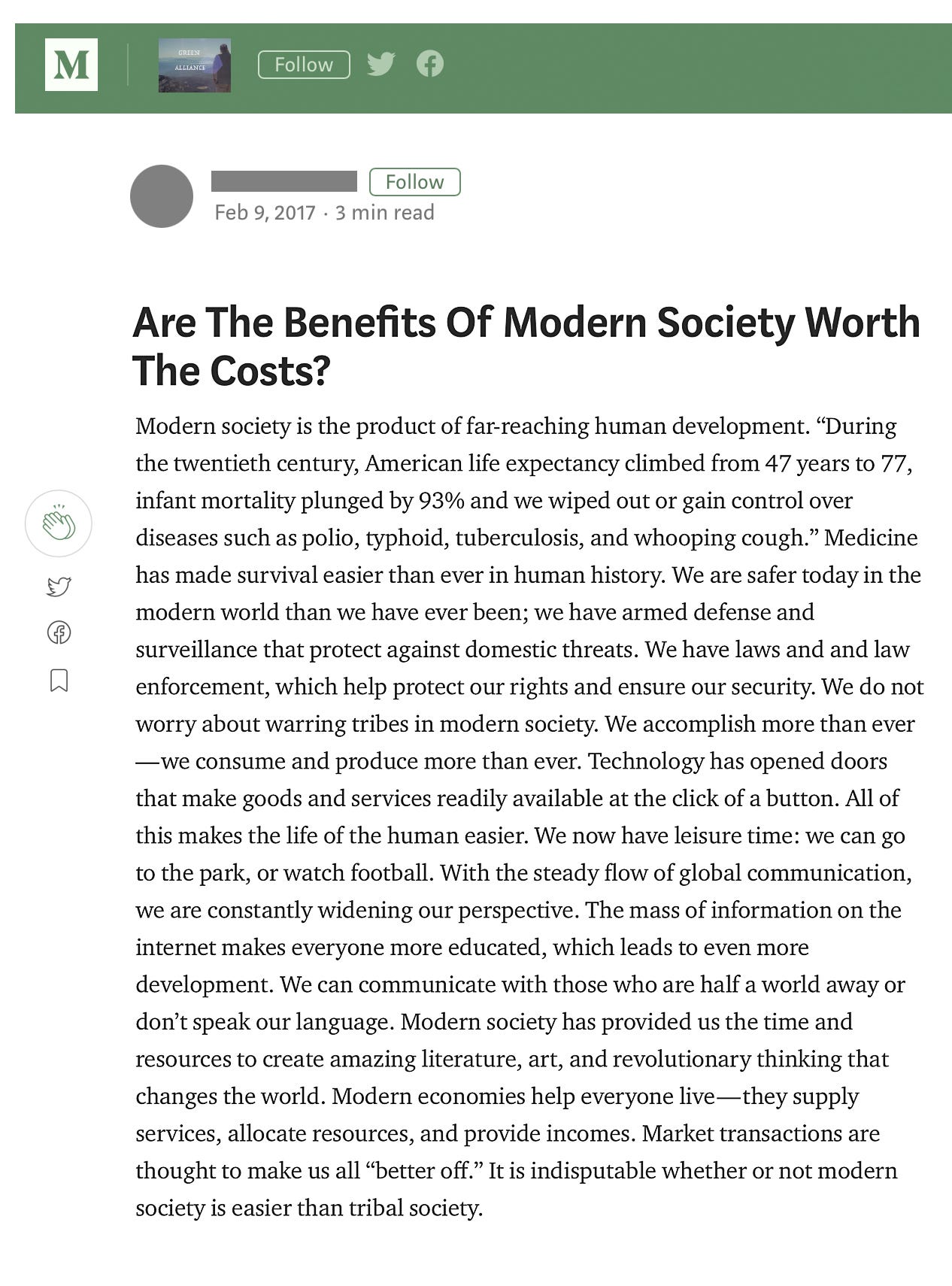
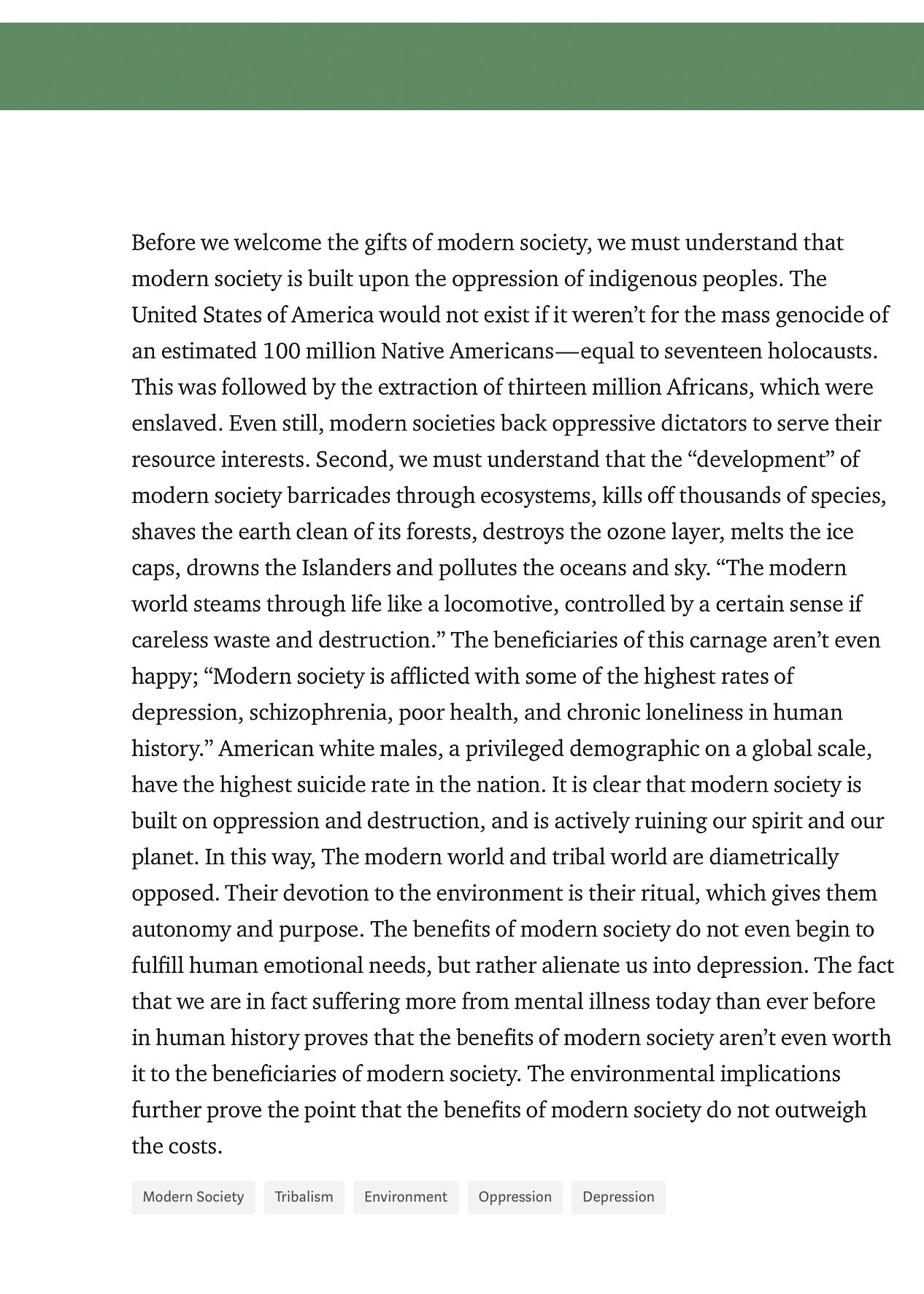
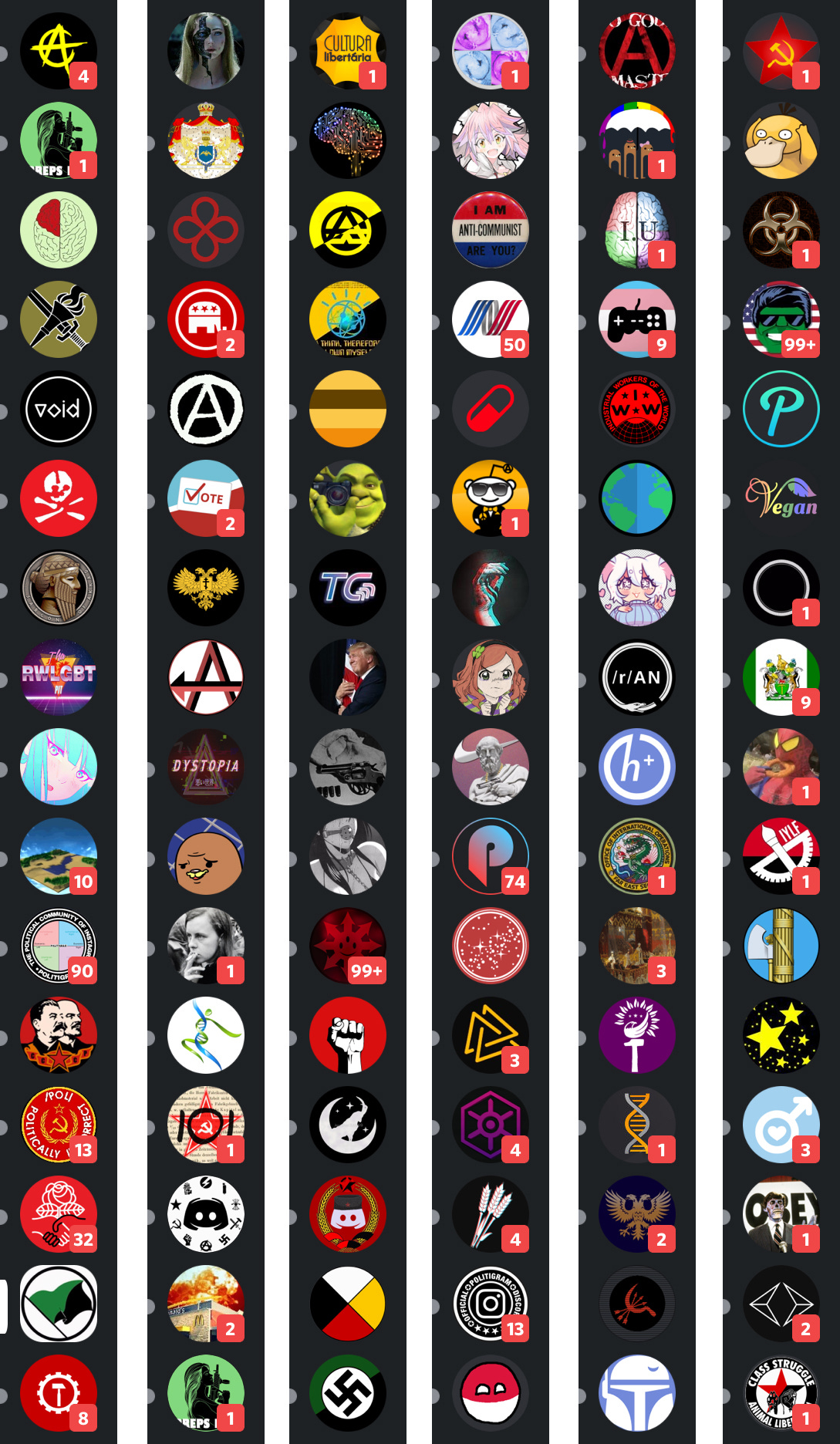
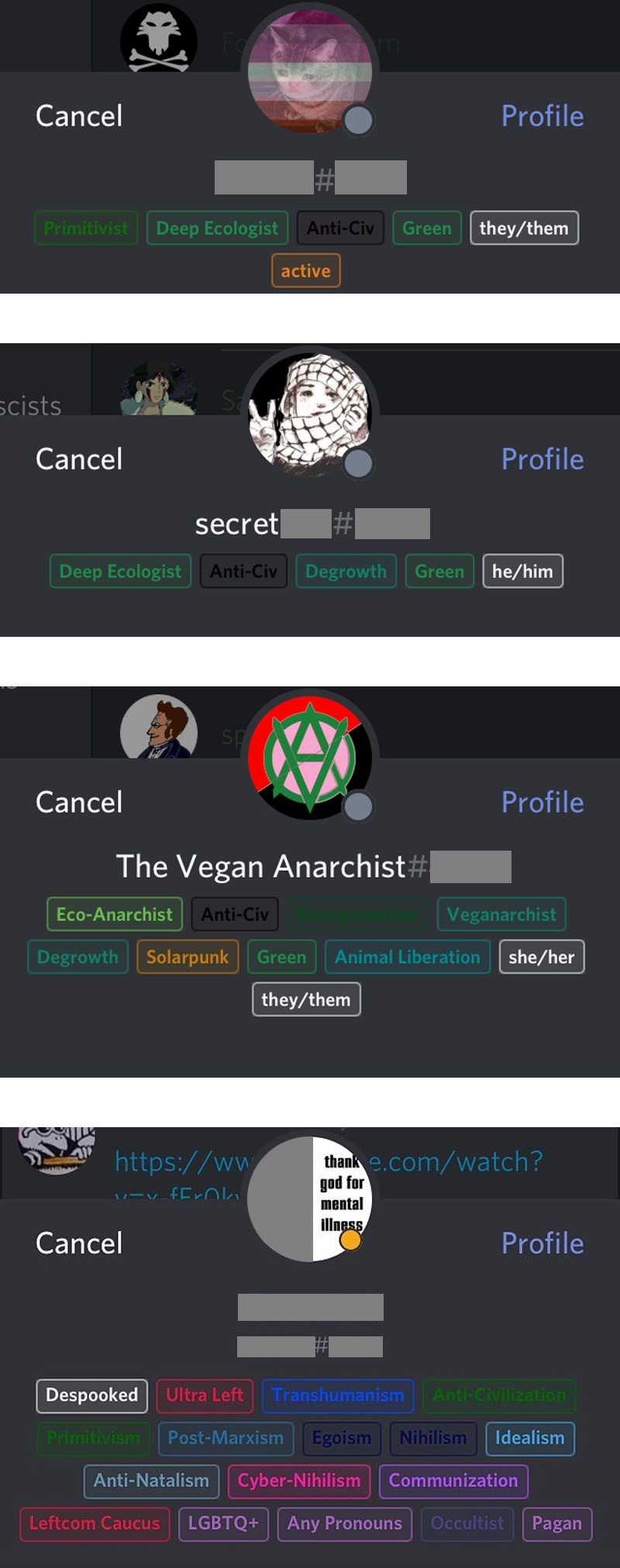
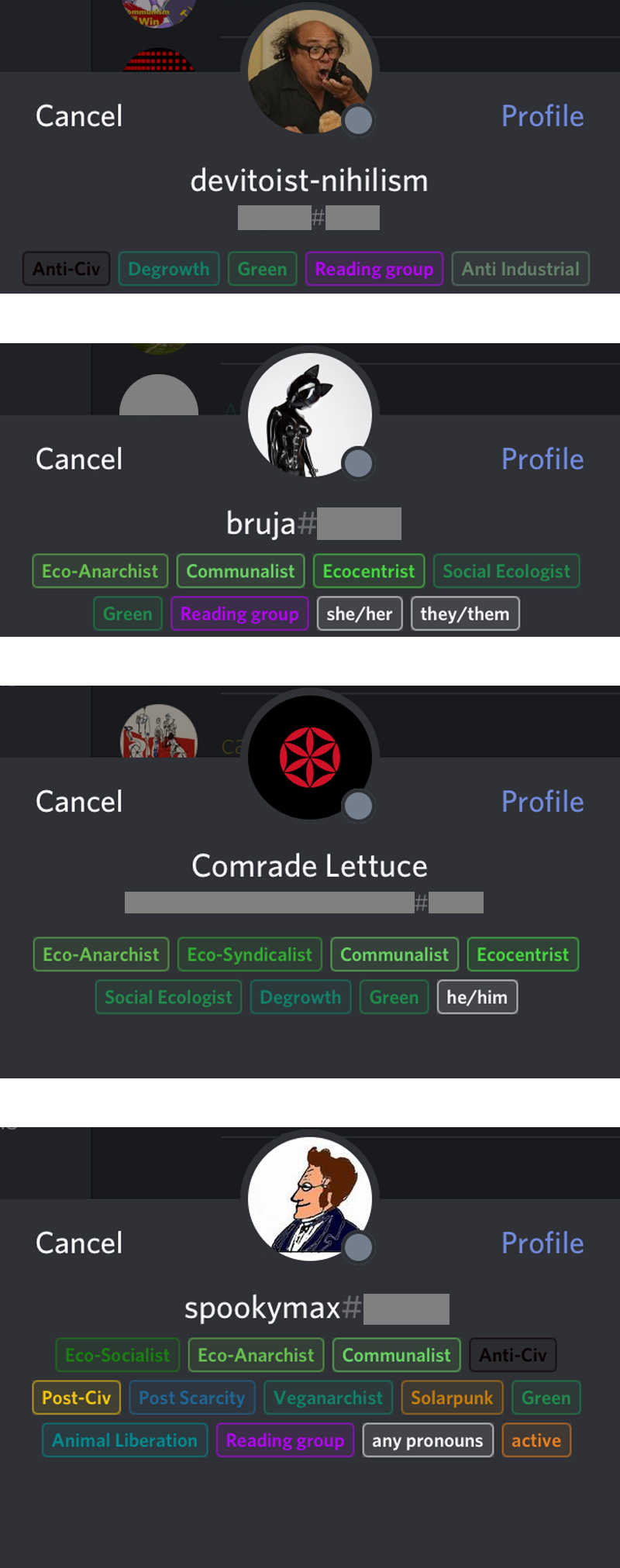
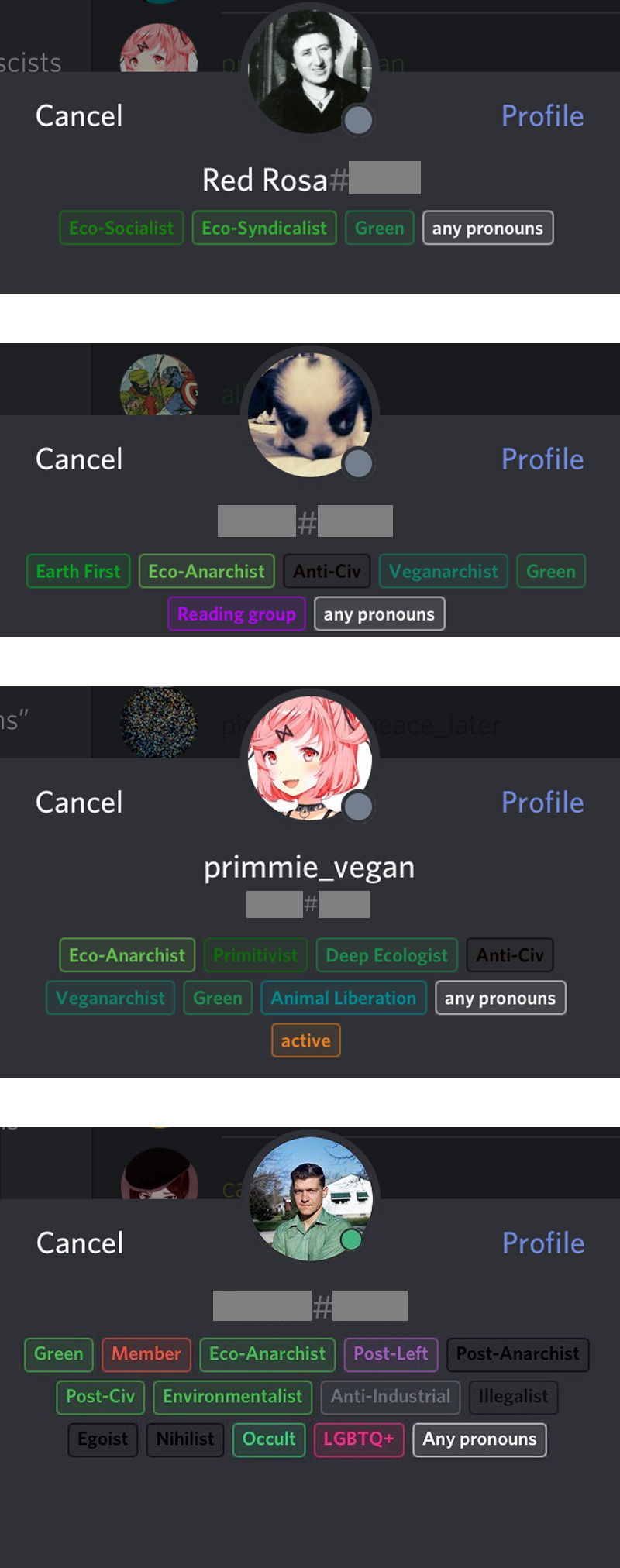
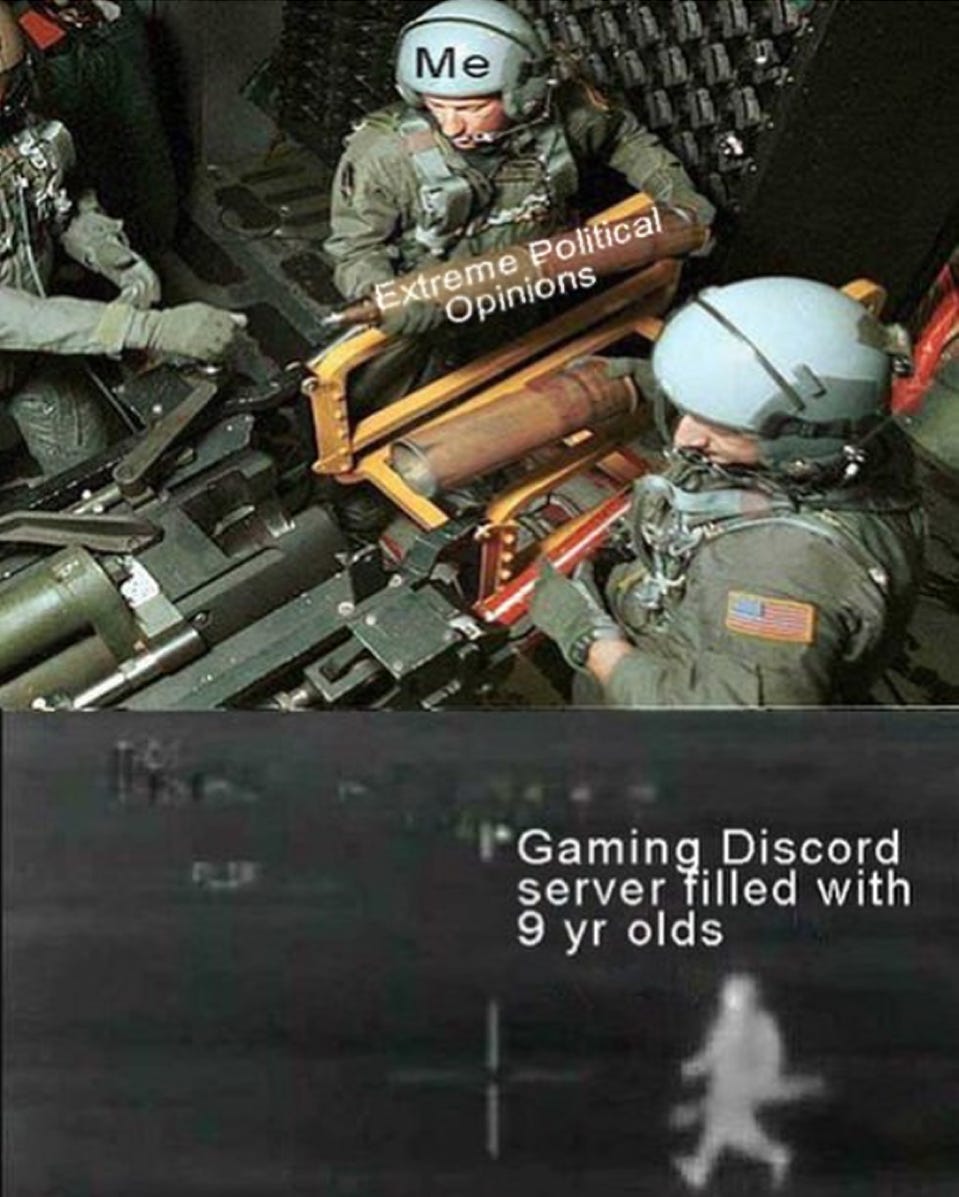
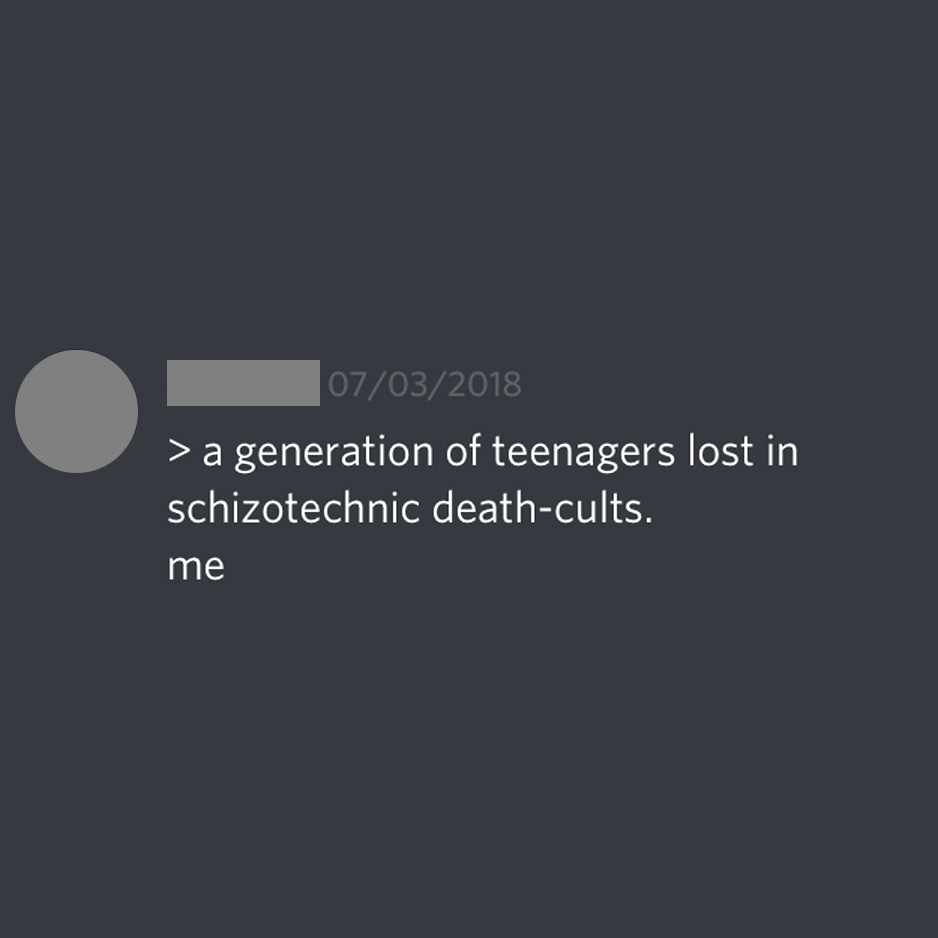
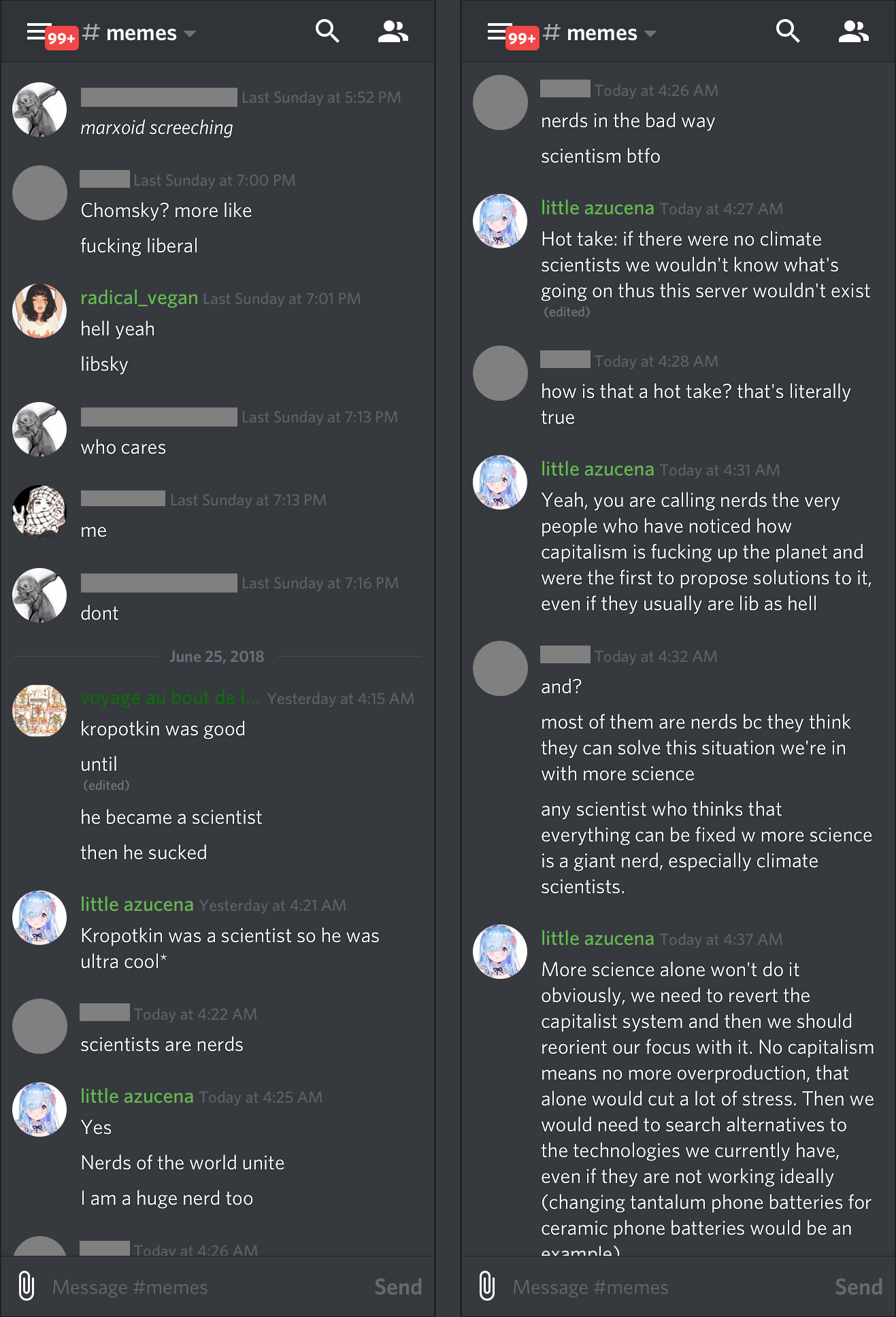
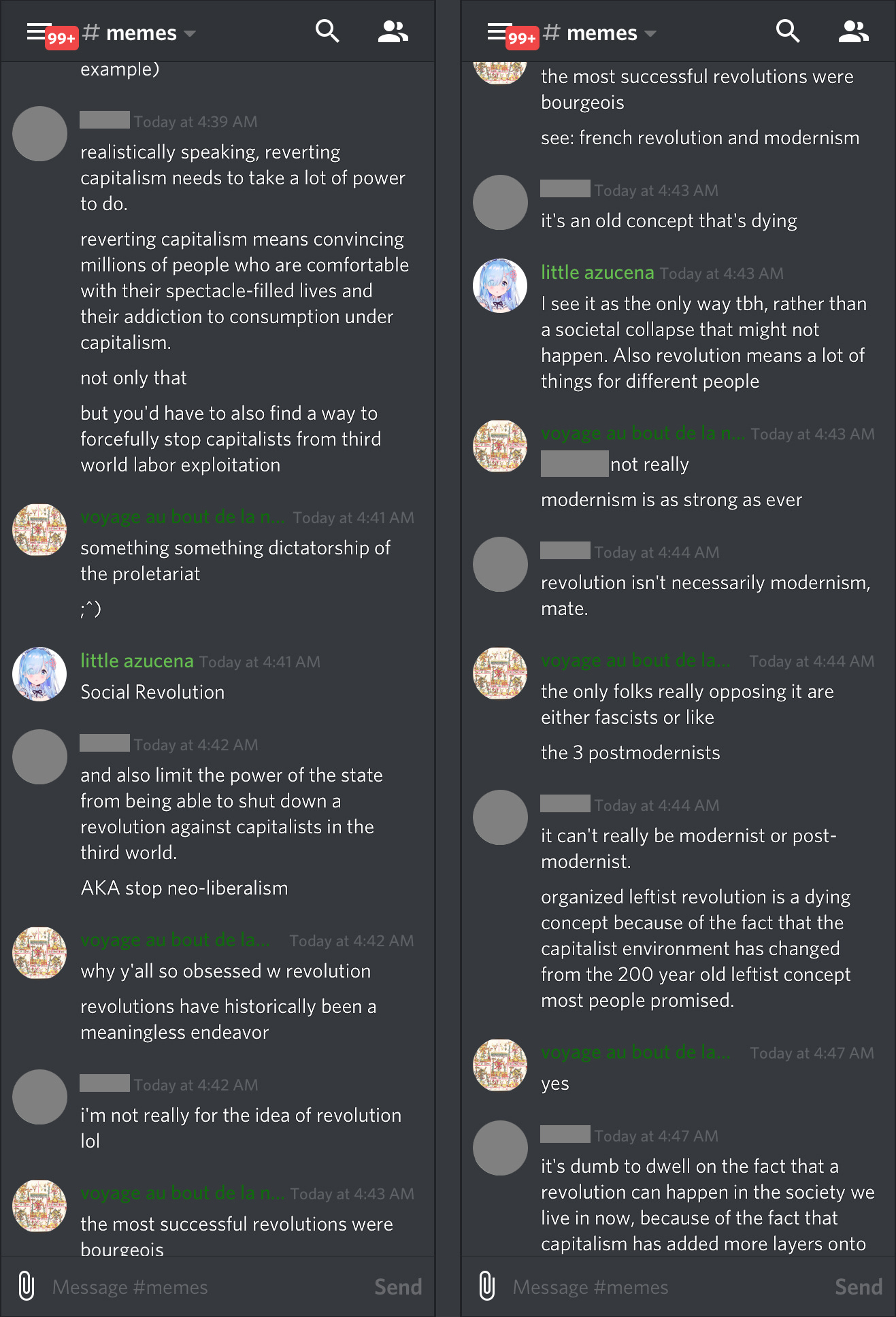
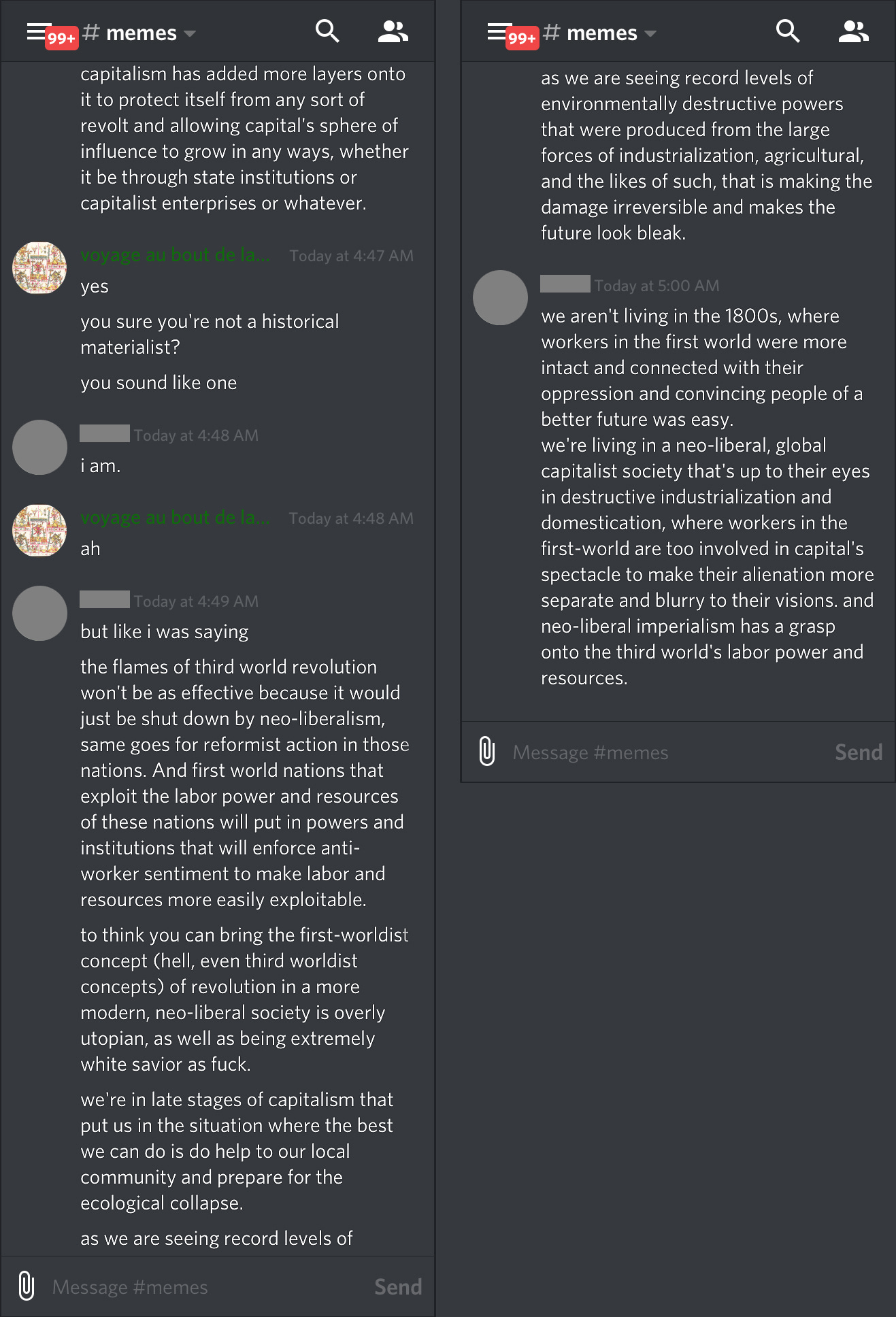
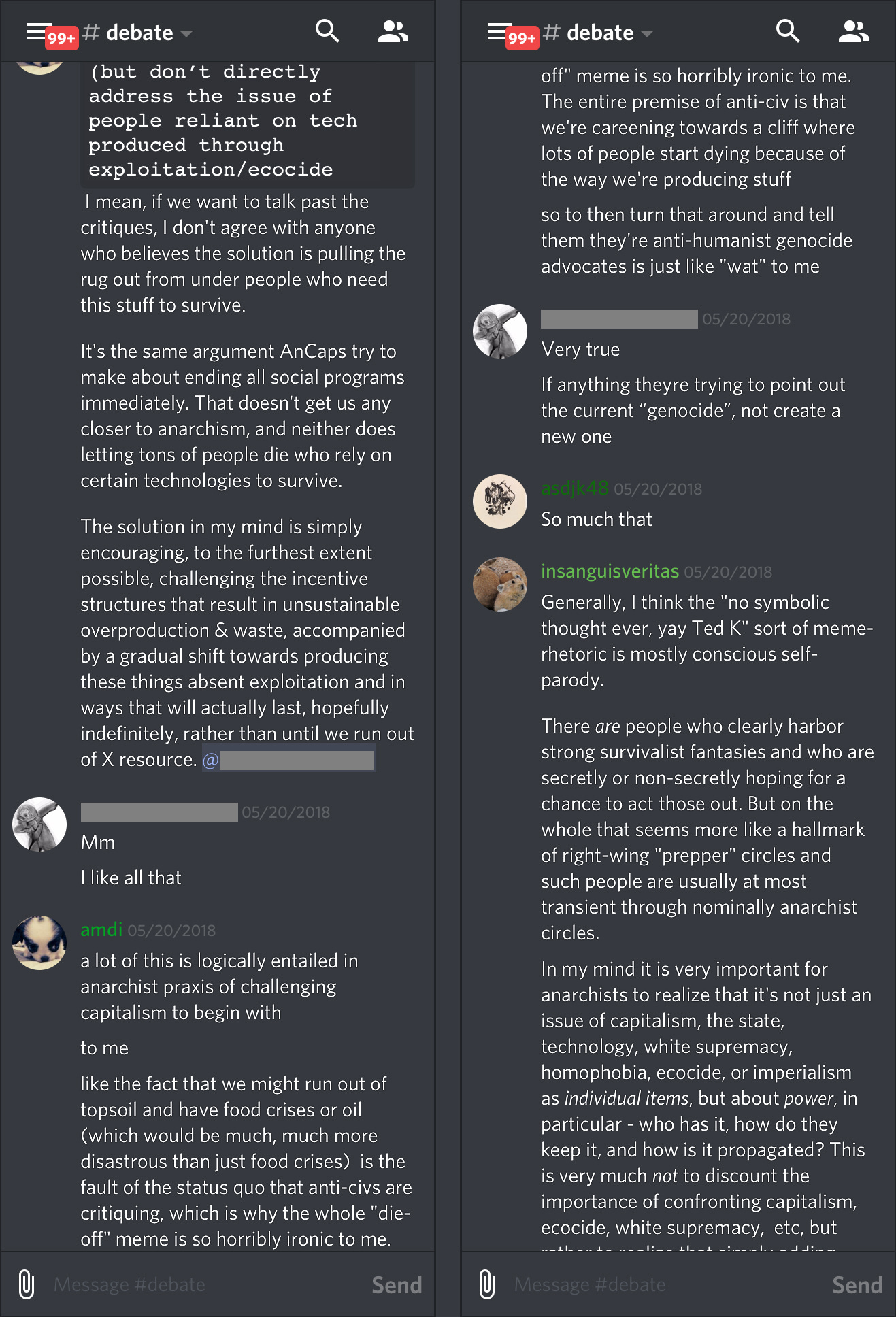
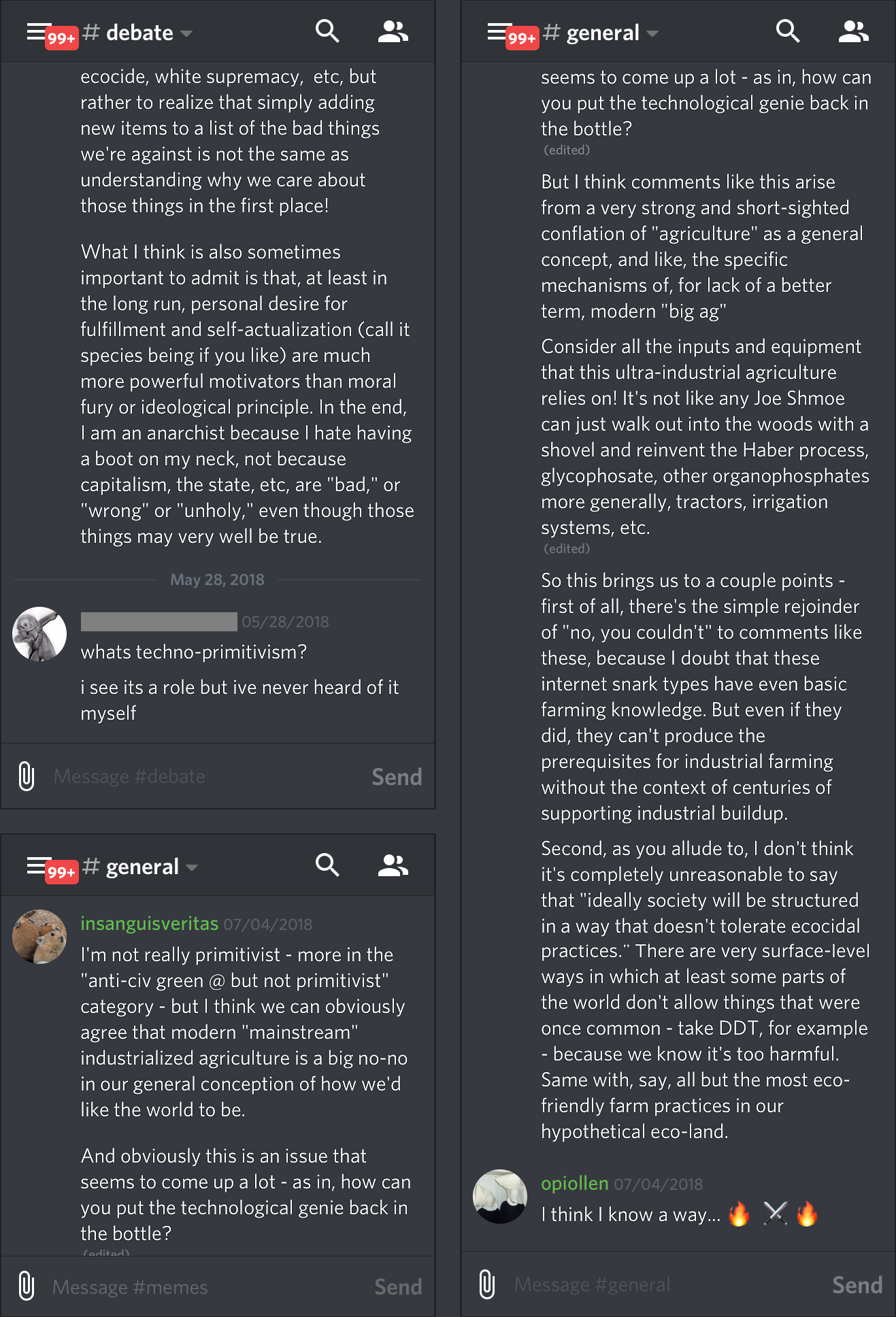
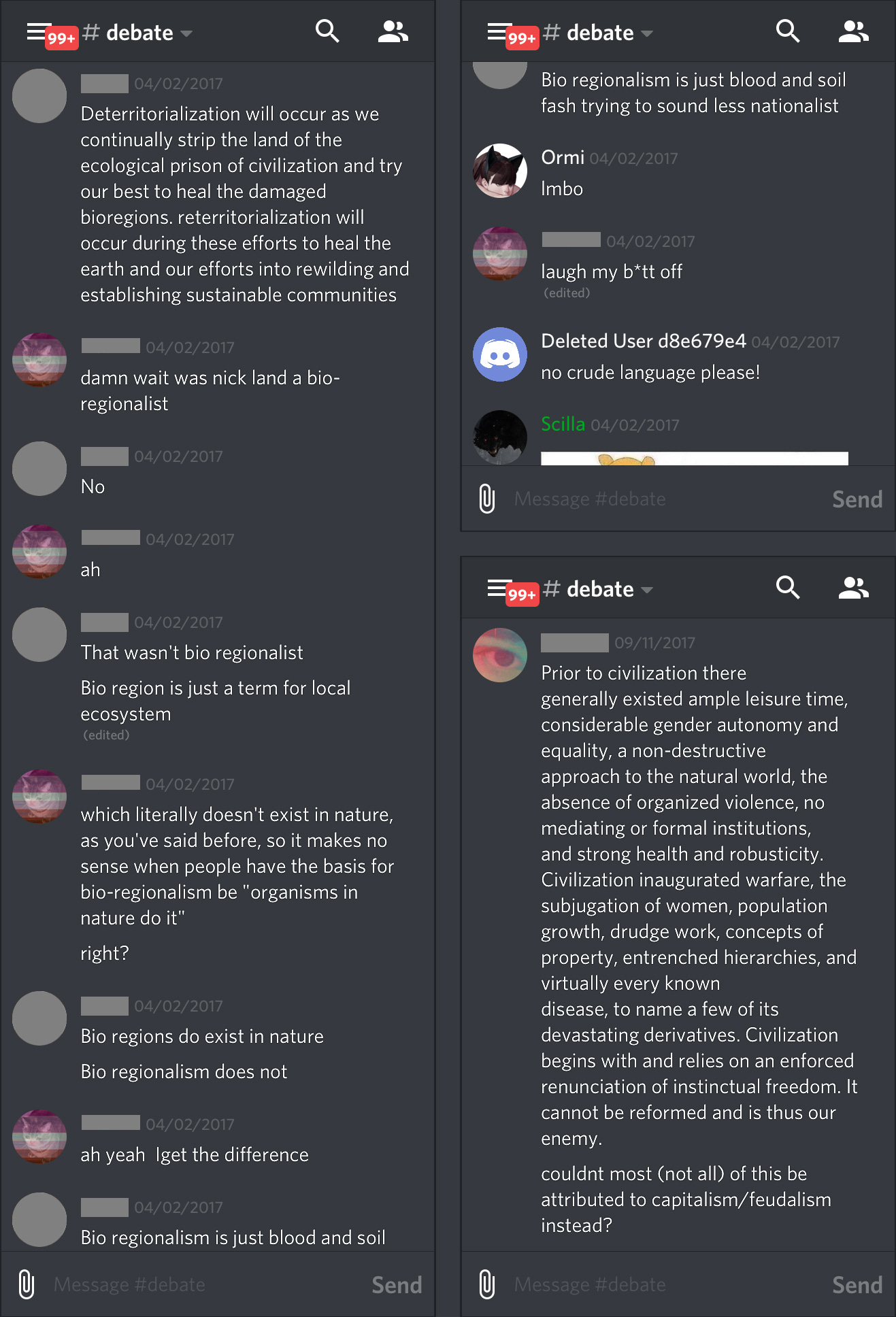
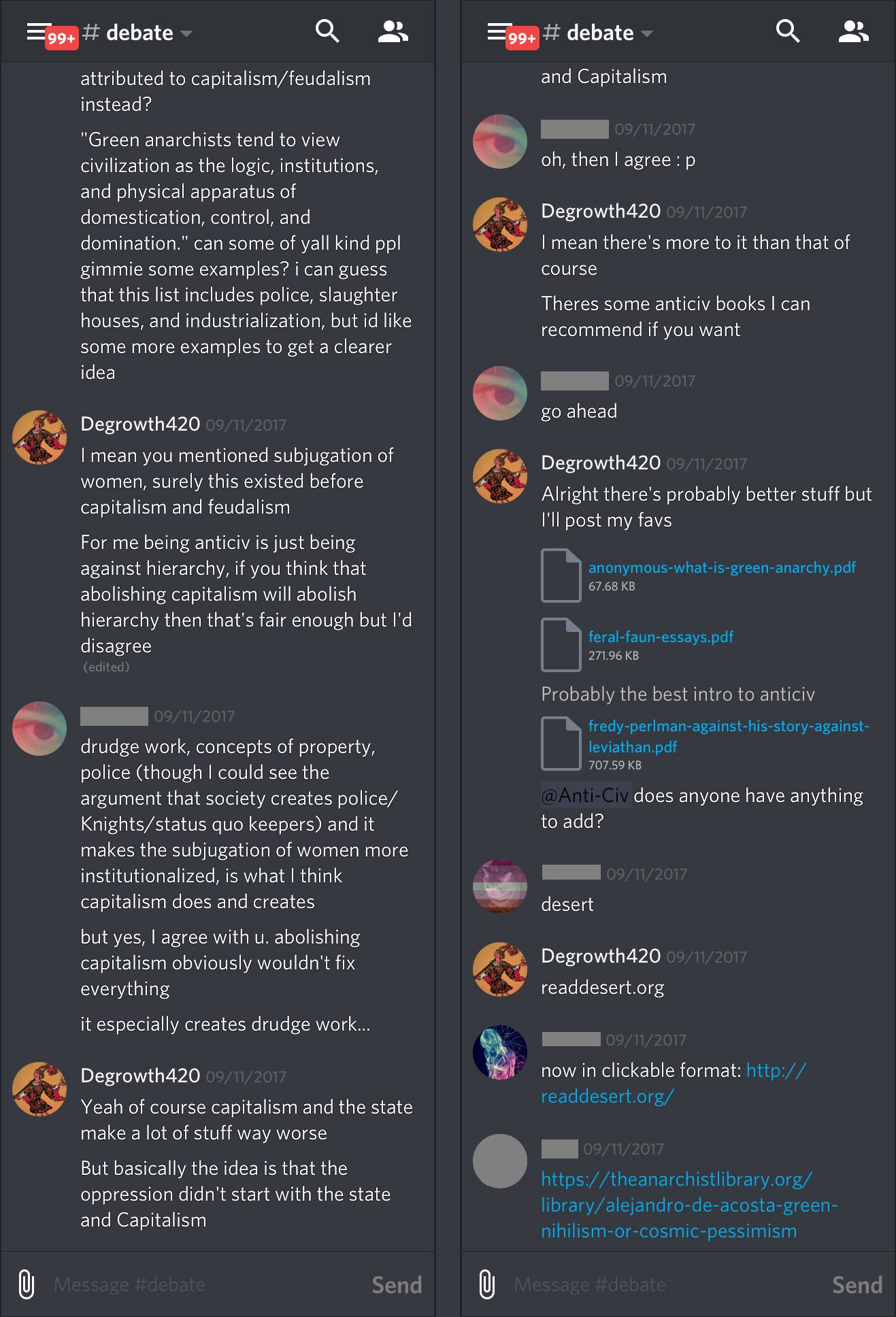

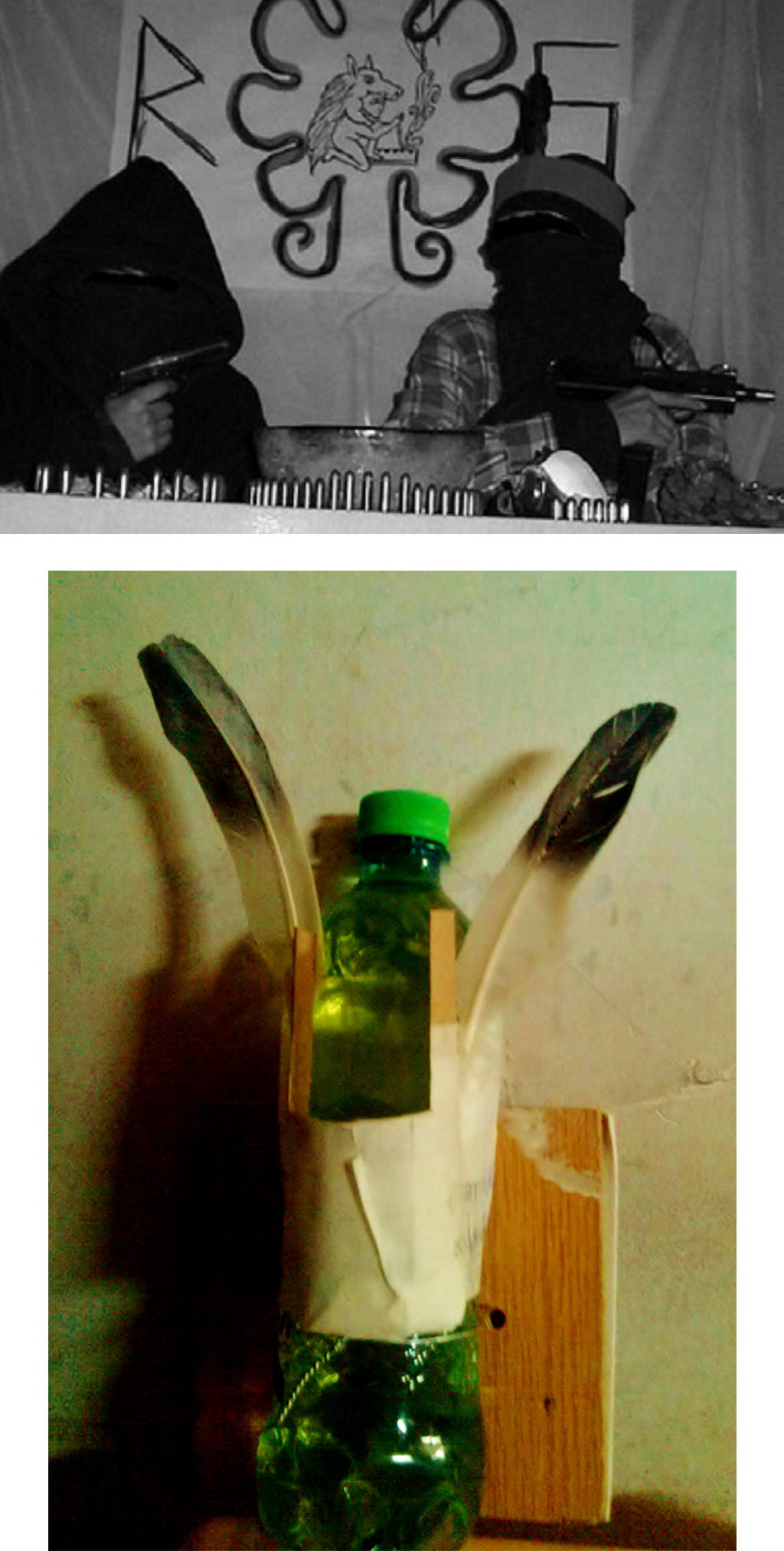









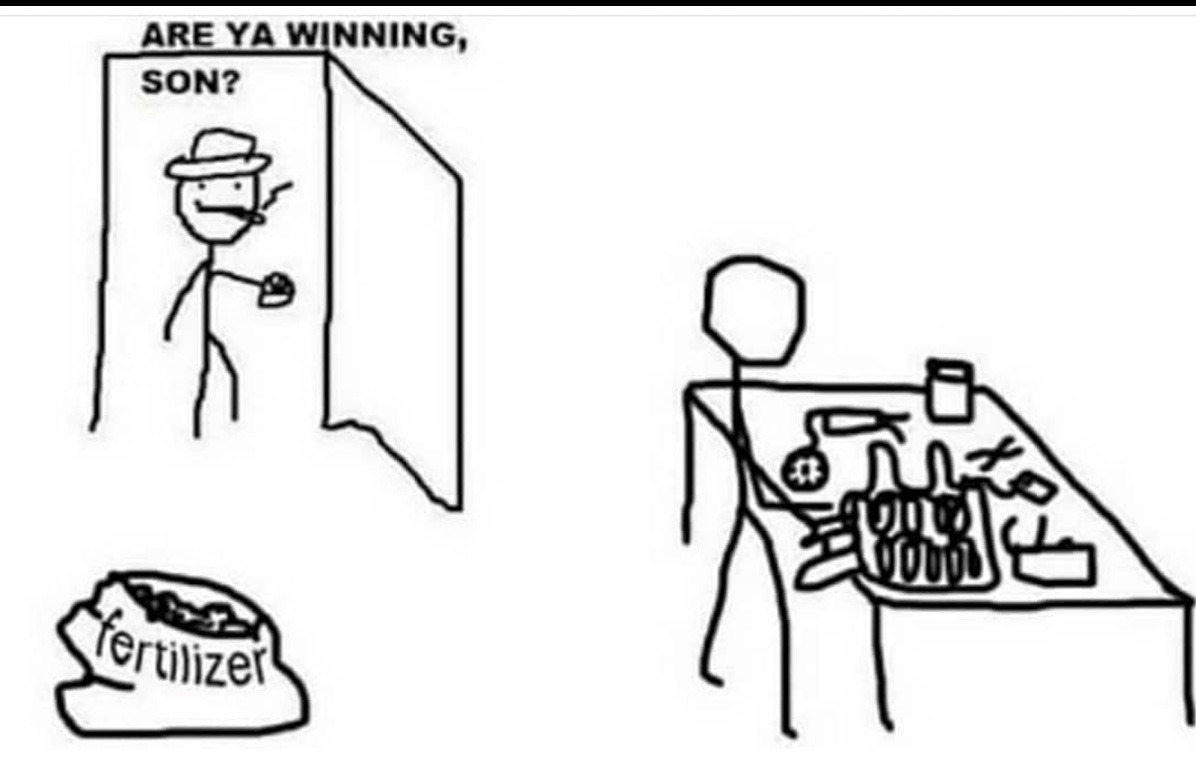
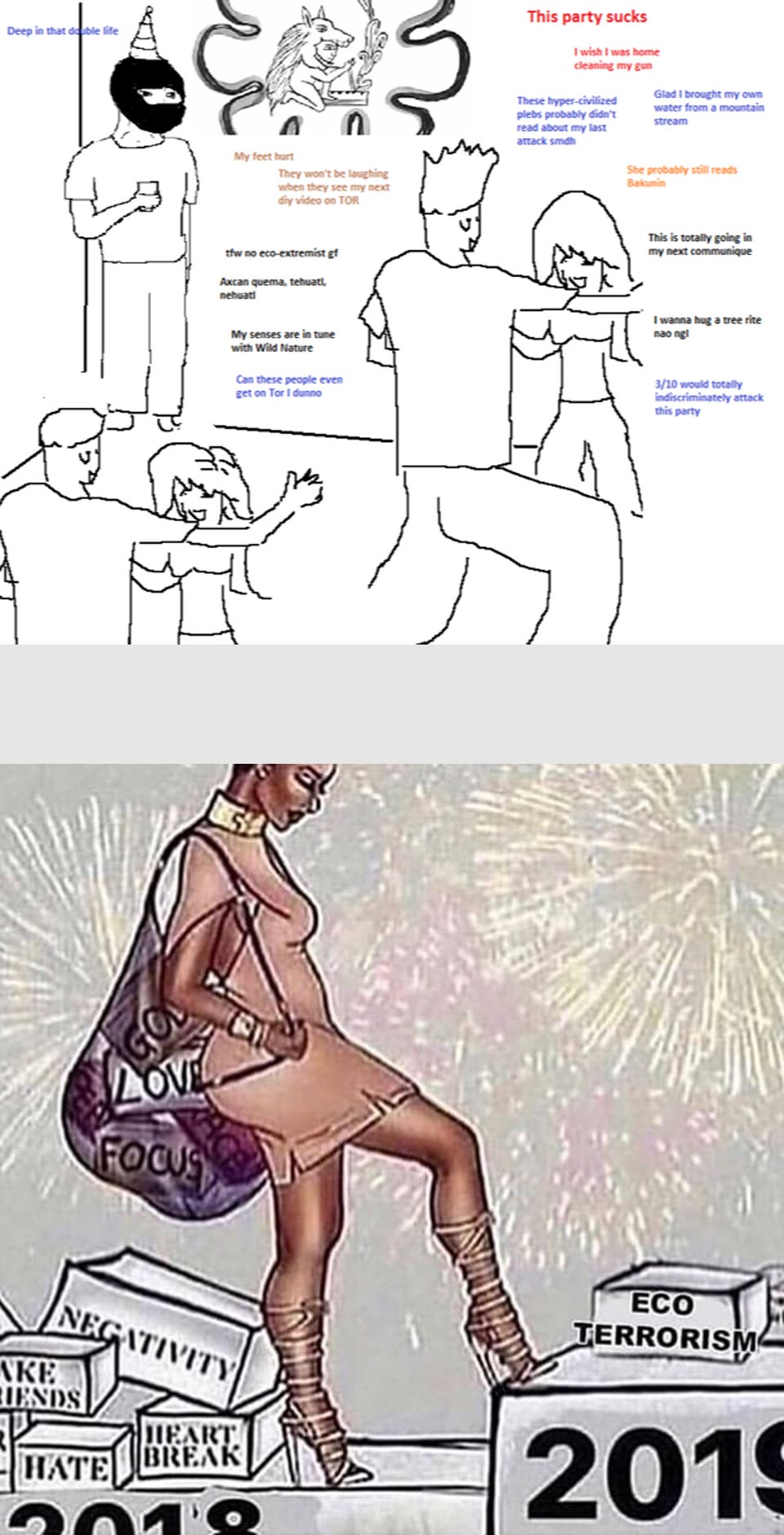

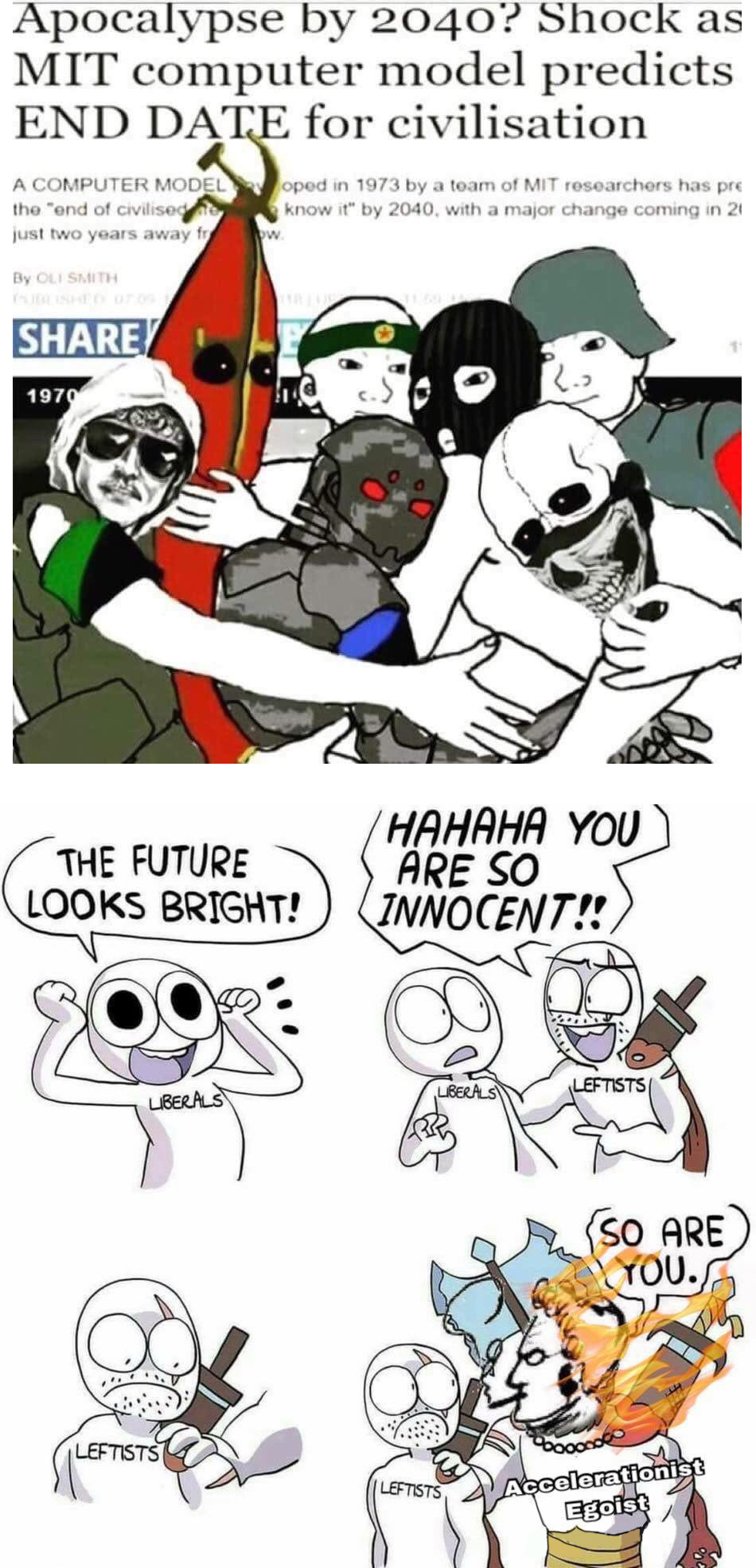
this essay and documenting by joshua has been very helpful for an essay i've been working on. i've been formulating some thoughts on the "end of history" with how we've seen a shift in the means by which radical thinking is presented....
past rebellions were swiftly commodified and reabsorbed into the system, or the status quo (cc 2008). today's political meme culture and more fluid ideologies present a new kind of dissent....one that attempts to be more volatile to avoid being co-opted, too self-aware to be tamed.
there's something constantly drawing us towards subverting established power structures while not being shackled to predefined ideological categories. this is where political memes, for example, come into play. they've become tools for reframing serious political ideas in ways that don't fit neatly into the narratives of the current structure (or predicted structure).
memes are used to mock, distort, and undermine, thus creating a chaotic form of dissent that defies traditional methods of control and resist the structure's attempts to co-opt rebellion. they attempt to slip through the cracks, forcing the system to chase something it can never fully contain or categorize.
and i think this partly involves a need to reembrace some form of individuality....not the self-obsessed narcissism that is currently being pressurized....but instead a deep and unwavering sense of self that recognizes its inextricable connection to the collective (class, consciousness, society, world, nature, all the above).
maybe an egoism in the Stirner sense, where we are inevitably interconnected, yet recognize a need for an individual ego to navigate the structure. and continue the attempt to break free of the closed loop that i think many younger people are finding difficult to break out of....they wish to escape their sense of an "end of history."
so by refusing to be pinned down by ideological purity or moral obligation....this might serve as the necessary rupture point that allows for new forms of rebellion, which are dynamic, fluid, and difficult for the system to co-opt. and if the status quo structure or system fails to integrate the rebellion or categorize it....
then we might find ourselves witnessing moments of substantial change. the dialectic lives another day and the end of history can be moved to a later date.
give this a read.
FANTASTIC. Thank you Josh.